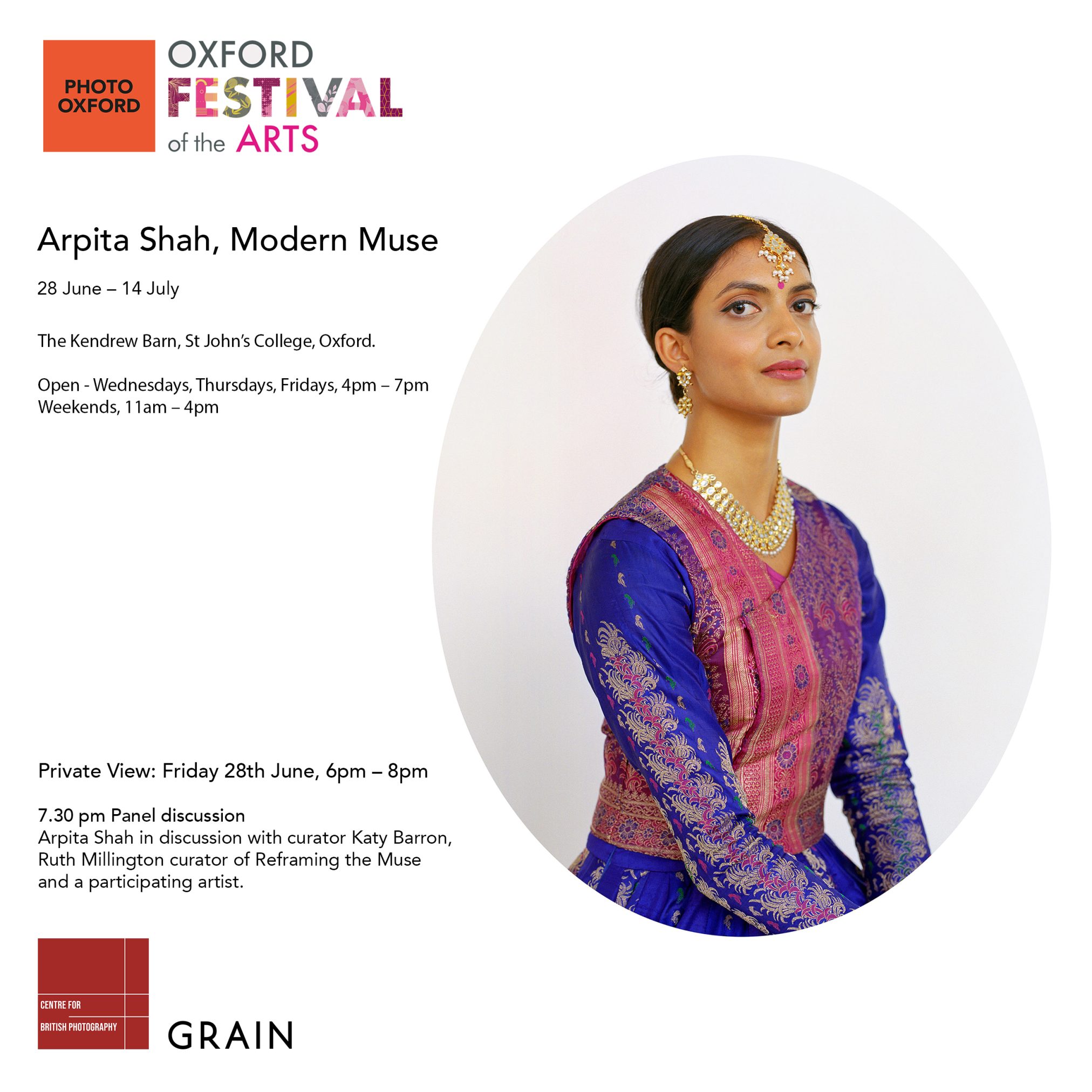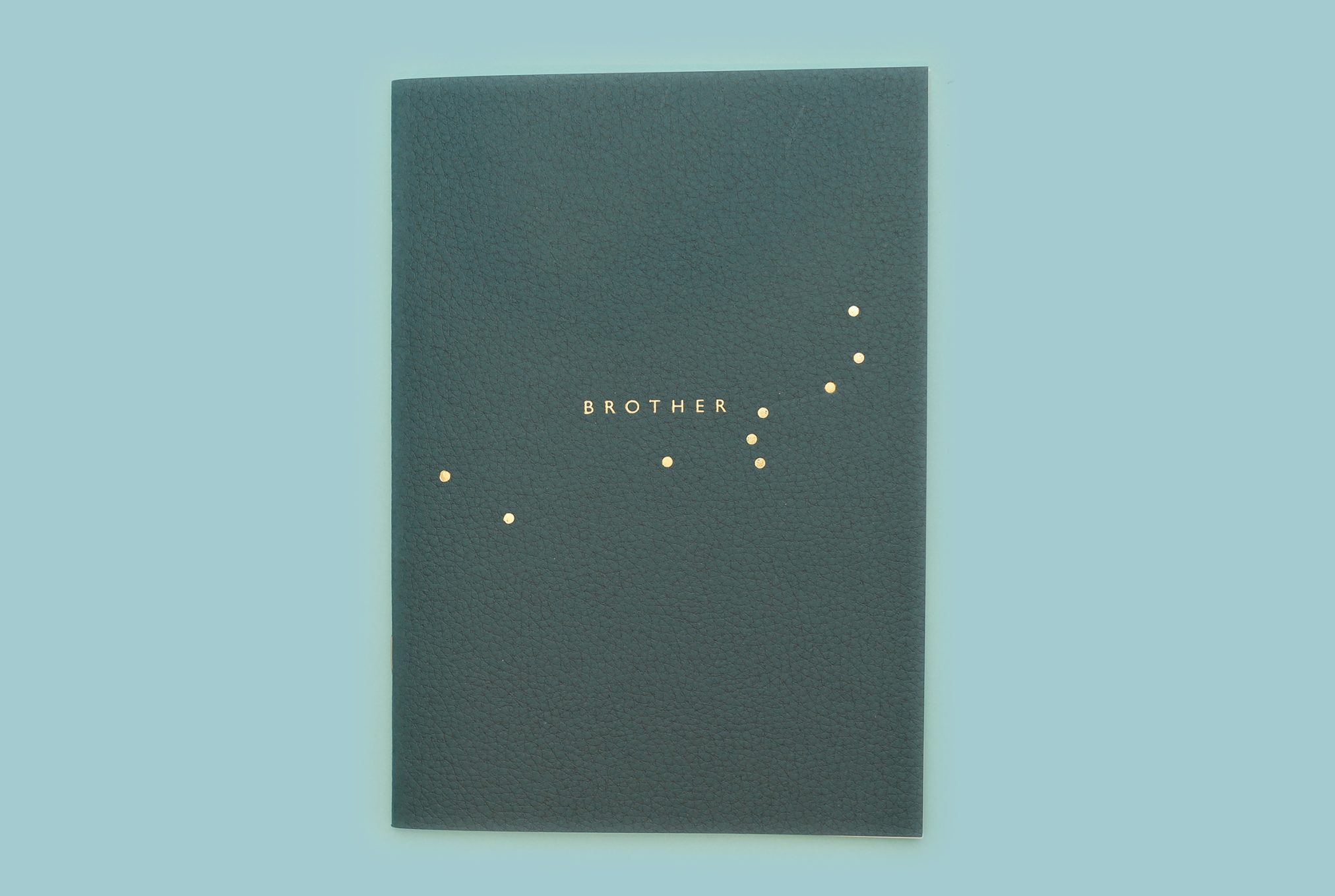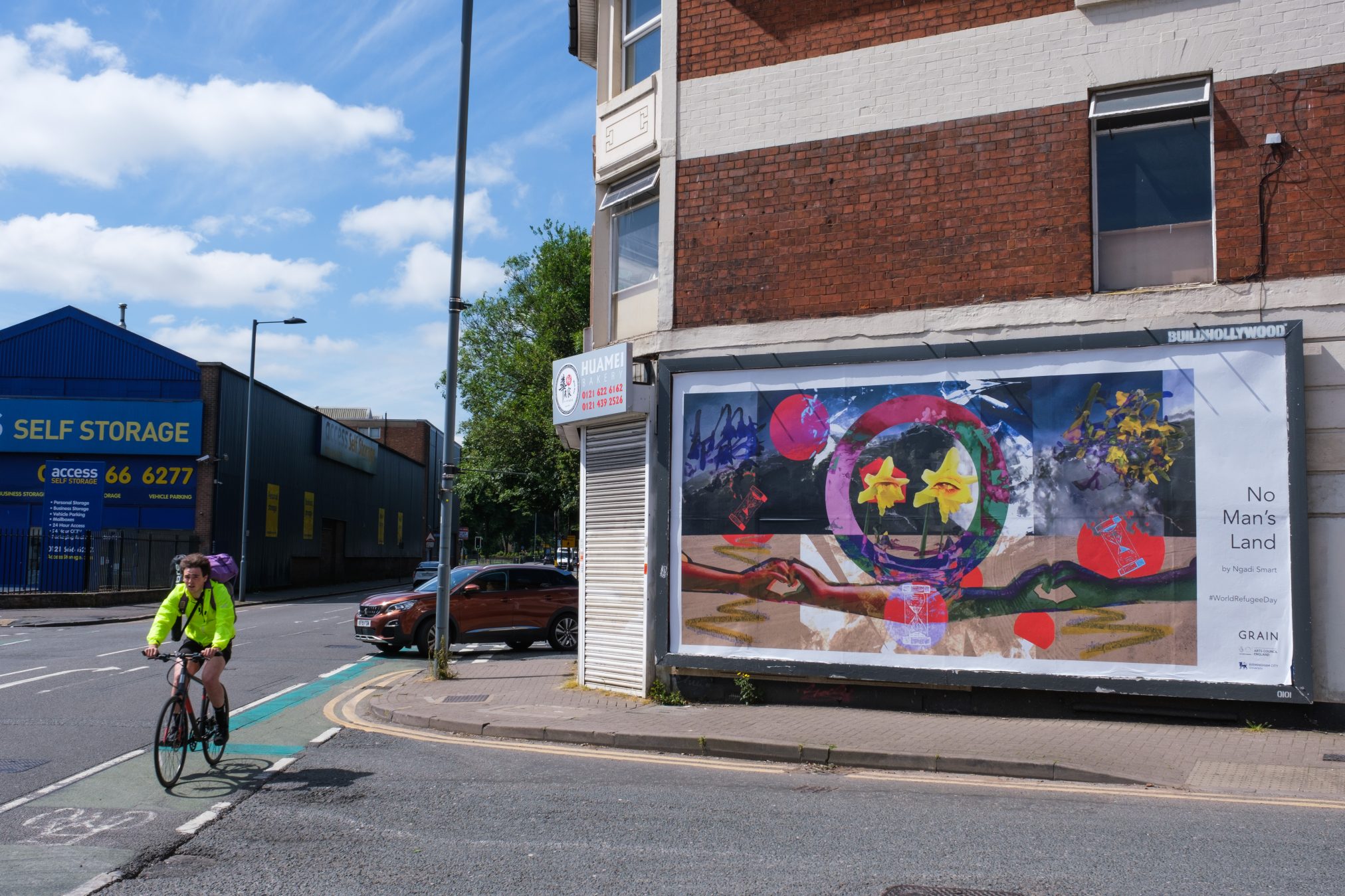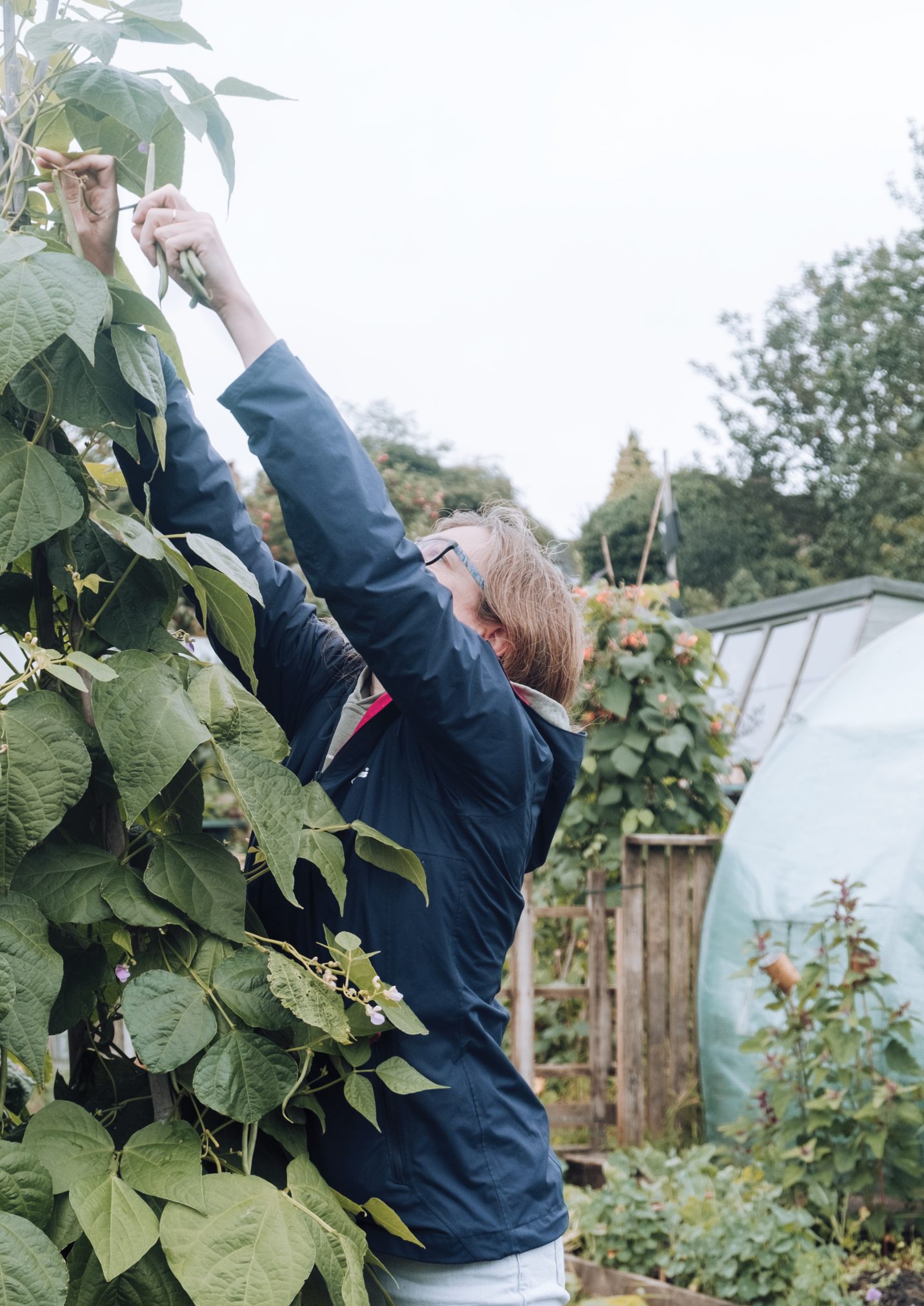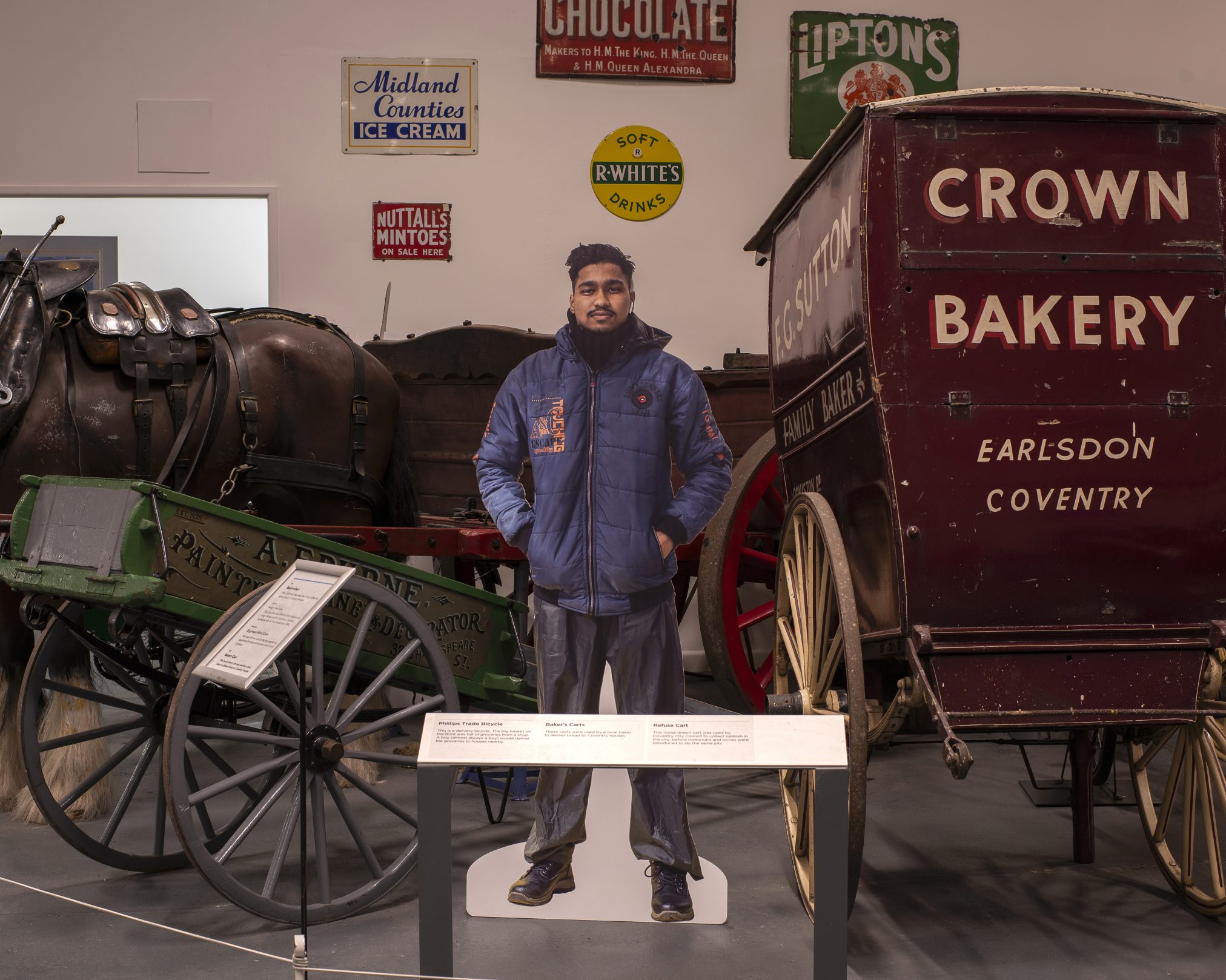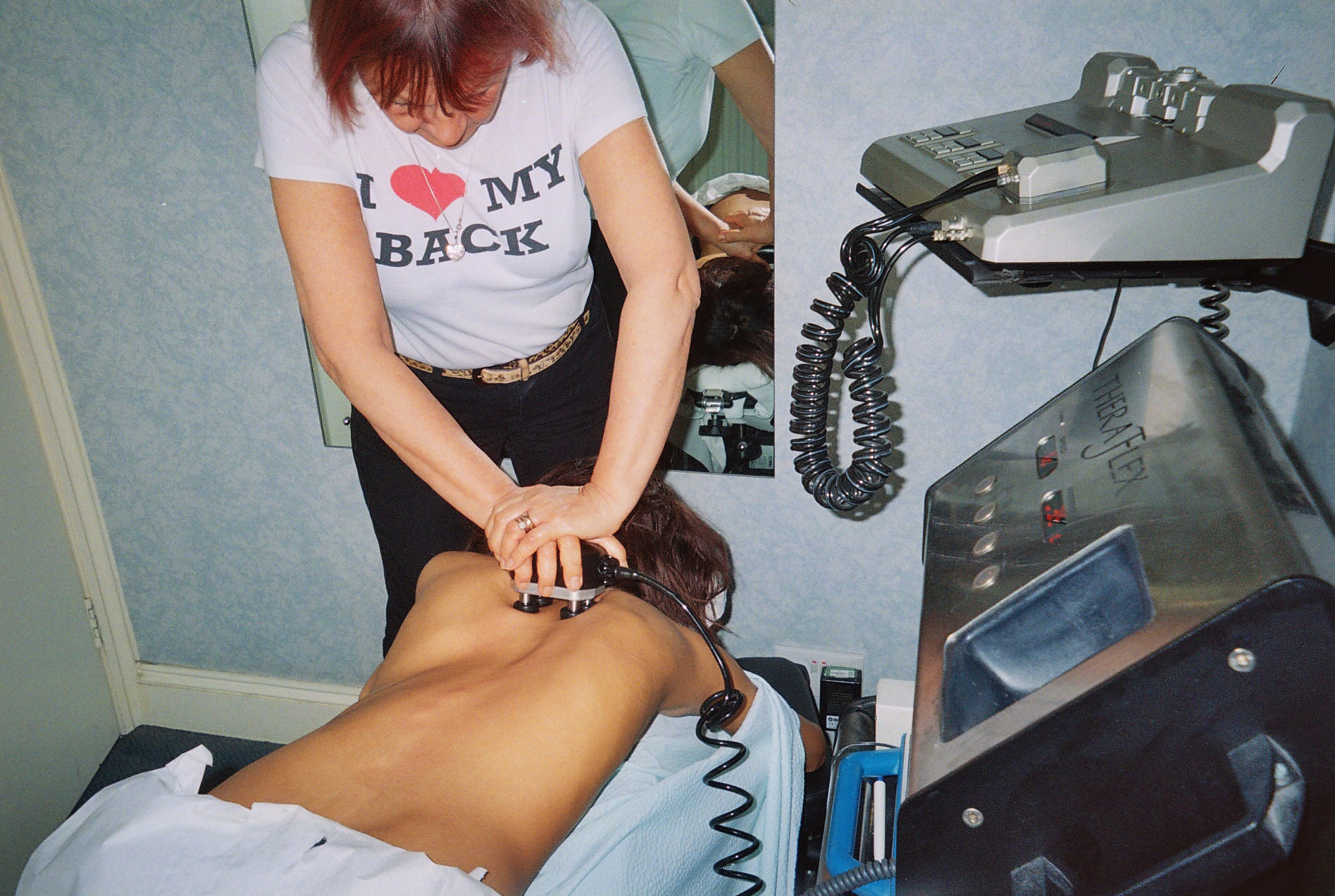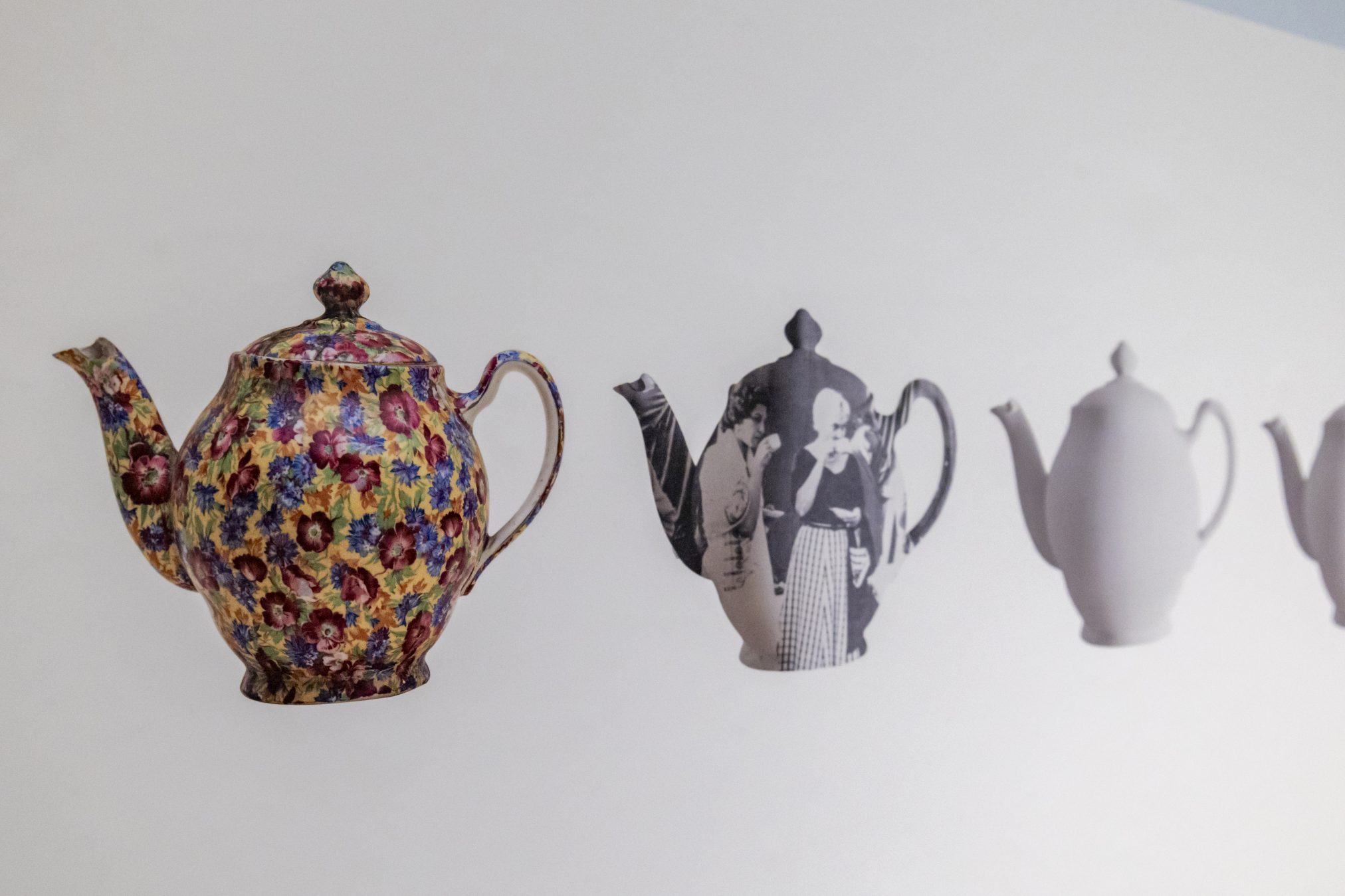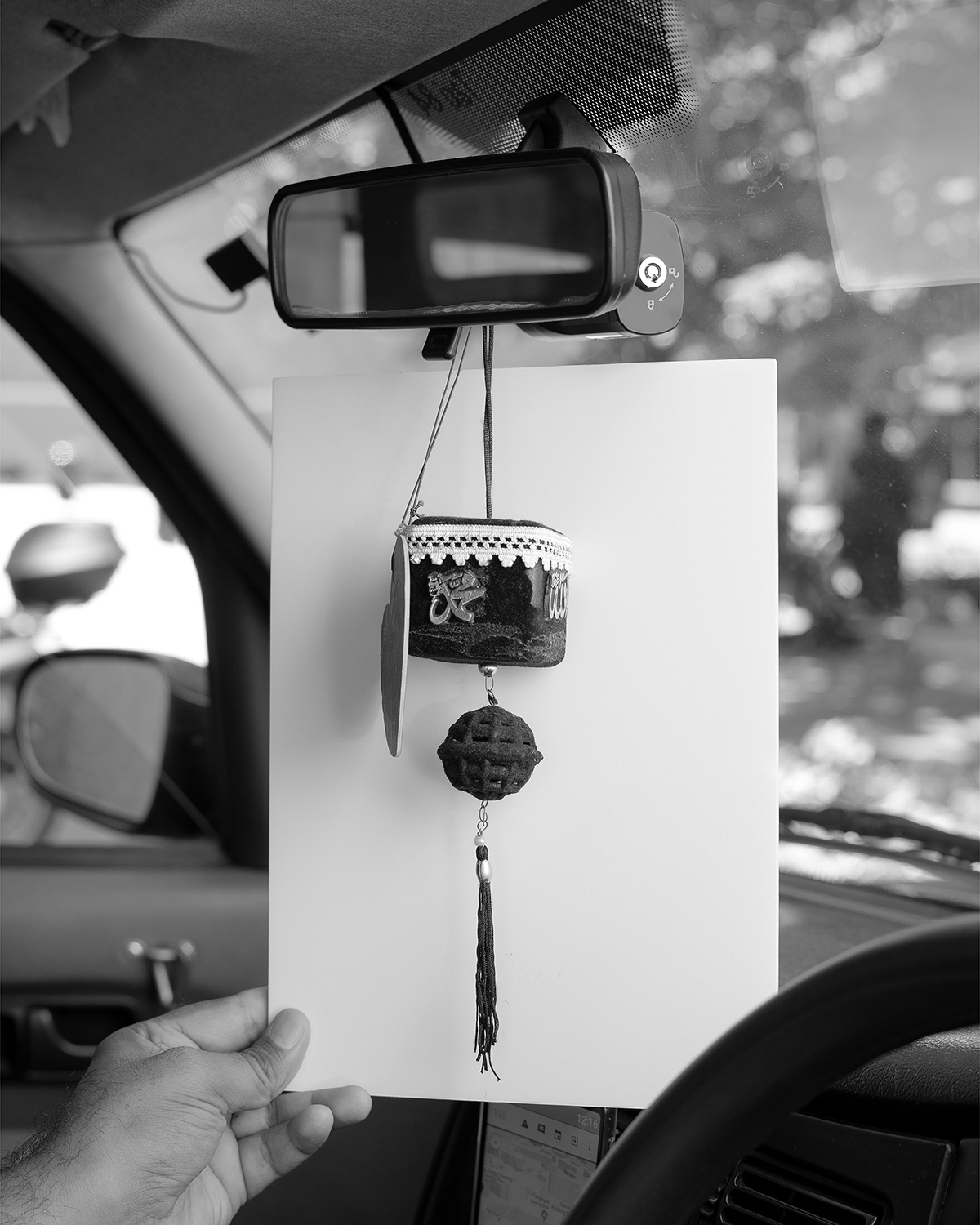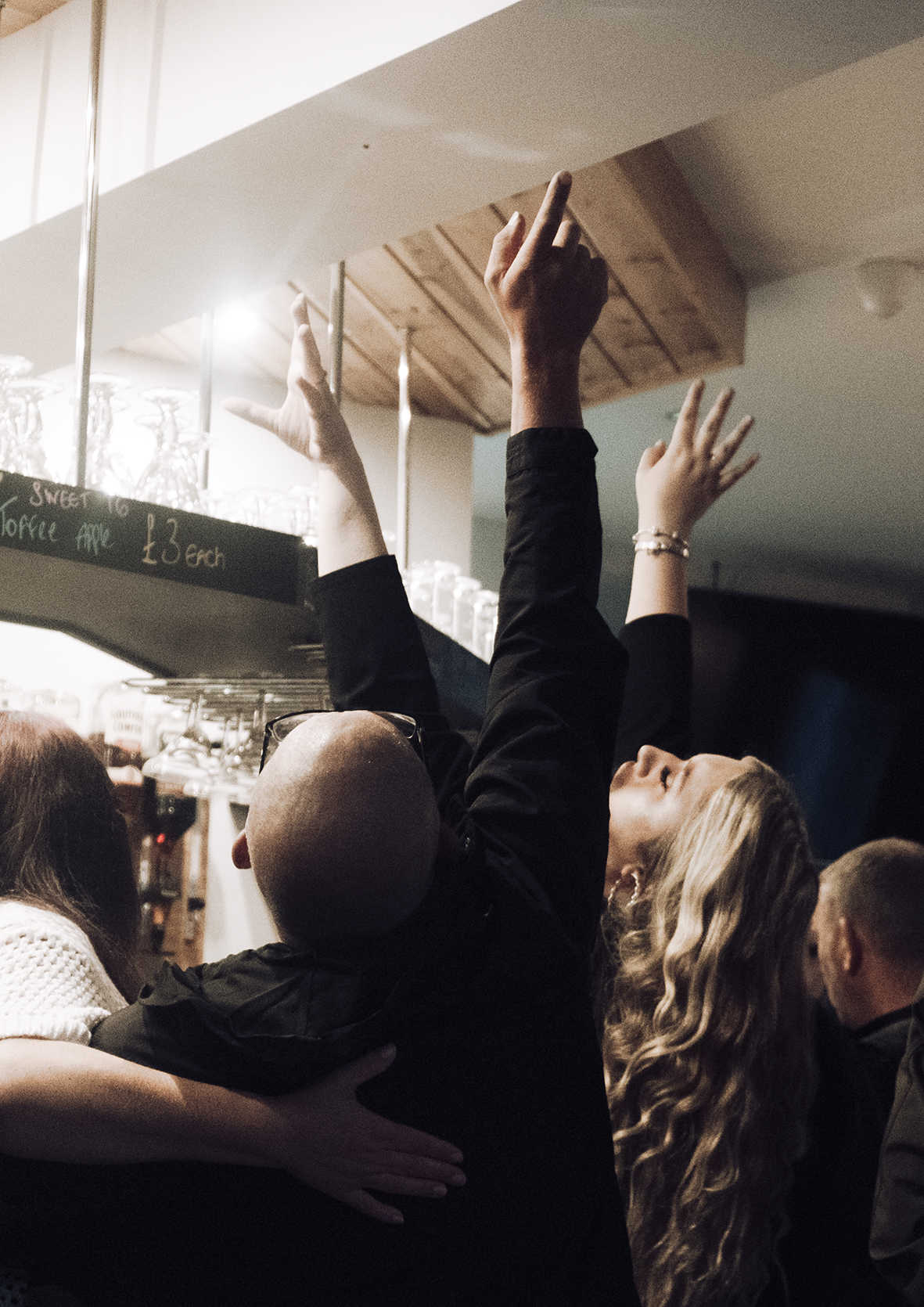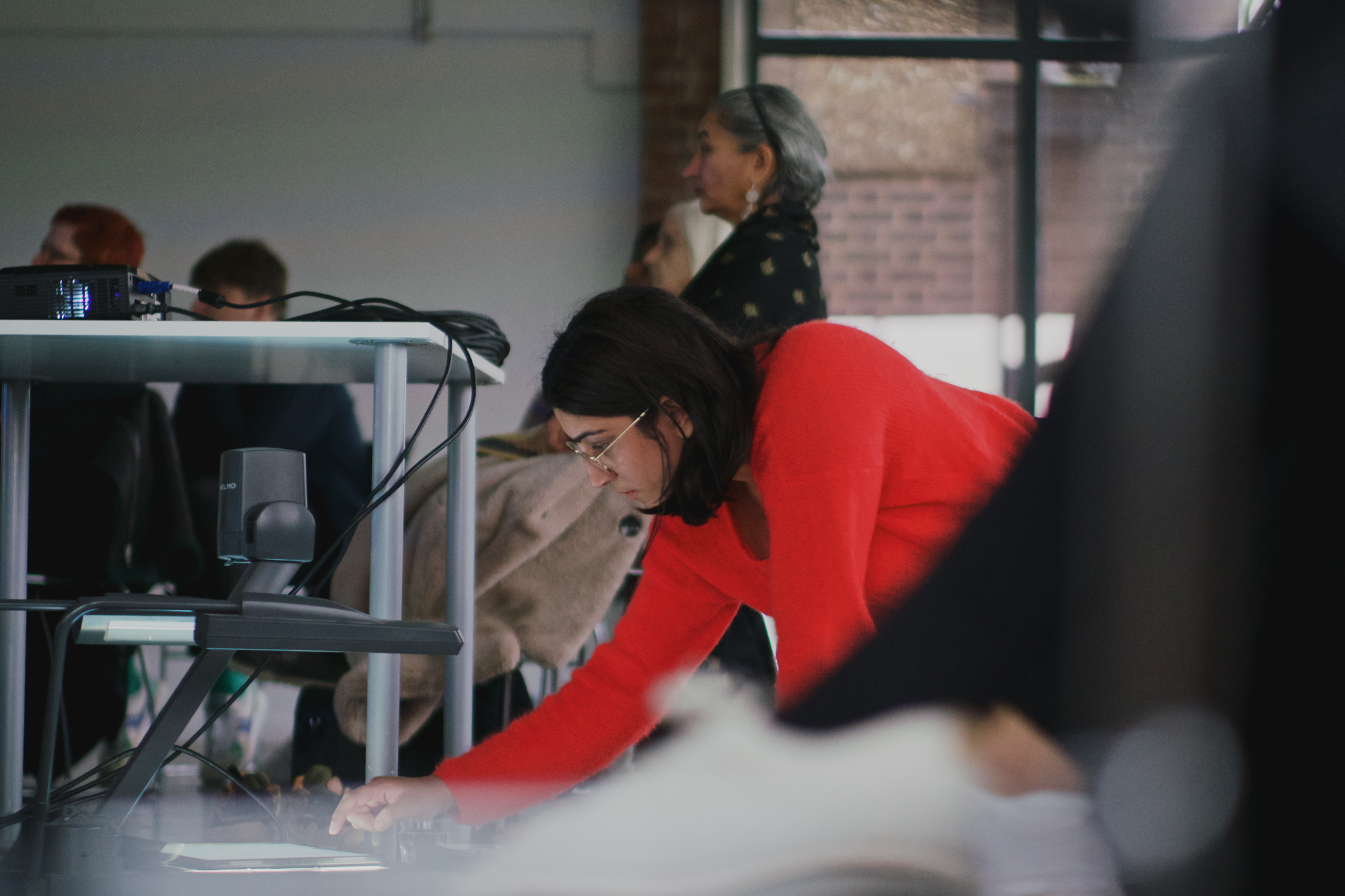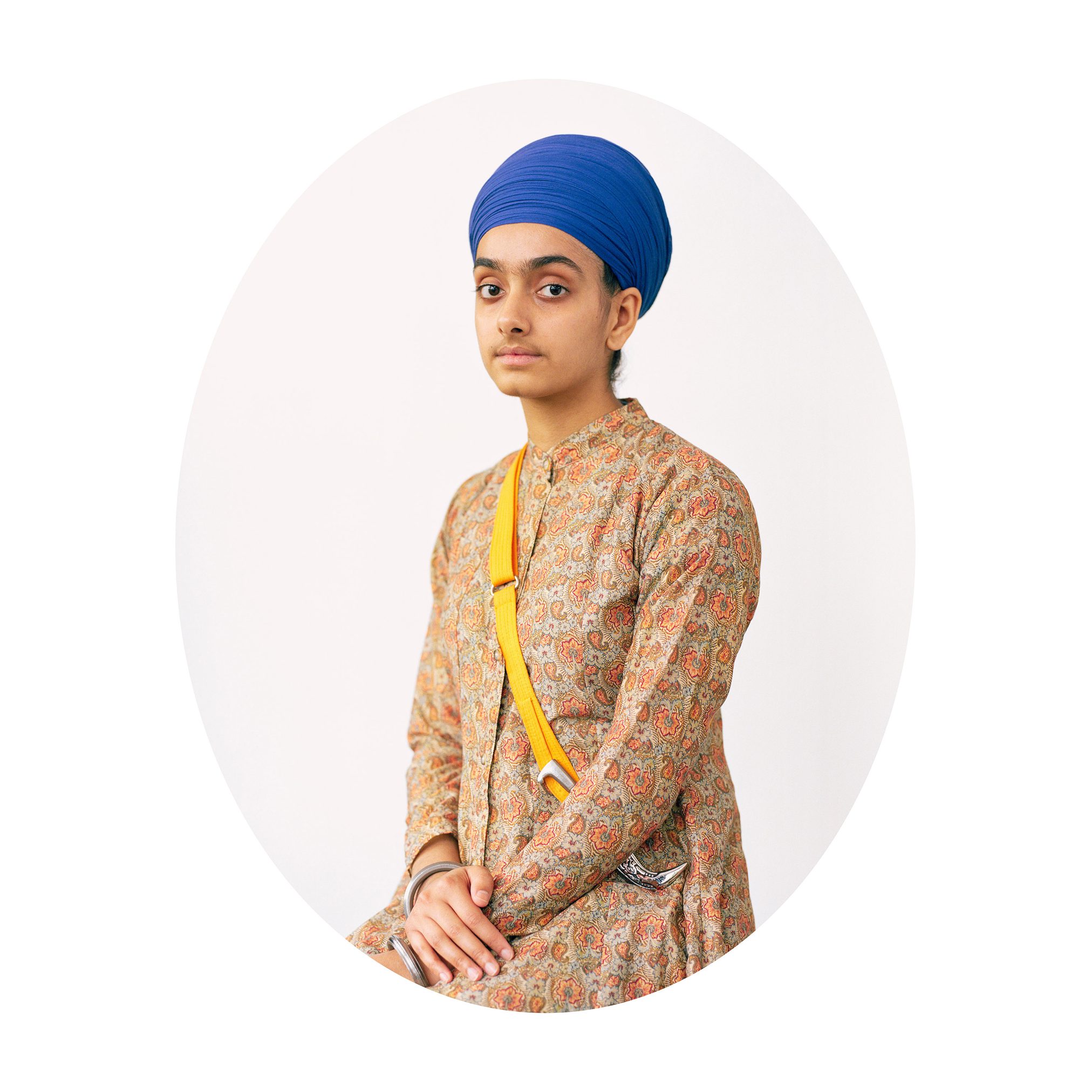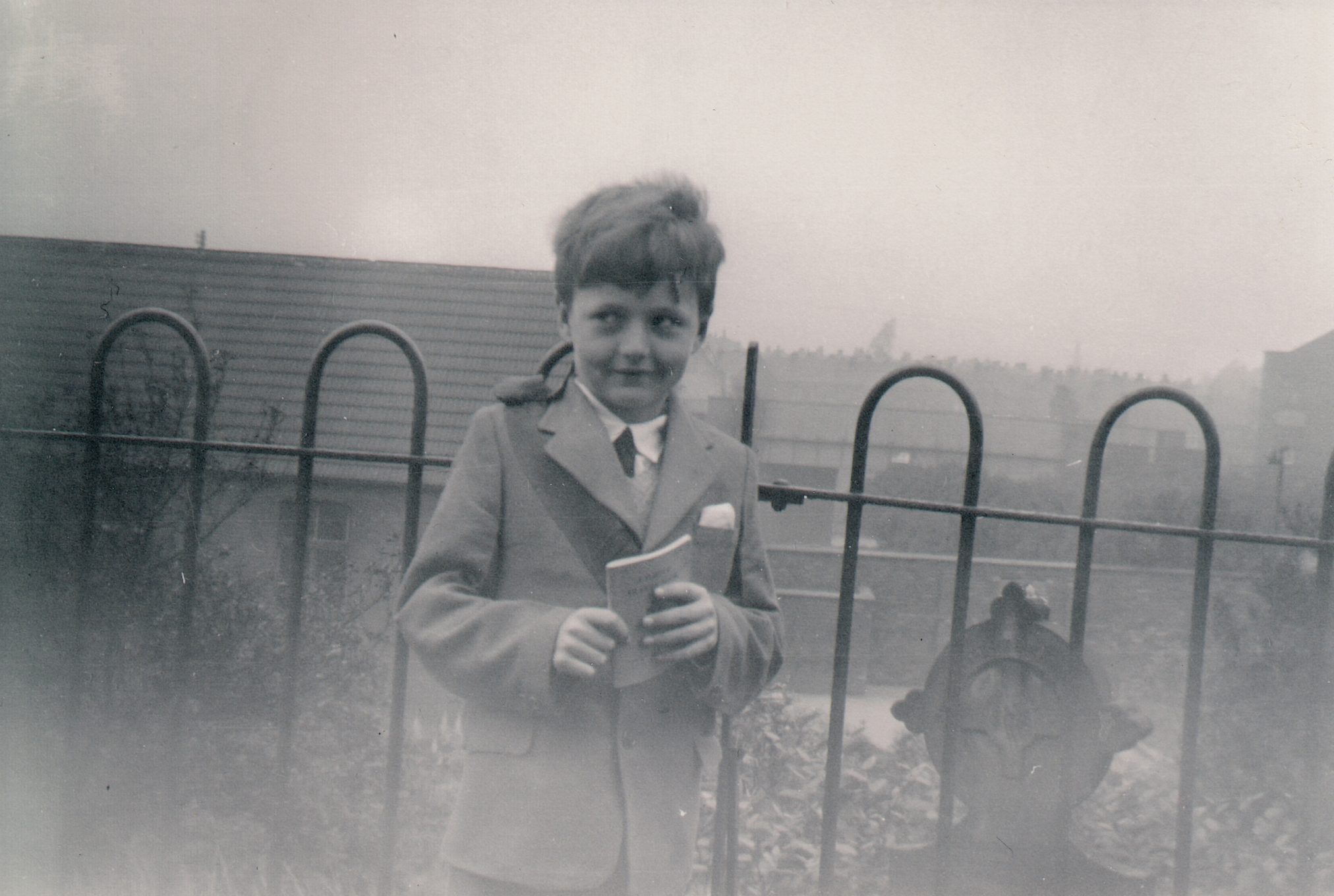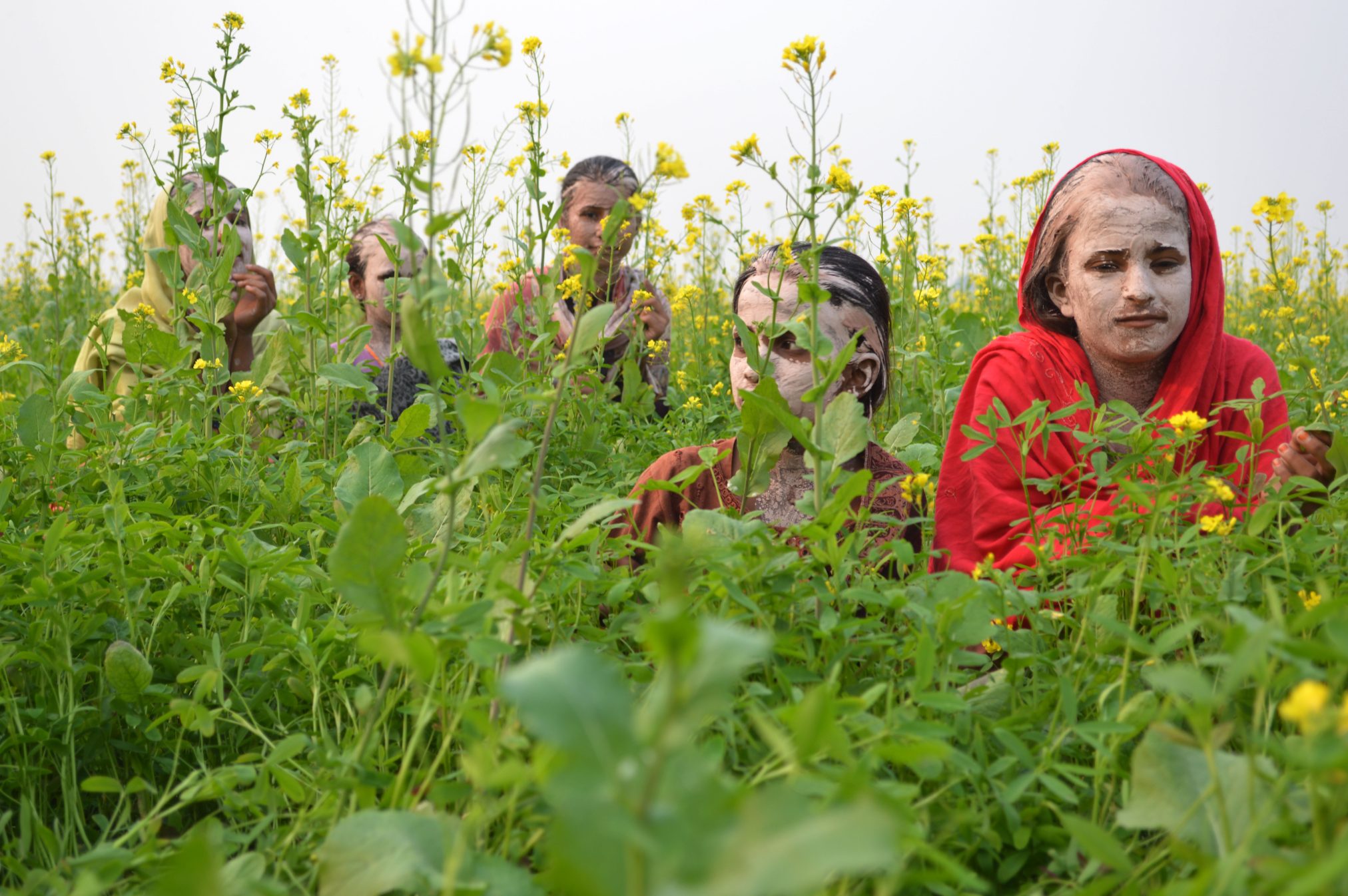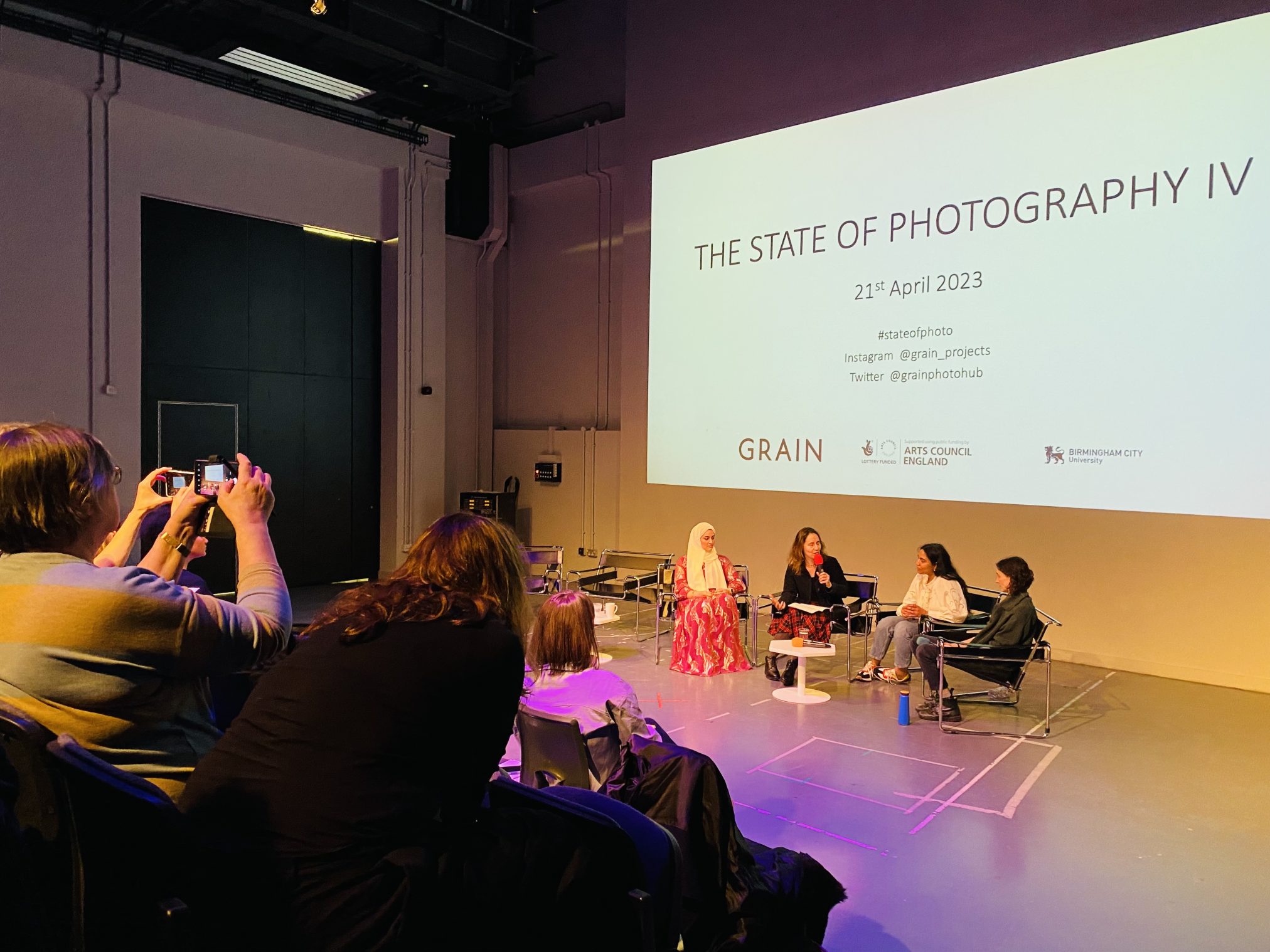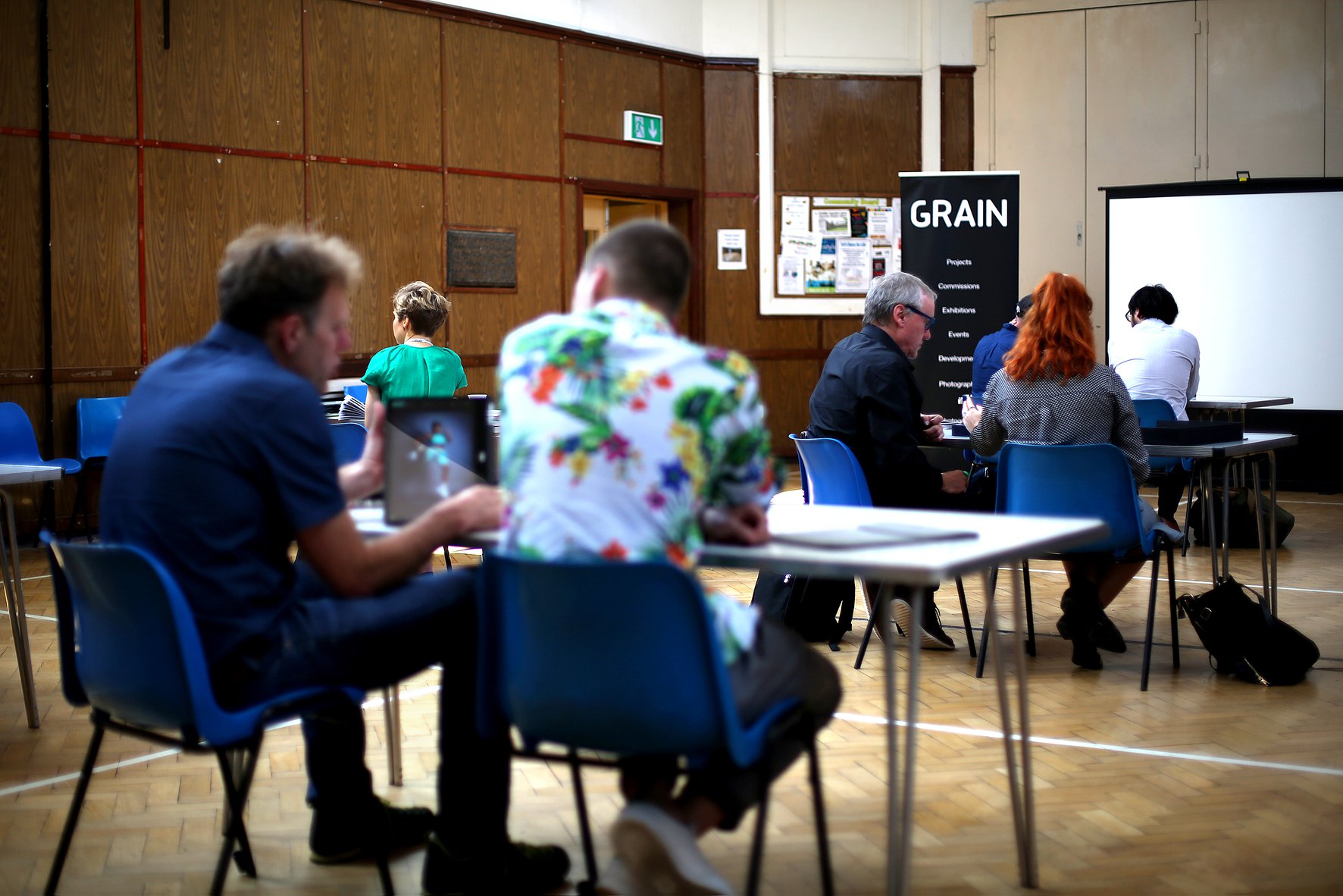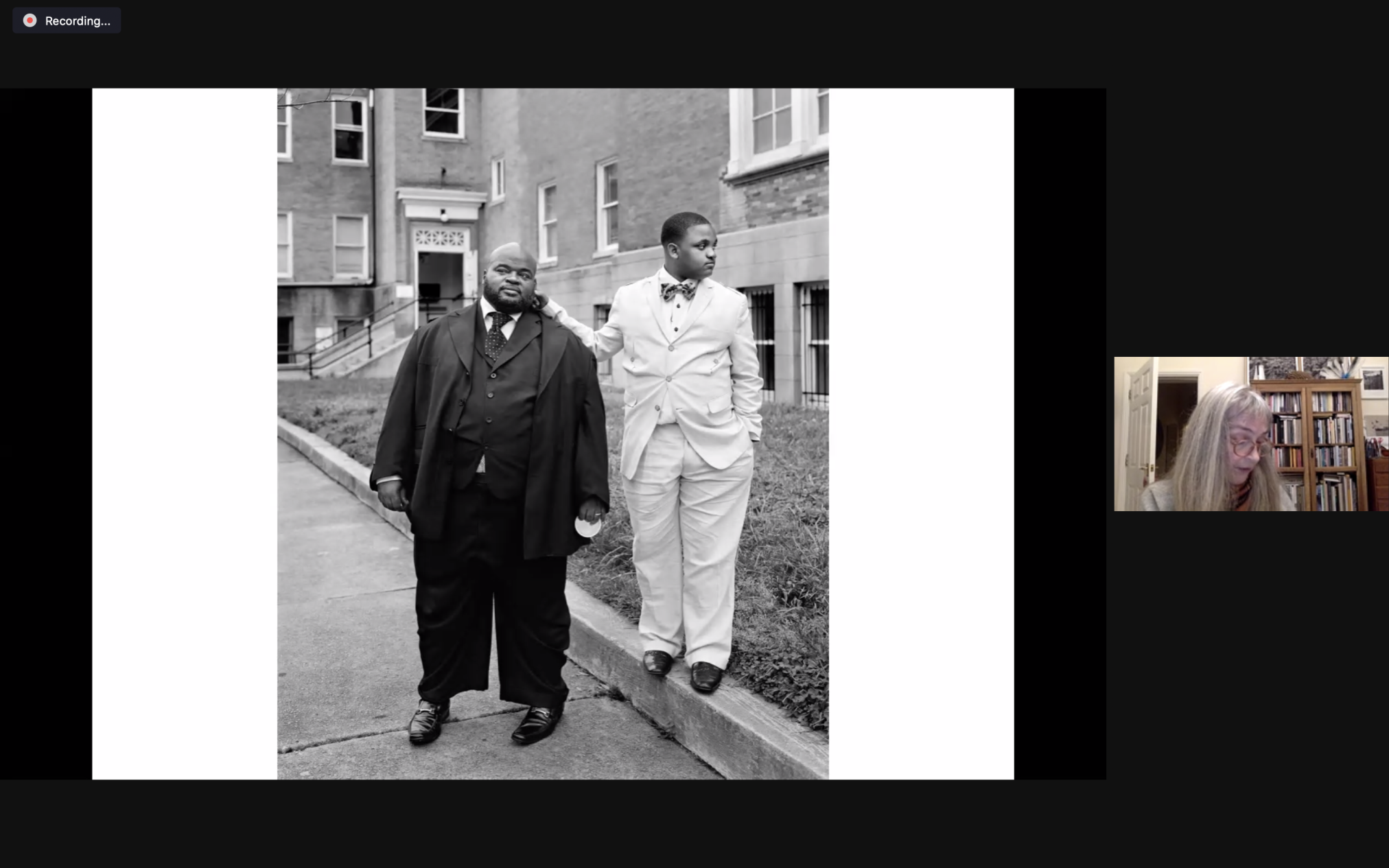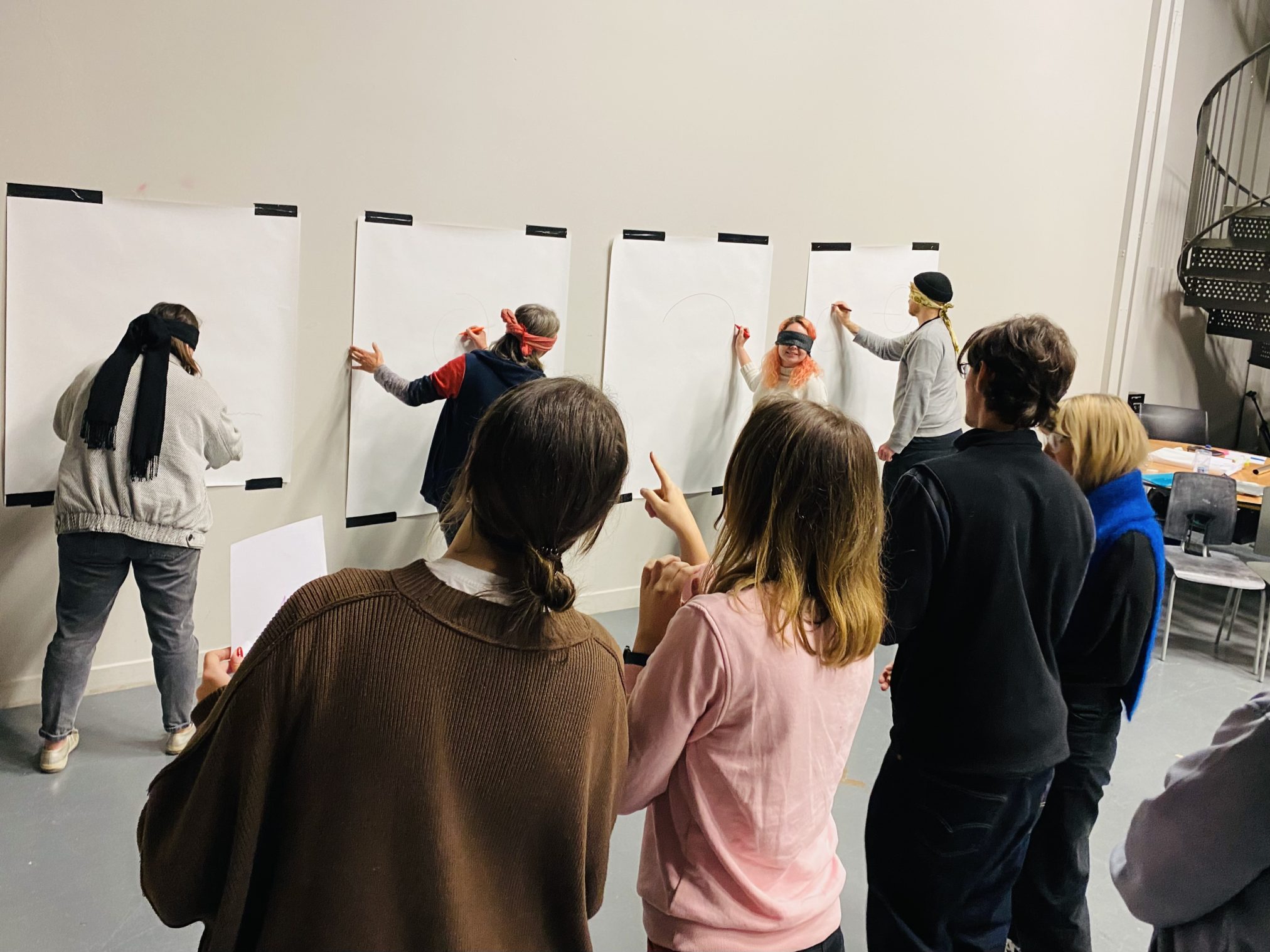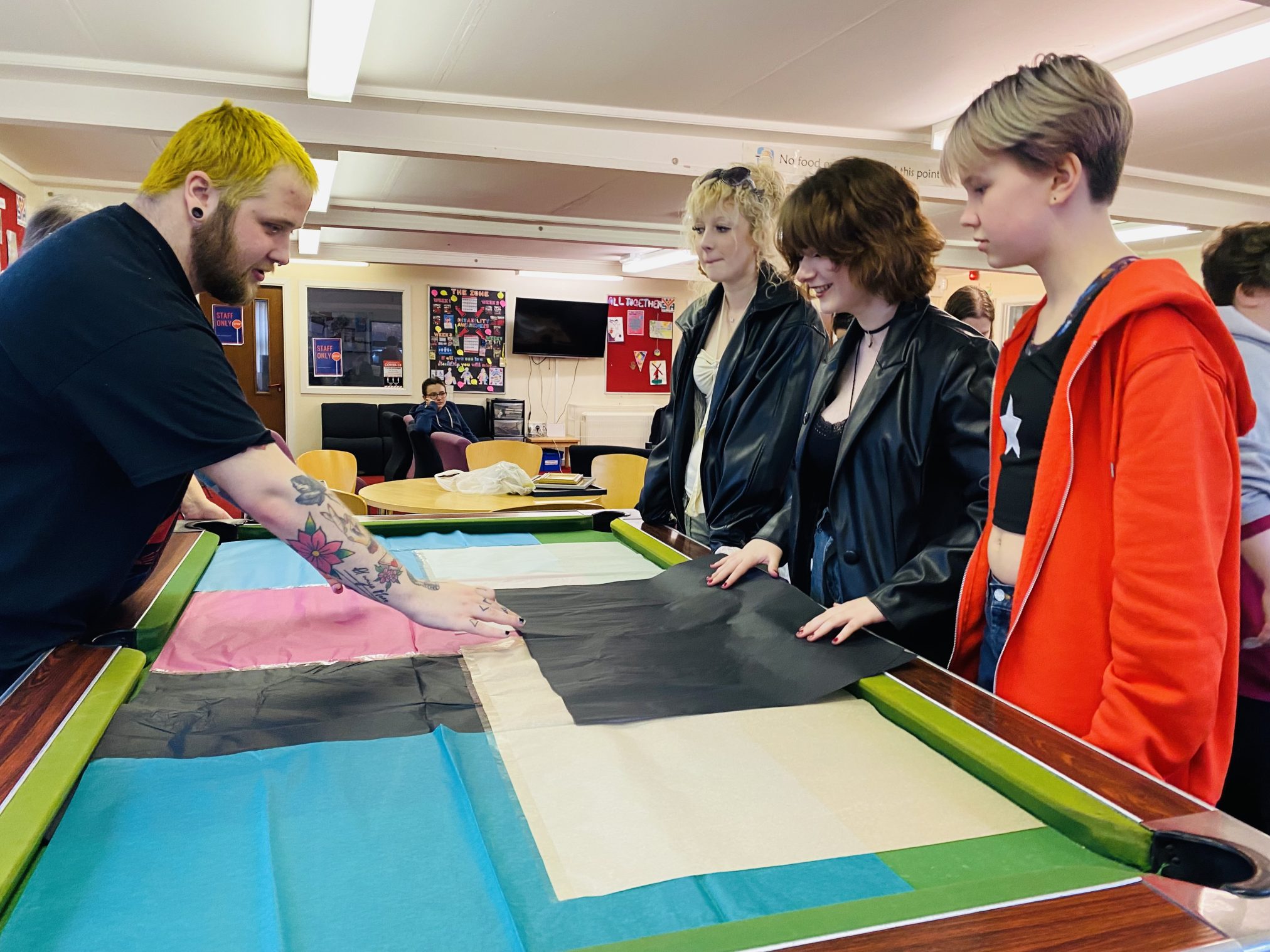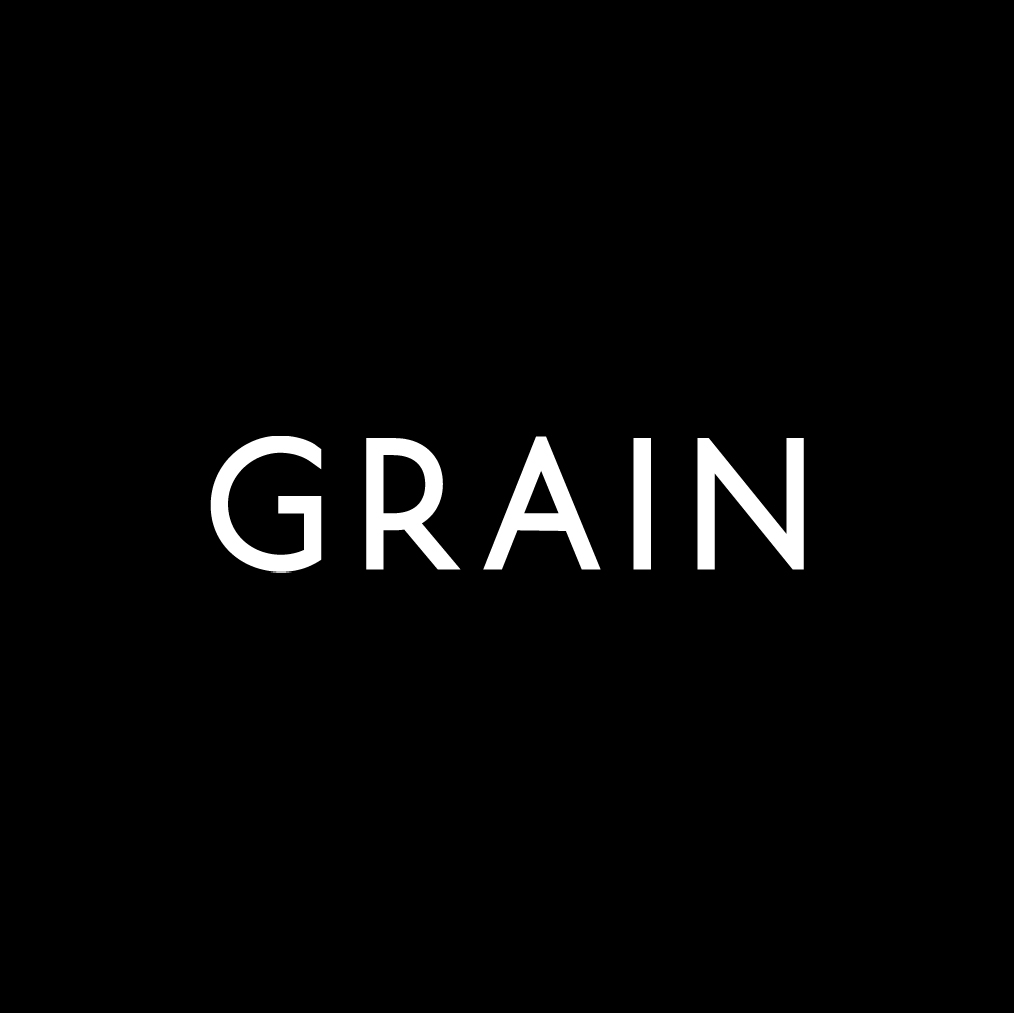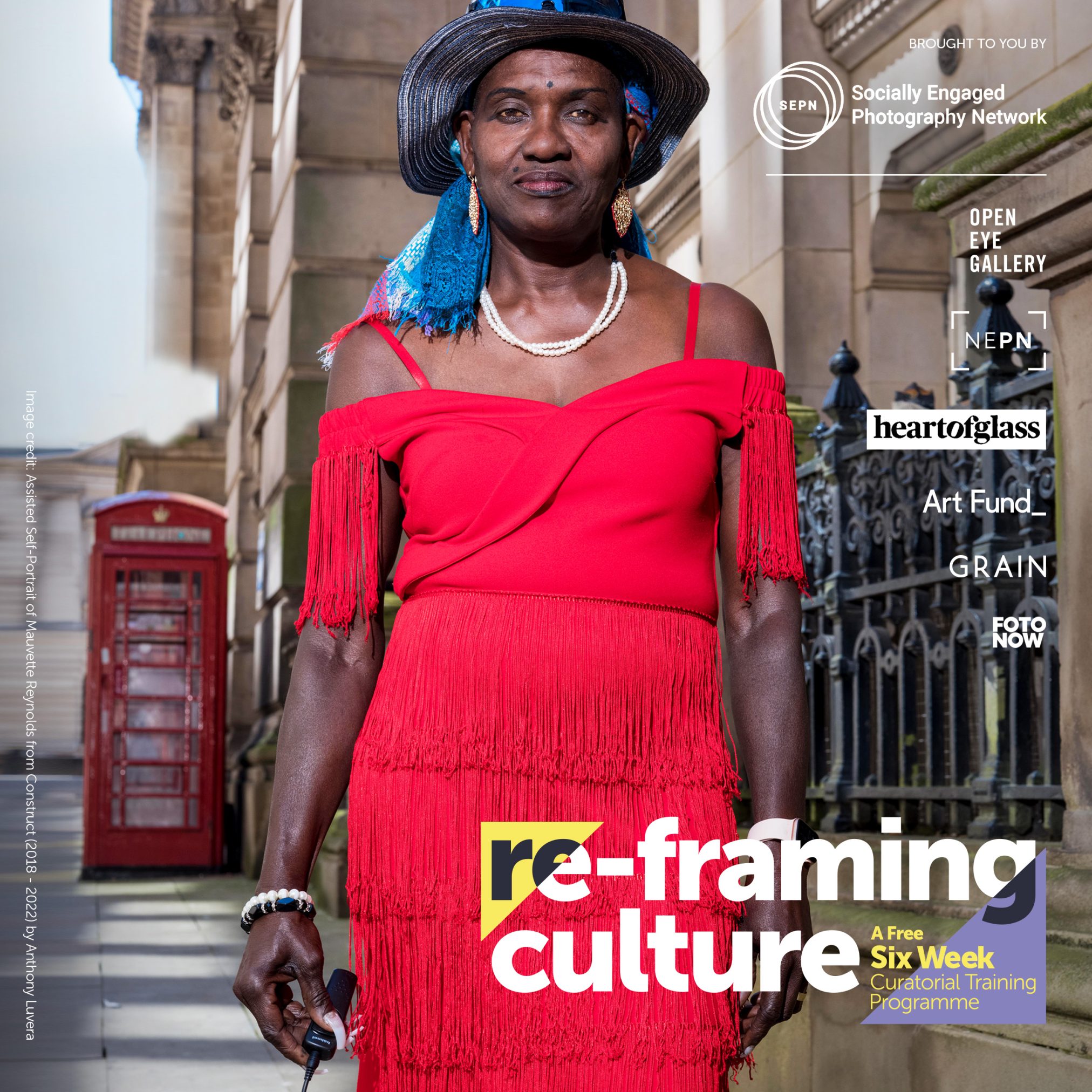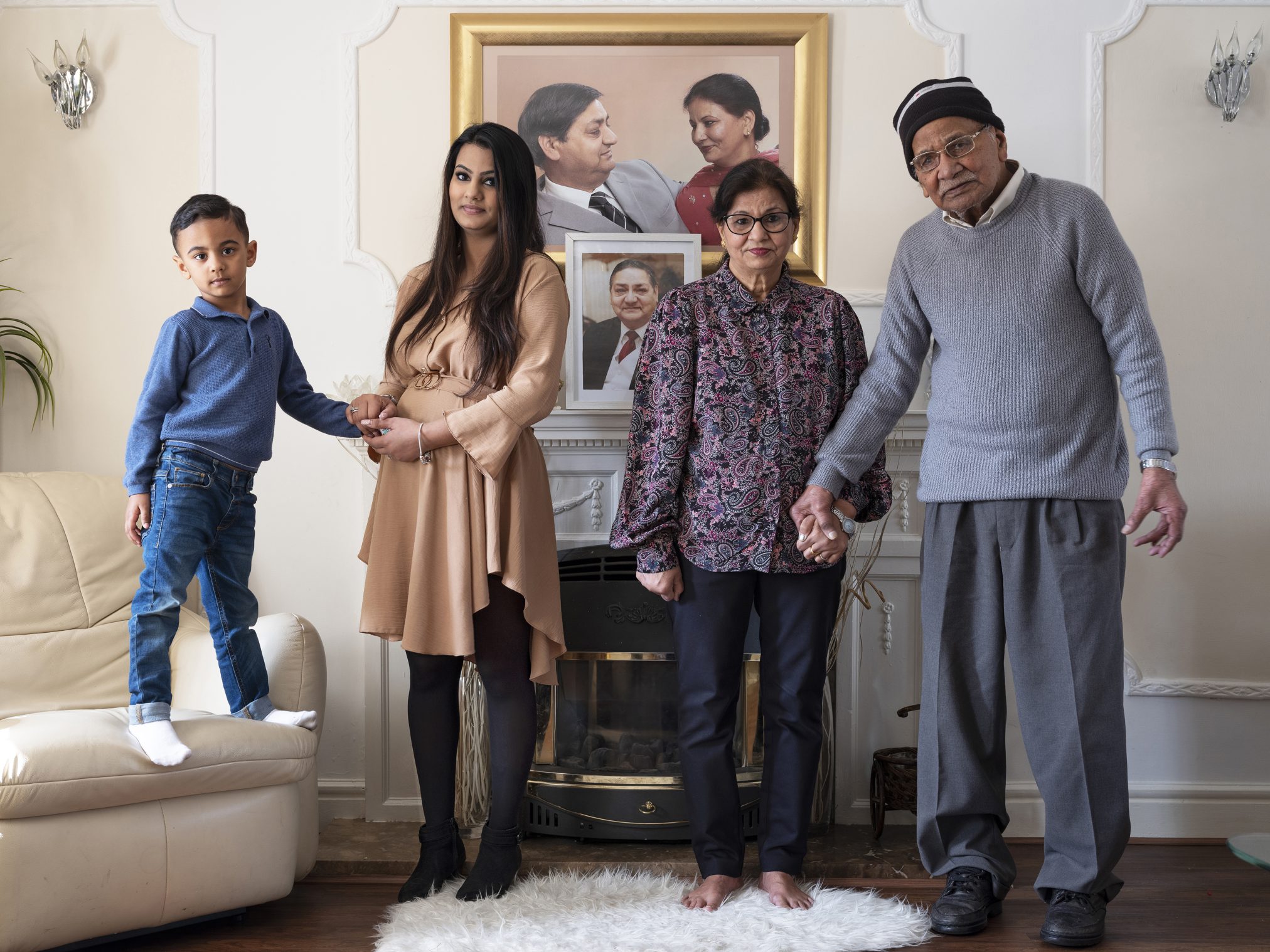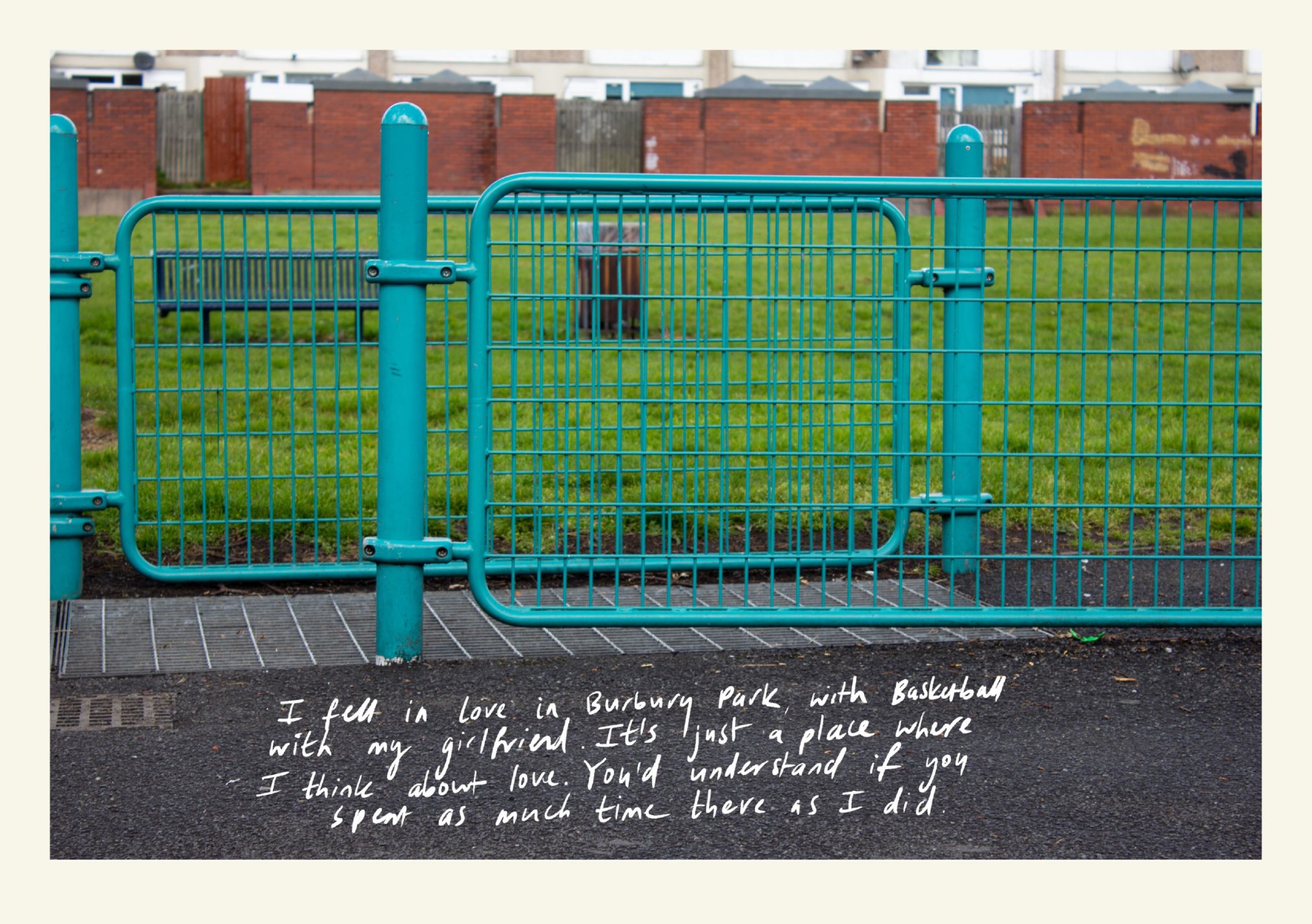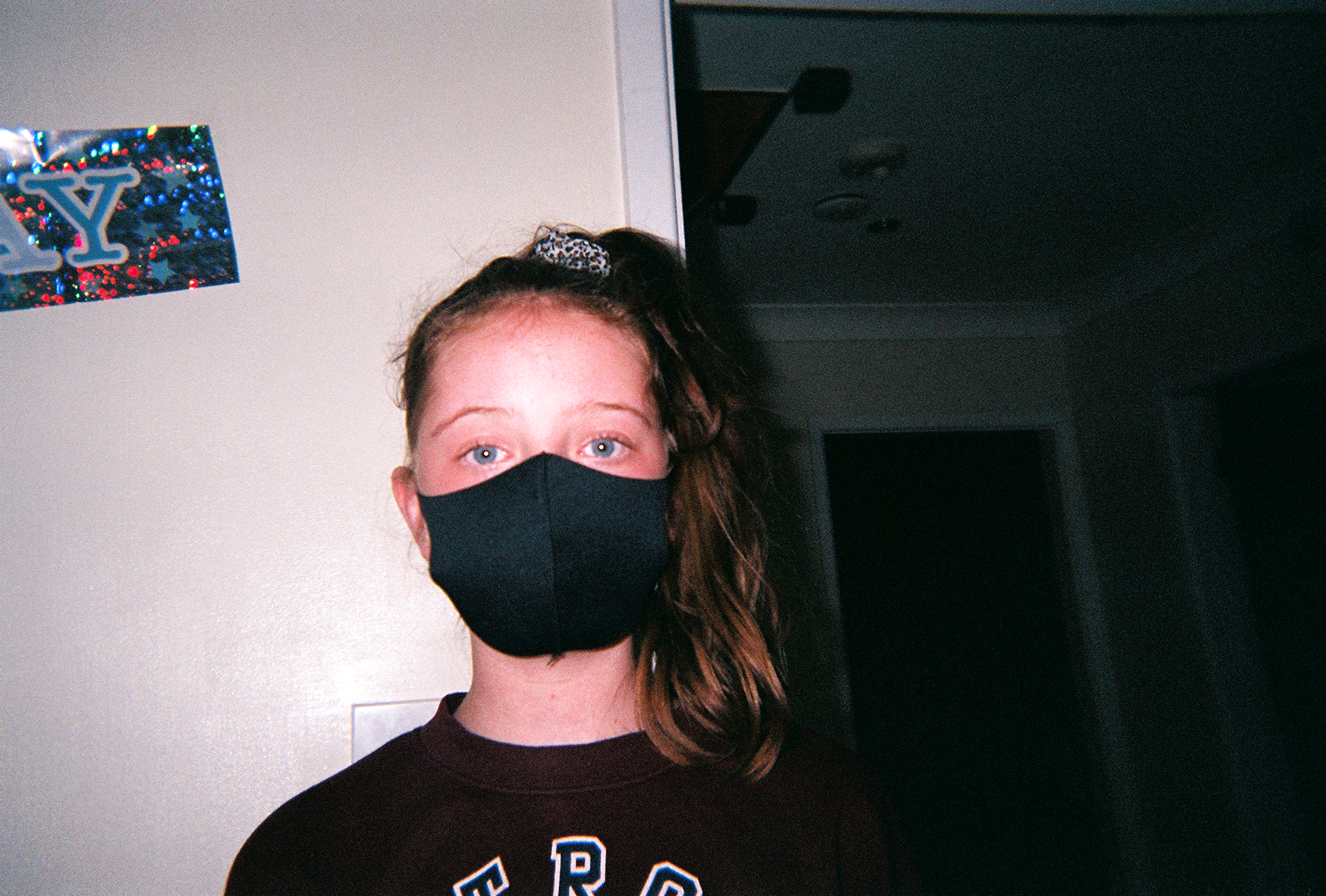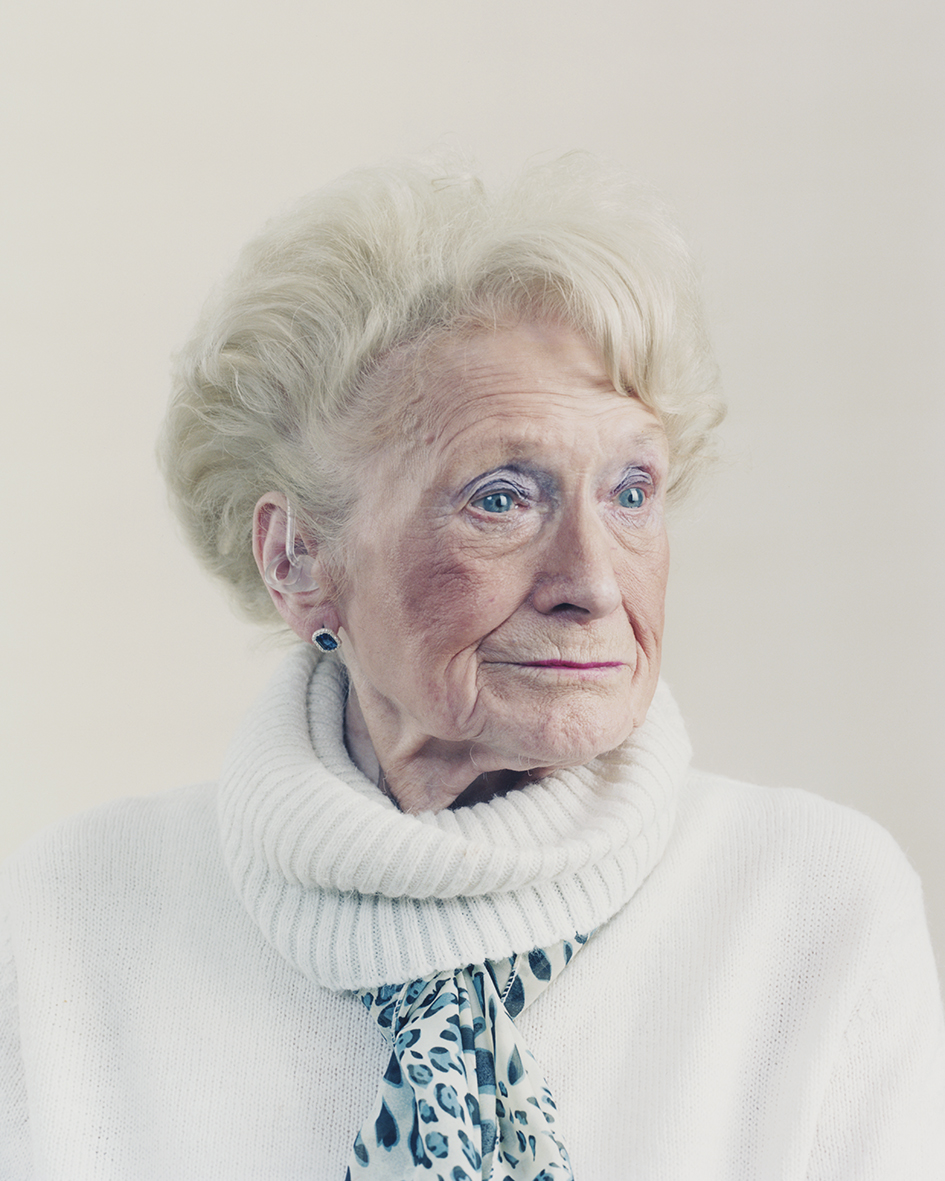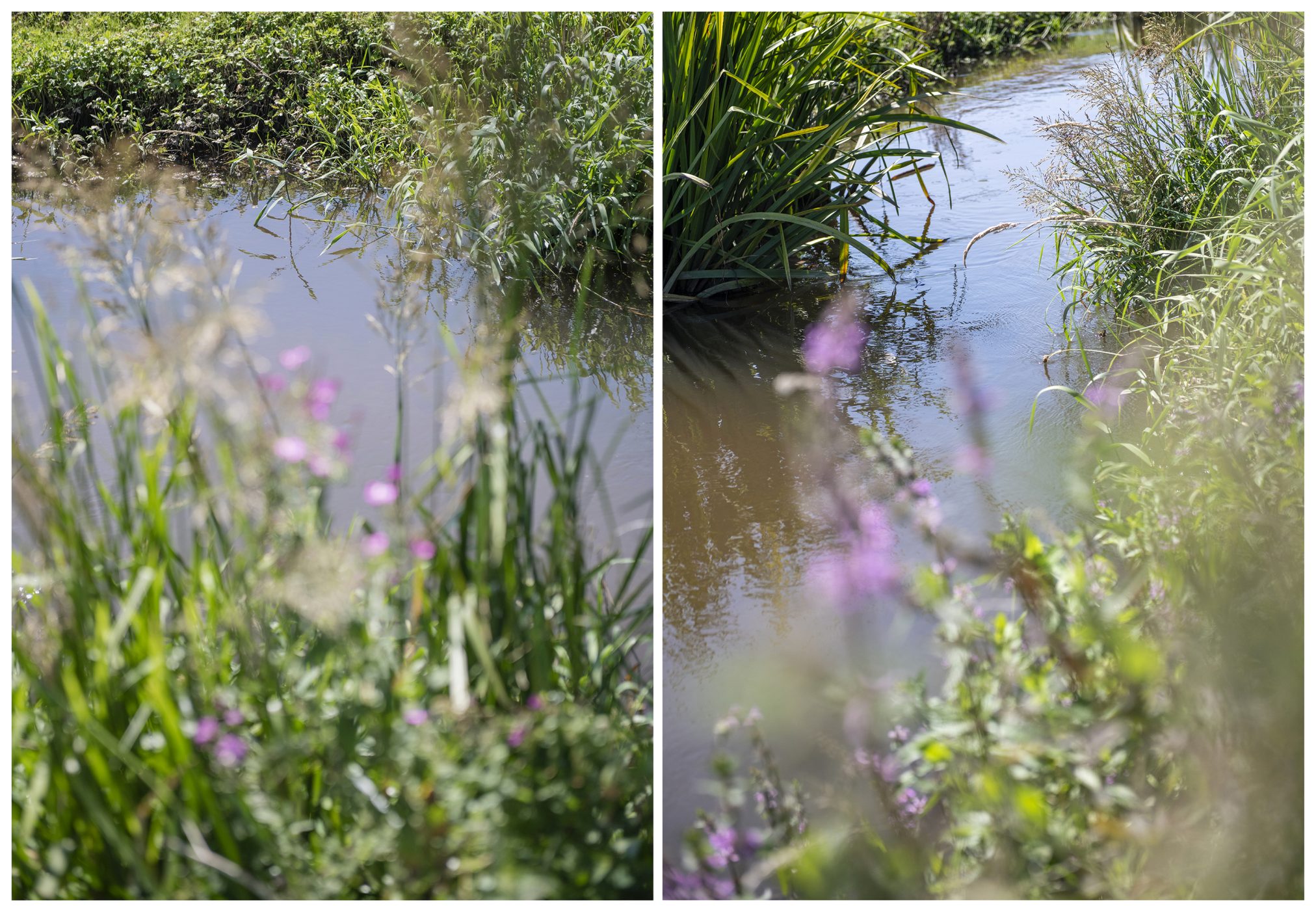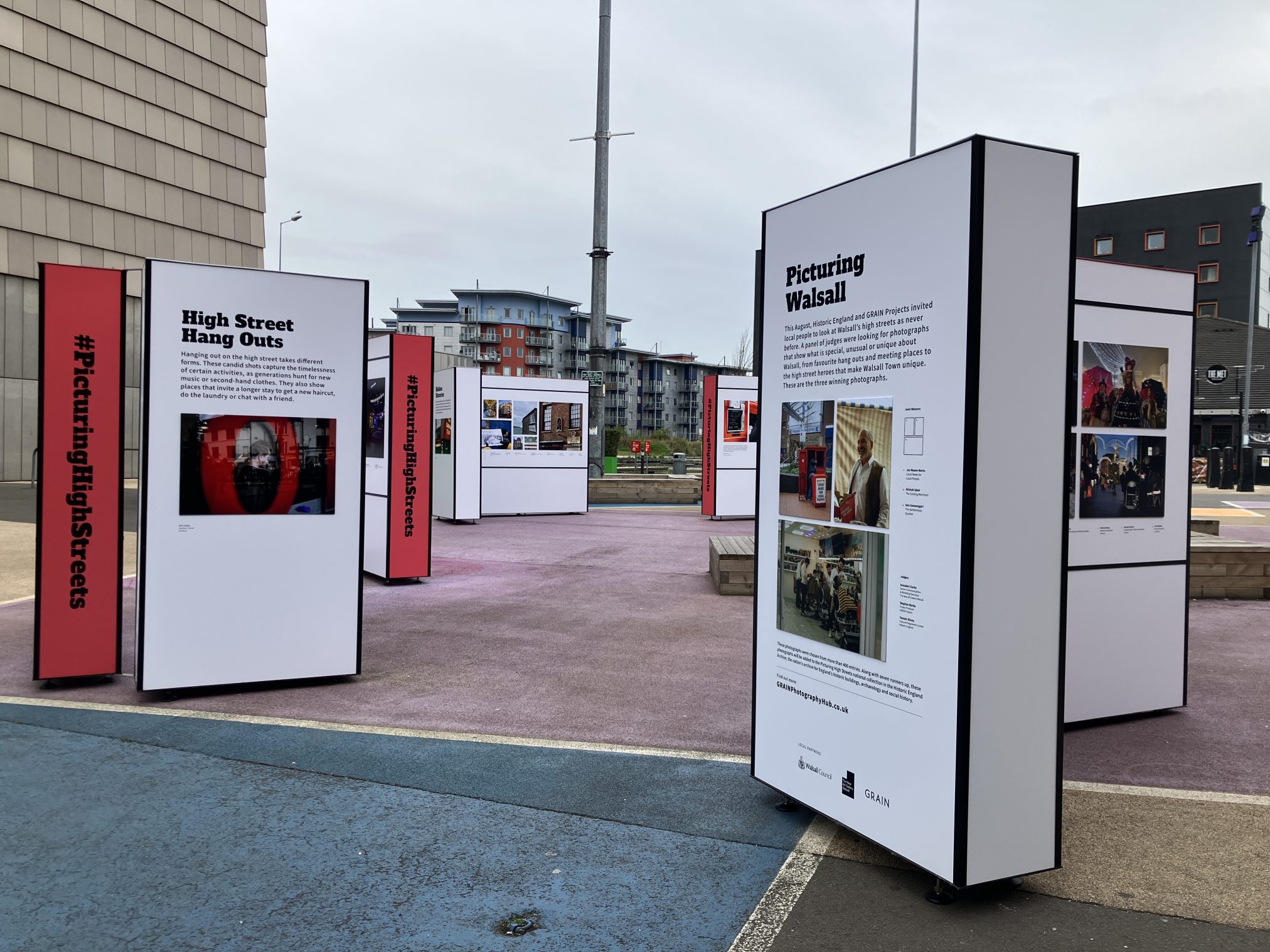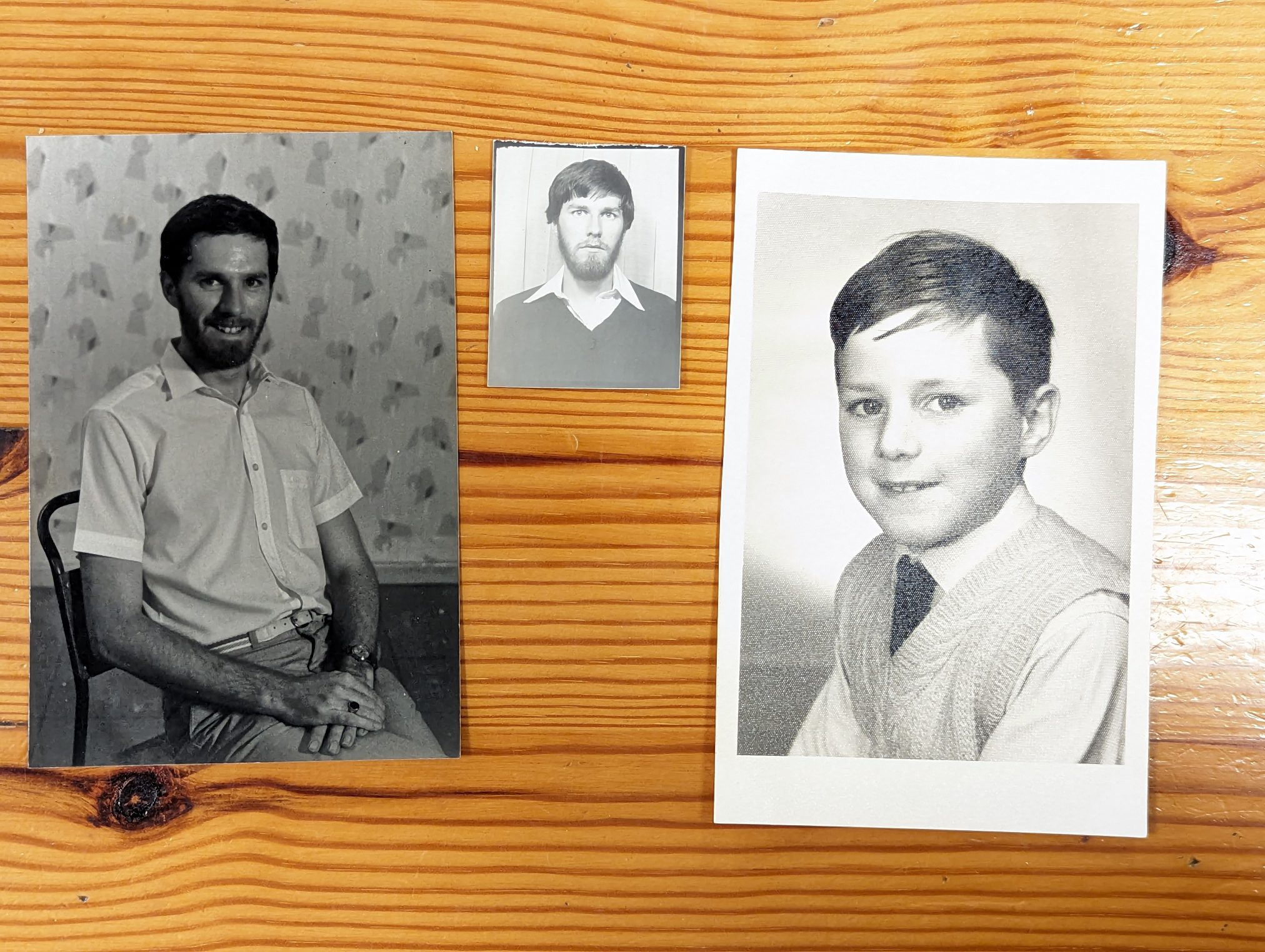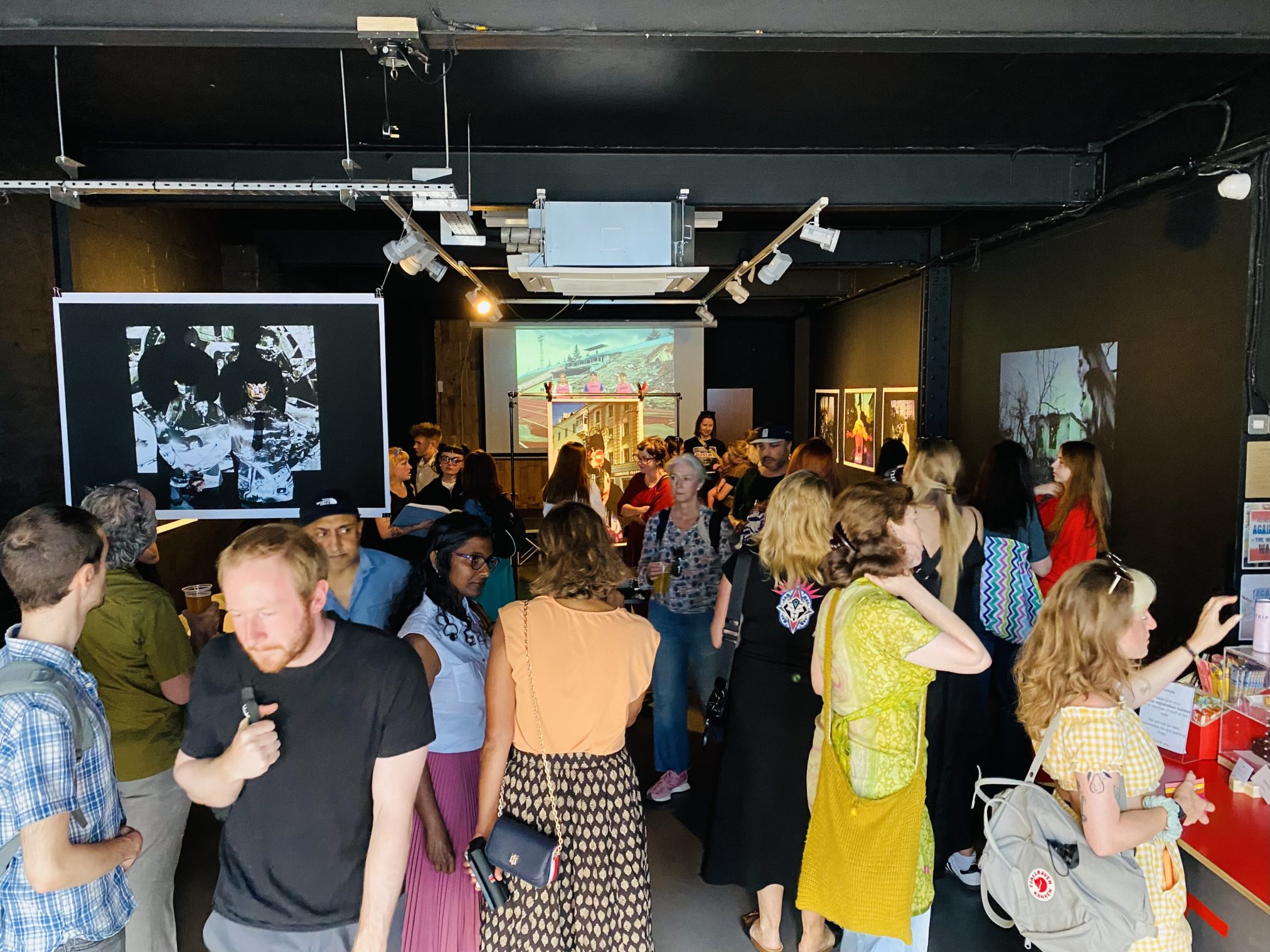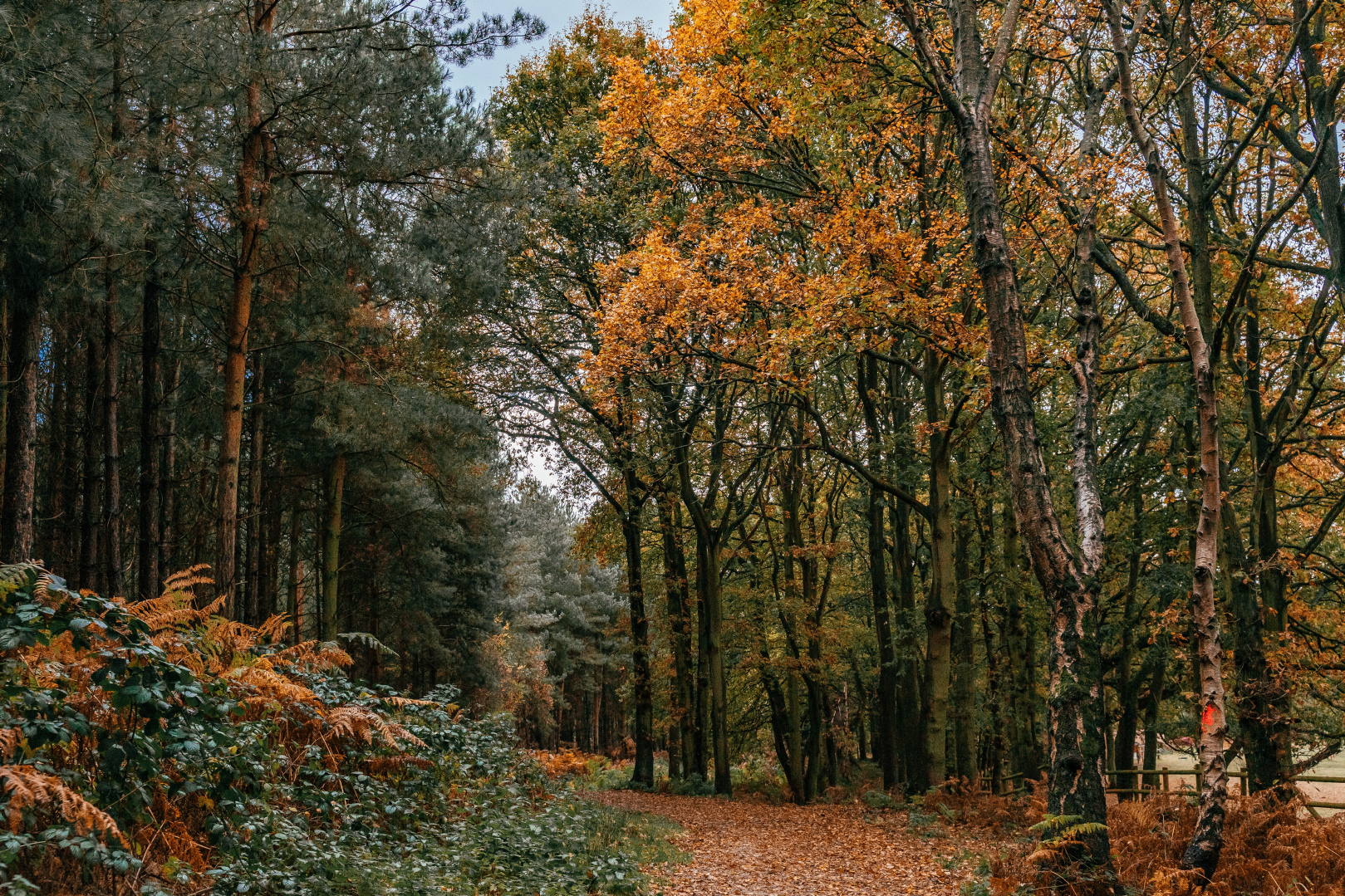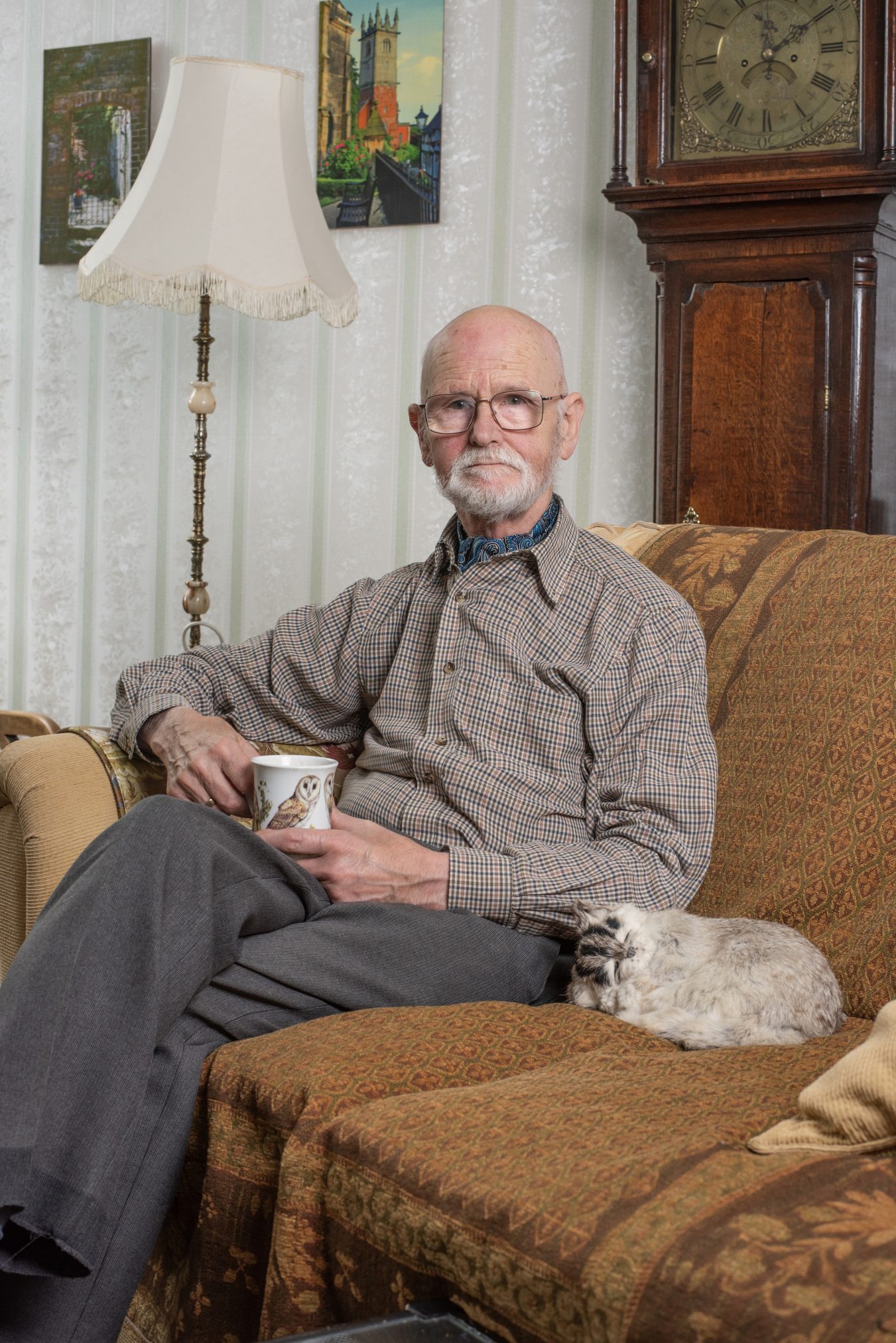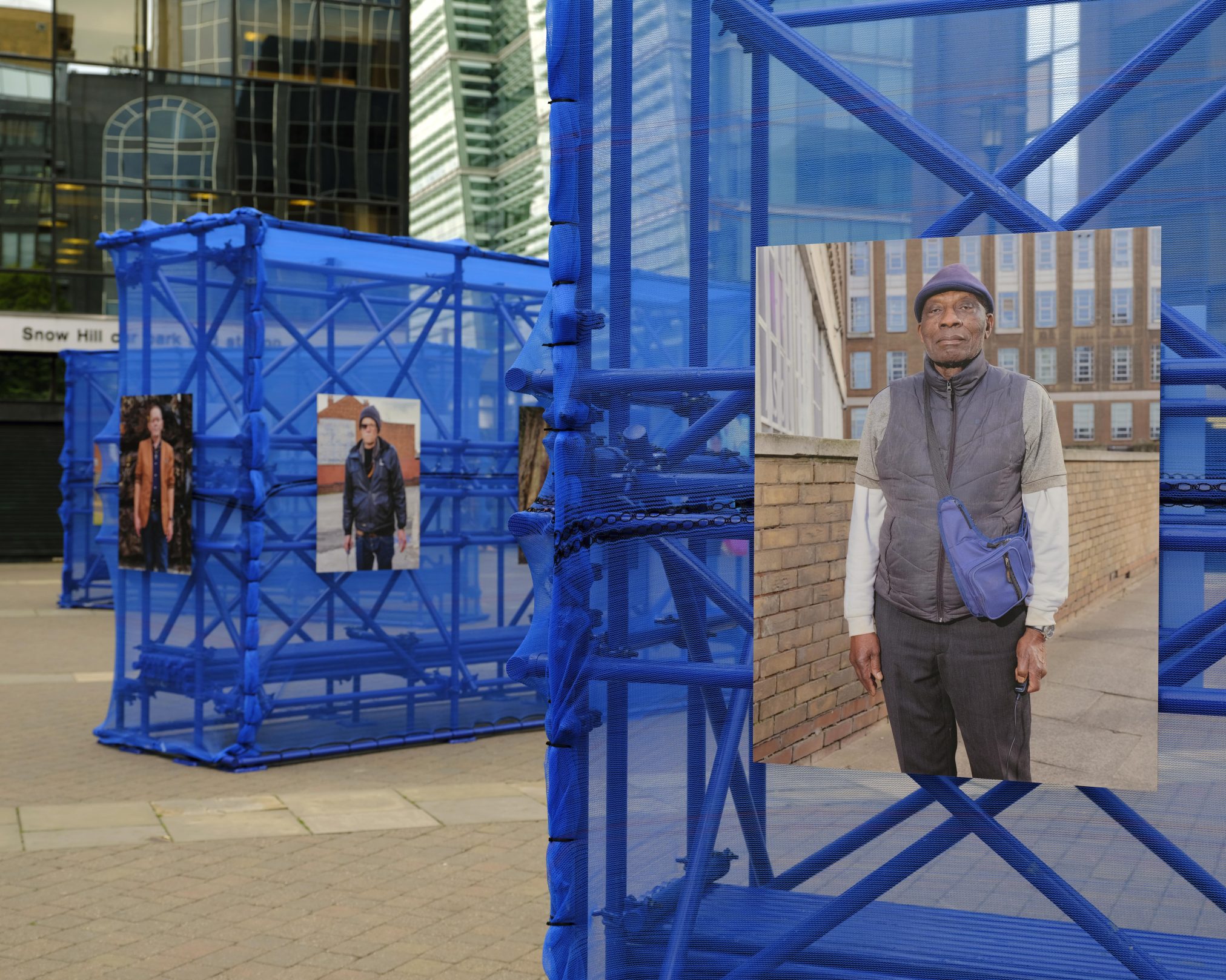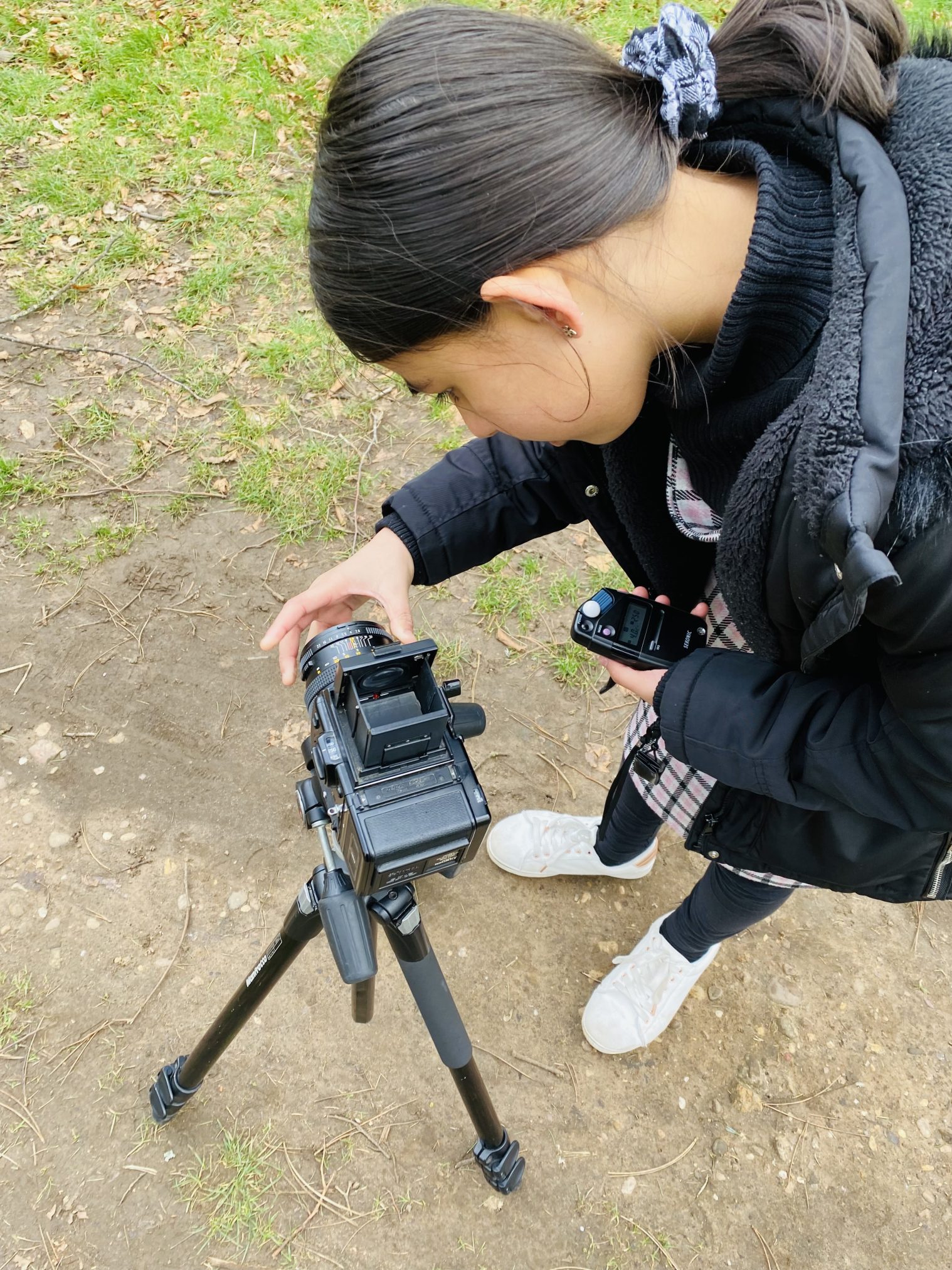18 06 2024
Modern Muse
by Arpita Shah
Arts Festival Oxford
St. John’s College, Oxford
28 June – 14 July
In collaboration with Photo Oxford Festival and Centre for British Photography, GRAIN Projects presents nine portraits from the Modern Muse series.
Drawing from and subverting the conventions of Mughal and Indian miniatures, and making work in collaboration with women from the South Asian diaspora, in the West Midlands, Arpita Shah visually and conceptually explores the shifting identities and representations of South Asian women in contemporary Britain.
www.artsfestivaloxford.org
18 06 2024
BROTHER
£20.00 + Postage (UK + EU Only)
This publication features a selection of work made in collaboration with asylum seekers and refugees resident in one of Birmingham’s government assigned hotels.
Throughout 2023 conversations and workshops took place with men from the hotel, inviting participants to take part in photographic activities, including large and medium format, digital cameras, collage and Ai technology. Portraits were co-created and Ai images produced reflecting on the men’s experiences, journeys and future.
The participants left their home countries for many reasons including fleeing war and religious persecution. Those who took part shared their experiences of stories fragmented by conditions, time and fear, and of years of struggle seeking sanctuary. Some wanting to remain anonymous through fear of consequences.
The title was taken from a conversation and represents brotherhood, family, understanding and camaraderie. This publication aims to raise awareness and invites the audience to reflect on people’s lives with care and compassion.
With thanks to everyone who took part and shared their story. This publication is dedicated to them and all those who they represent.
Workshops were led by Anu Gamanagari, Dan Burwood, Mark Murphy and Stephen Burke. With thanks to Chris Neophytou, John Tipper, Mohamed Somji and Nicola Shipley.
GRAIN Projects were commissioned by Birmingham Museums Trust, with the support of Refugee Action and Birmingham City University.
The launch on World Refugee Day was in partnership with the University of Birmingham, Celebrating Sanctuary Birmingham, Birmingham Community Hosting Network (BIRCH), Stories of Hope and Home, and Notnow Collective.
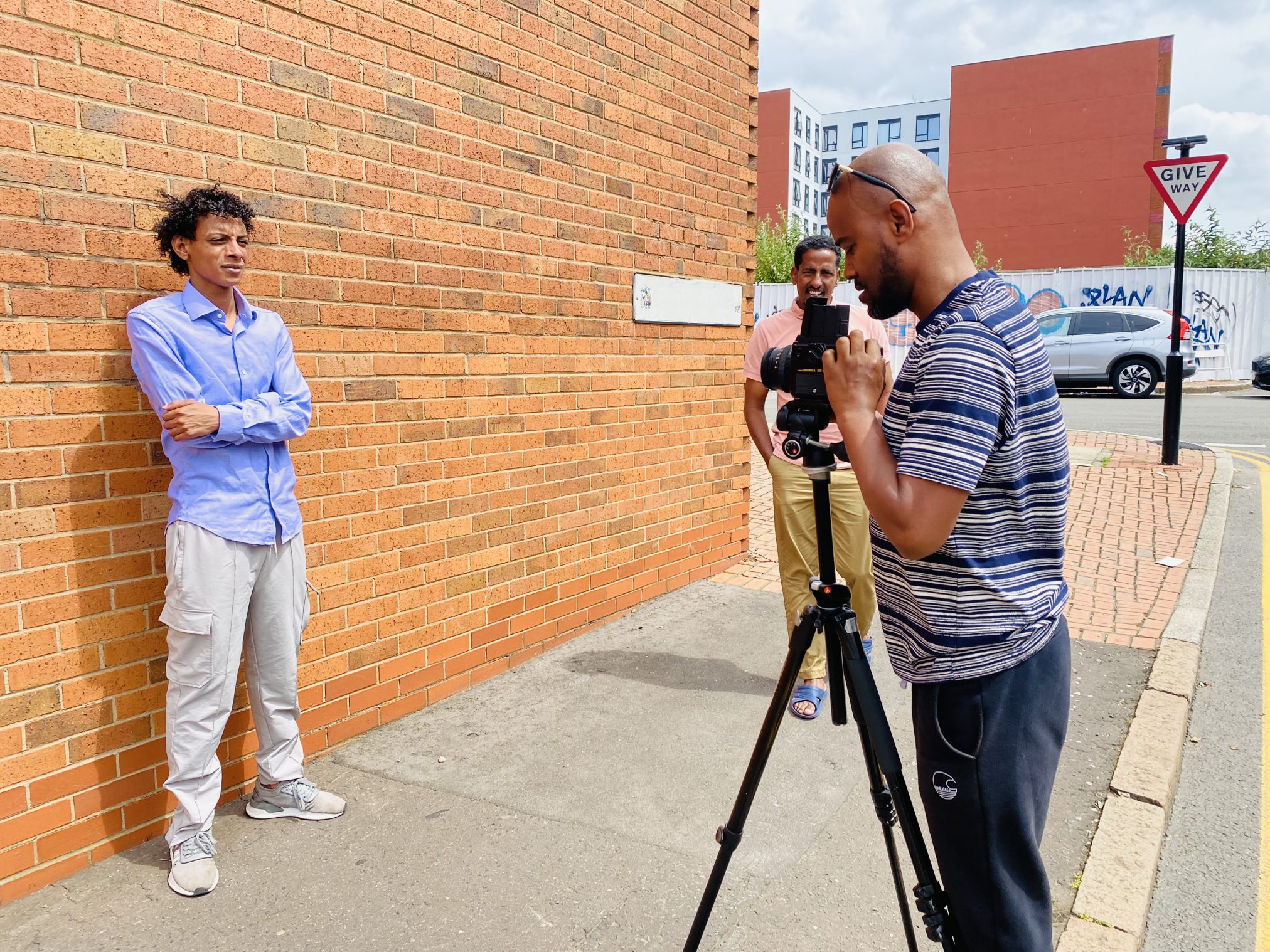
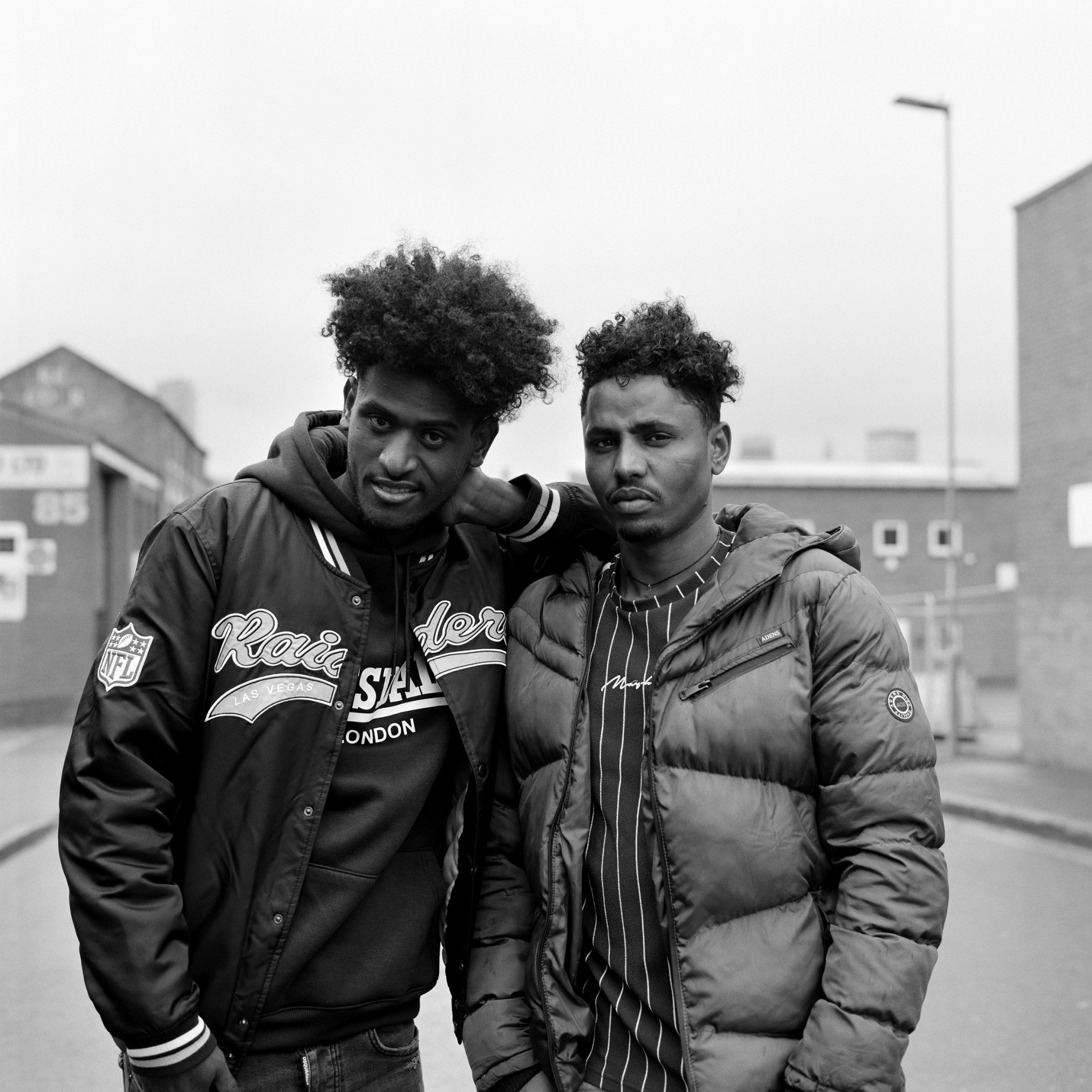

03 06 2024
Fugue
£50.00 , UK shipping order here
£60.00 , EU & World shipping order here
Fugue by Lydia Goldblatt is a body of work about love and grief, mothering and losing a mother, intimacy and distance, told through photographs and writing. Centring on the domestic space and made over the course of four years, it tells a story that is neither apologetic nor idealised.
When Goldblatt became a mother she found herself unable to make pictures. However, after her own mother died, she began to photograph again, both at home and in the city around her.
‘I wanted to be honest about what I was struggling with, about the feelings of claustrophobia and rage, as much as intimacy and love. These are feelings so often hidden by mothers, so often silenced as unacceptable.’
Goldblatt works on medium format film to make her photographs. When she began this series it meant that the process was blind, and she didn’t see the images she was making for months. It allowed her to slow down physically and mentally and develop a way of looking and feeling intuitively. At the same time she also began writing.
Her lyrical text weaves throughout the book.
‘Photographing became a lifeline, a way of weaving past through present. Through my pictures and writing, I was able to think about the transformations that accompany motherhood and loss. And I could challenge the archetypes and taboos of motherhood. Beyond mothering, I have been able to explore a wider sense of caregiving through the relationships my partner holds with our children, those they hold with each other, and through the writing that spans generations. I hope that this work gives voice to a story that is both individual and collective.’
The photographs depict a rhythm of domestic life, the passing of days and seasons. They show the stillness of objects contrasted against small children moving in and out of frame and everchanging light. Goldblatt draws upon small details of daily life—the texture of skin and assorted sheets, mops, houseplants and mirrors—imparting not a record of life, but a feeling. The photographer herself is glimpsed through reflections, shadows or abstract flesh—placing herself both within the photographs and also as an observer, intimate and distant.
The title Fugue holds two meanings. The musical definition of interweaving and repeating elements in a composition which collectively create a complex narrative. It also refers to a dissociative state or loss of self. Both meanings encompass the transformations that accompany motherhood and loss, and the deeply personal and collective resonances of daily domestic life.
£50.00 , UK shipping order here
£60.00 , EU & World shipping order here
Commissioned by GRAIN Projects, published by GOST Books.
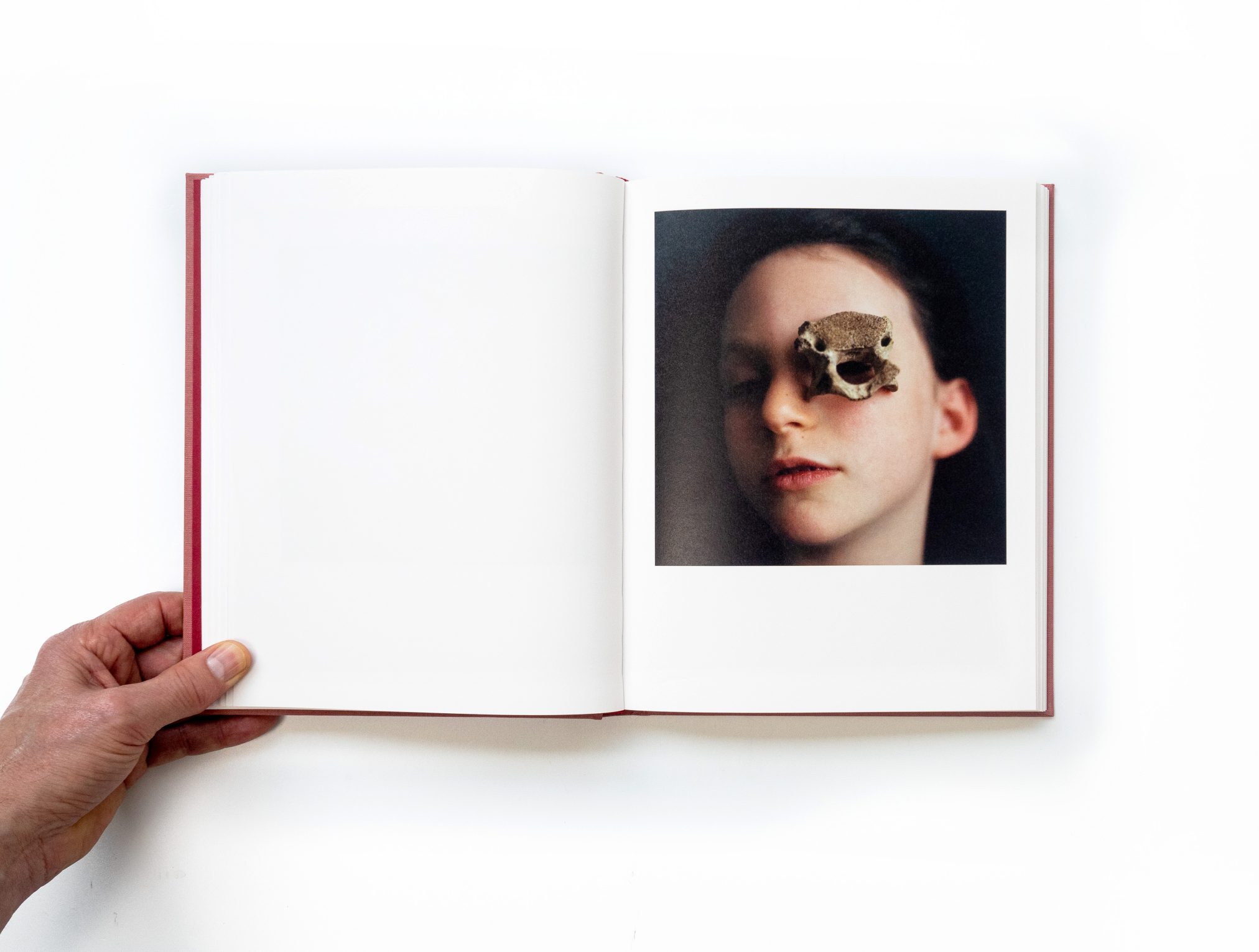
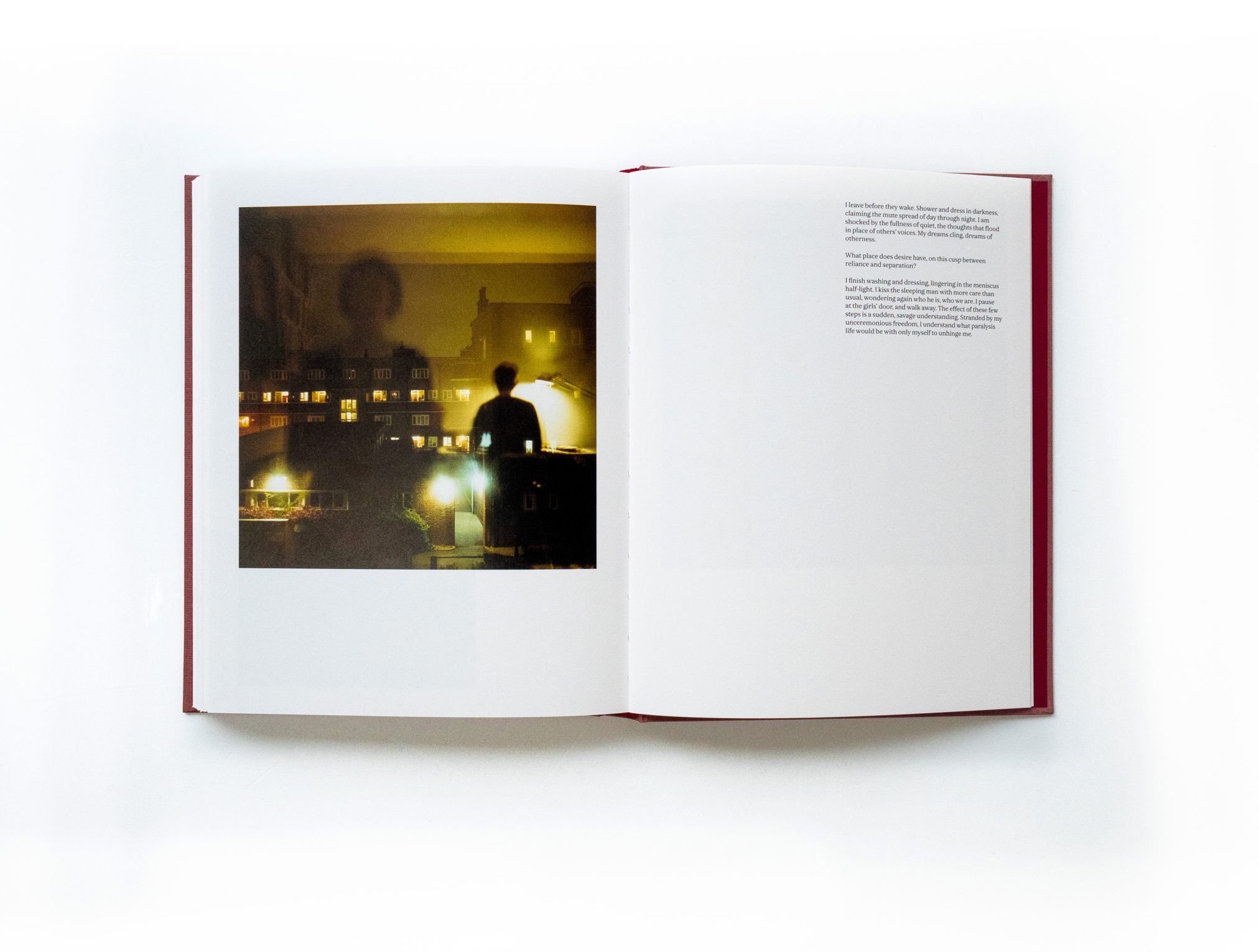
10 04 2024
NO MAN’S LAND
Ngadi Smart
Refugee Week, 17th – 23rd June
GRAIN Projects commissioned artist Ngadi Smart to lead workshops with women and their families, at one of Birmingham’s government assigned hotels, and to create a new artwork in response to her experience. The artist met and collaborated with women and their families to inspire this new work which was made using photography, collage and illustration.
For National Refugee Week and World Refugee Day 2024 the work features on a billboard in Birmingham city centre (Sherlock Street).
The participants were from many different countries, including China, Sudan, India and Turkey, bringing rich cultural references to the creative sessions. The workshops seemed to give the participants a much needed break and respite from the monotony of the hotel and the reality of their situation.
‘Their stories had an impact on me. The dreams, families, lives they had to give up, the seemingly endless wait for the results of their applications, which almost seemed like a purgatory to me, as their new lives are unable to start until applications are approved…
The workshops reinforced my belief that everyone is essentially an artist/creative. I will always remember how some people came along and immediately showed off their creative skills, and others, who swore they weren’t creative, but realised they actually were after they started selecting images, cutting, sticking, drawing and collaging. The children were confident in taking part, with no inhibitions.
For this work, it was important for me to incorporate some of the elements of participant’s family pictures, which they sent to me via mobile phone. These are included without revealing identities and include children’s hands making a heart shape, and daffodils photographed in a city park, symbolising birth and new beginnings. I have included the sea and the land as elements for human sustenance, also as references to treacherous and long journeys, and sand timers as symbols of their time which they have given up in leaving a place, and given again in waiting – all in one lifetime.’
Ngadi Smart, Artist
GRAIN Projects commission, supported by Arts Council England, Birmingham City University and Jack Arts part of the BUILDHOLLYWOOD family.
Ngadi Smart is a Sierra Leonean artist and photographer based between London, U.K and Abidjan, Côte d’Ivoire. Her work draws upon her West African heritage and femininity. It looks at themes of identity, race, discrimination and the representation of minorities. She has made work for numerous national and international publications and is the recipient of many awards including Portrait of Humanity 2020, RPS Environmental Award 2020, First Prize Faber & Faber 2020 and The WaterAid & British Journal of Photography Climate Commission 2023.
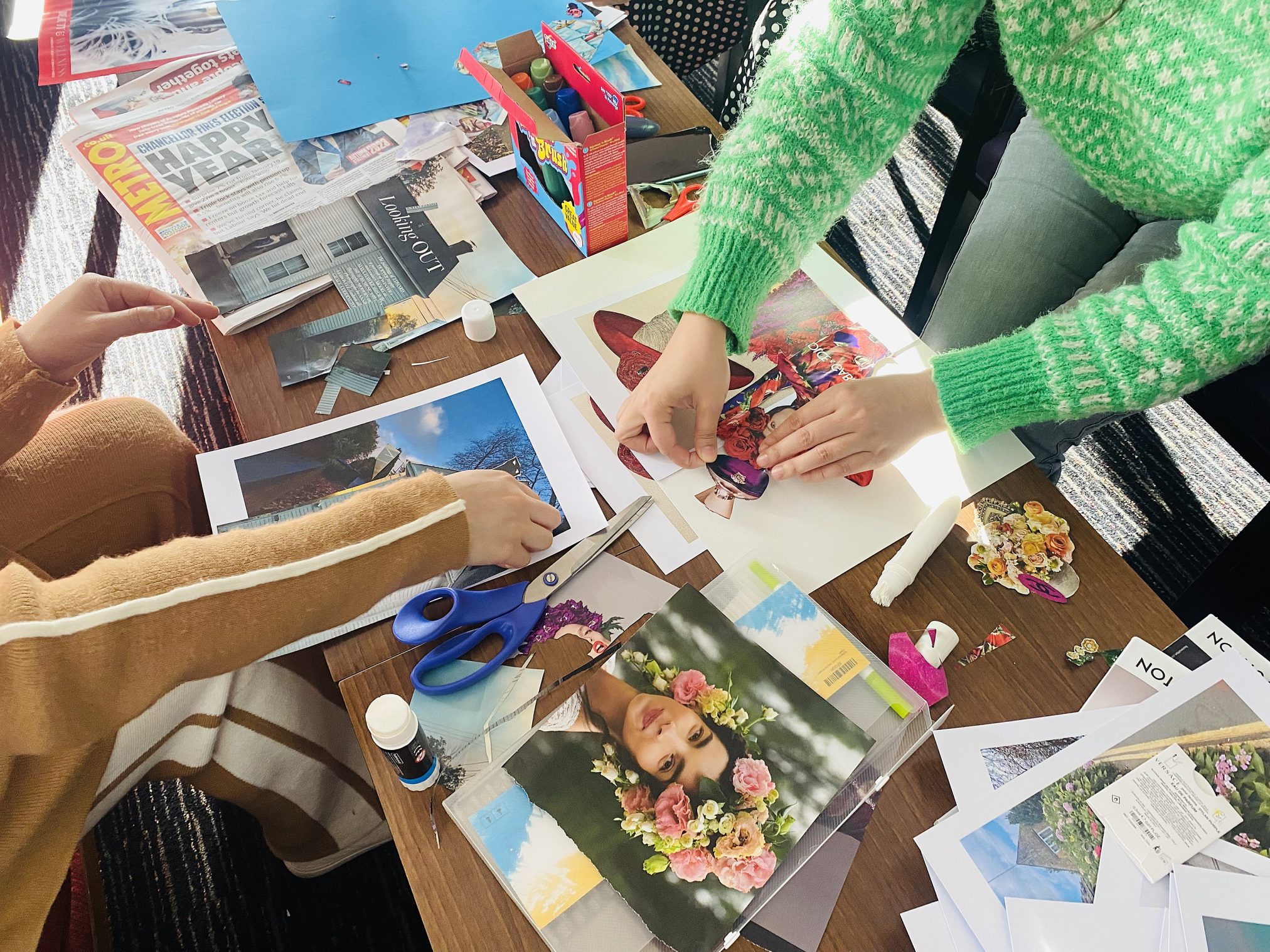
Workshop image
26 03 2024
PICTURING HIGH STREETS LEGACY PROJECT
UNION by Natalie Willatt
Photobook Launch
25th May, 3 PM
Spode Museum, Stoke-on-Trent ST4 1QD
As a legacy to her two year Residency in Stoke town’s Heritage Action Zone photographer Natalie Willatt has reengaged with communities that she worked with to create a photobook.
UNION tells the story of the high street and the local communities that are a key part of Stoke, one of the six towns that make up Stoke-on-Trent. Focussing on themes of belief and faith, in all their forms, from religious worship to music fandom, and from football team loyalty to allotment gardening, the photographs show different forms of congregation, community and union. They offer an alternative view to the commonly held idea of a neglected high street, and demonstrate the joy and community that exists on our high streets, often behind closed doors.
Workshops with participants inspired the production of the photobook, and two new pieces of commissioned writing by Rebecca Nunes and Martin Gooding contextualise the work in Stoke town as part of Picturing High Streets. The publication has been designed by Chris Neophytou.
The photobook will be launched at an event at Spode Museum and distributed to all participants, as well as to the libraries and community spaces in Stoke.
Picturing High Streets is a three year project by Historic England and Photoworks to create a contemporary portrait of England’s high streets, part of Historic England’s government-funded High Streets Heritage Action Zone scheme.

26 03 2024
PICTURING HIGH STREETS LEGACY PROJECT
Coventry Transport Museum
Tuesday 30 April – Sunday 3 November 2024 | 10.00am – 5.00pm
Admission costs to the Museum apply.
Artist Tim Mills presents photographic outcomes co-created with communities on The Burges, during his one year Picturing High Streets Residency. The installation at the Coventry Transport Museum is part of the legacy of a multifaceted project.
A third of the shops on the Burges are occupied by fast-food restaurants and takeaways, with bicycle delivery riders forming a significant community of people that provide food courier services throughout the city. Coventry has a distinguished and unique bicycle manufacturing heritage. From the first velocipedes built in 1868, the city went on to become the home of the British cycle industry and at one time produced the greatest output of cycles in the world.
Tim Mills has explored the history of this industry whilst involving the delivery riders on The Burges to produce a contemporary portrait that highlights their lives and work. The project includes stories of migration and of refugees in relation to Coventry’s role as a city of peace, reconciliation and sanctuary, interpreted in the photographs.
The installation that can be seen at Coventry Transport Museum relates to the themes embedded during Tim’s Picturing High Streets Residency: exploring industries that defined the city of the past and those that shape it today; examining ideas of arrivals, departures and transience; and working with an important community of people that provide goods and services in the area.
Picturing High Streets is a three year project by Historic England and Photoworks to create a contemporary portrait of England’s high streets, part of Historic England’s government-funded High Streets Heritage Action Zone scheme.
GRAIN Projects is the lead regional partner on Picturing High Streets delivering projects in Coventry, Stoke on Trent and Walsall.
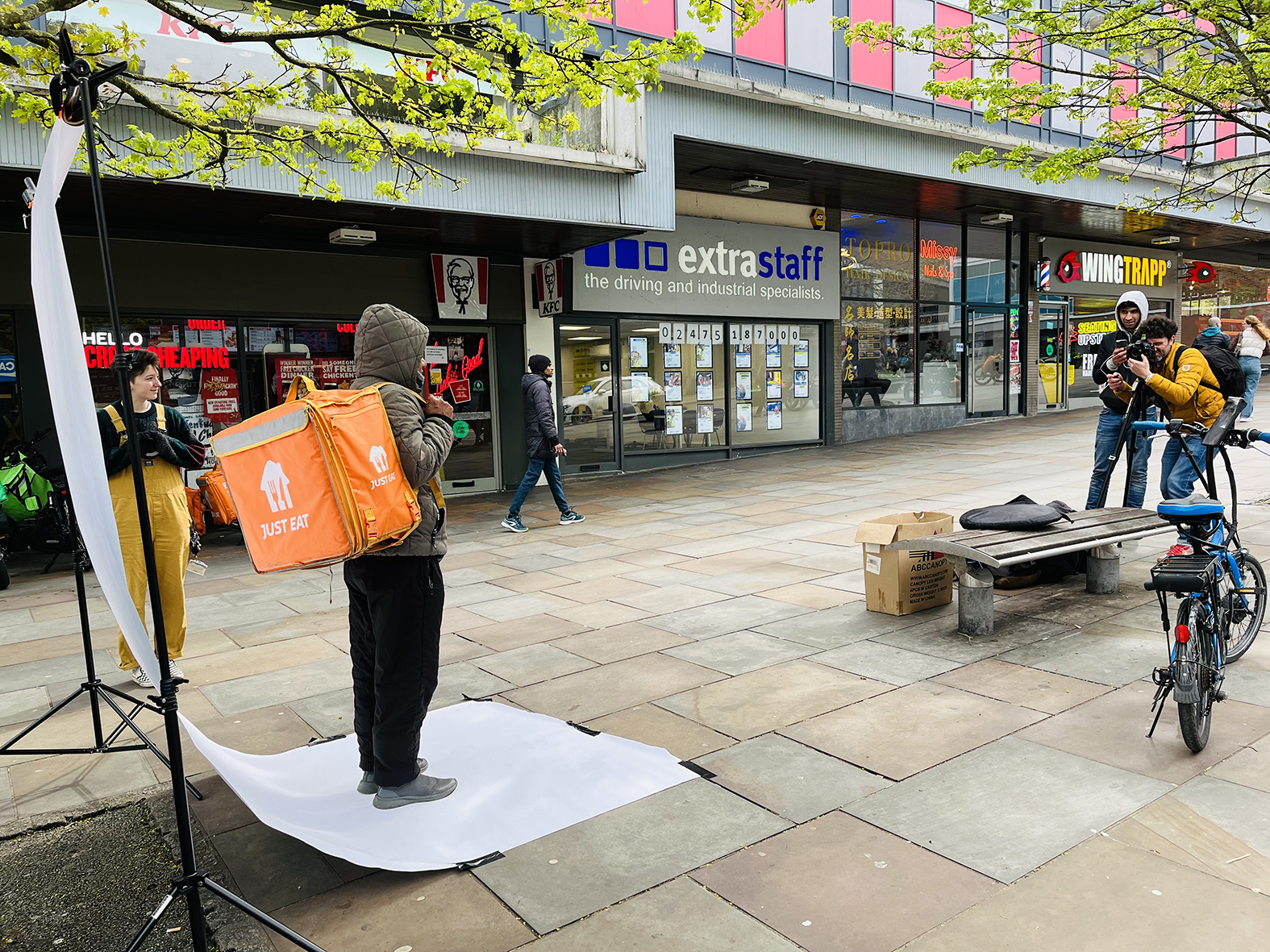
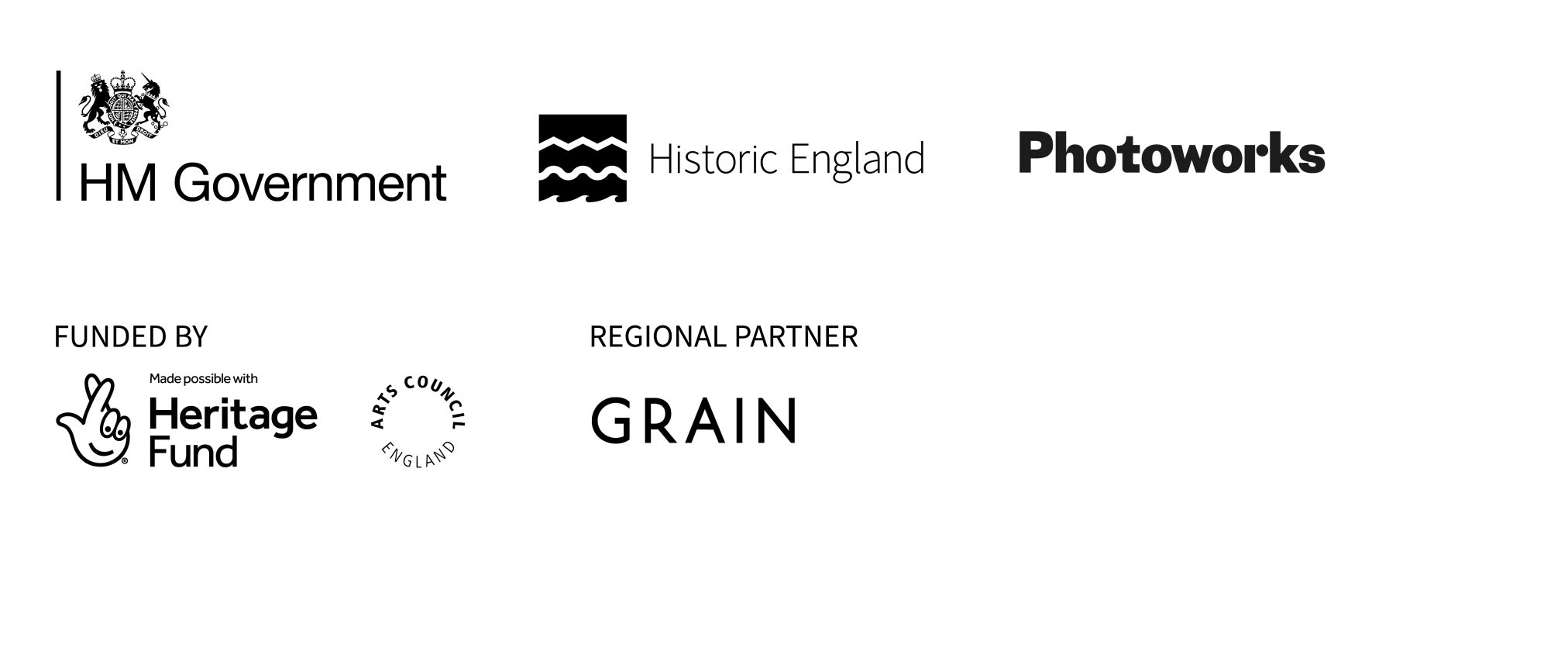
26 03 2024
THE BACKBONE
GRAIN Projects is delighted to be working with artist and photographer Ayesha Jones on ‘The Backbone’, where she turns the camera on herself as she develops new work that explores emotion, the body and the condition Idiopathic Scoliosis. As part of the project Jones is working with her own archive, made when she had surgical treatment in her 20s, in collaboration with other women with the condition and with medics who specialize in this field. Throughout the project Jones will reflect on her own experience of the condition as well as collaborating with others. Jones developed scoliosis at puberty and began surgical treatment in her 20s when her spine had progressed to a 100 degree curvature. The work she made at that time explored the experience of adolescence and the visibility of the curvature, the impact it had on relationships, lifestyle and self-esteem.
She is now revisiting this work as well as making new work for a publication, to be designed by Chris Neophytou. The project and publication is supported by GRAIN Projects and Arts Council England.
Ayesha Jones (b. 1990) is an emerging artist based in the West Midlands. She works predominantly with photography and film and is interested in art as a catalyst for growth, healing and social impact. Jones’ work has been exhibited nationally and internationally and she has won awards, including Magnum Photos and The Photography Show’s 30 under 30 international award, Portrait of Britain (2022 and 2023) and Decade of Change.
Jones’ ’solo exhibition Motherland was exhibited as part of Coventry UK City of Culture 2021. In this new work she used her family lineage as a mixed heritage person, to highlight the interconnected nature of identity, humanity, nature and all things.
Ayesha has recently worked on a commission with Ikon Gallery and Birmingham Hospice, exploring themes around ageing and end of life. Her work Leave A Light In My Room was exhibited at Ikon Gallery in August 2023.
Jones is currently working with Multistory and the Gaia Foundation for the national We Feed
the UK project which documents the UK’s regenerative farmers.
21 02 2024
New Narratives in Photography, Artist Talk
5th March 2024
1 PM – 2 PM (UK) / 6 PM – 7 PM (PK)
Zoom | Free
Register
Artists Asad Ali Zulfiqar, Hira Noor, Ume Laila and Waleed Zafar talk about their new work, made during the New Narratives in Photography residency programme, including a conversation about the importance of international collaboration and professional development opportunities.
The four artists all have a unique and personal approach to photography, exploring themes of identity, gender, diaspora and place making, they all have something to say about the world we live in. They come from a place of care, compassion and collaboration; their work is based on research and conversation and their artwork is of great relevance and interest, both as emerging practitioners in Pakistan, and to the photography scene internationally.
New Narratives in Photography has been produced by GRAIN Projects (Birmingham, UK) and Tasweerghar (Lahore, Pakistan), supported by the British Council’s Arts Residency Grants Programme 2023-2024.
You can see New Narratives in Photography exhibited at MAC (The Midlands Arts Centre, Birmingham, UK) until 27th May, at WOW Festival (Lahore, Pakistan), at the Alhamra Gallery from 2nd – 3rd March, and at Tasweerghar (Lahore, Pakistan) from 5th – 9th March.
Register for free here.
Photograph by Tegan Kimbley
14 02 2024
PICTURING HIGH STREETS
In 2021-2022 artist Tim Mills worked as Photographer in Residence in Coventry, as part of Picturing High Streets; a national cultural programme for High Street Heritage Action Zones, led by Historic England, Photoworks, and in the West Midlands, GRAIN Projects.
Using a socially engaged approach, working with local communities, Tim created a contemporary response to The Burges, one of the few traditional historic high street areas surviving in Coventry.
Operating within a small, localised geographical area and, informed by industries that defined the city of the past and those that shape it today, he explored the exchange of goods and services by engaging with shop owners and the wider community in photographic acts and workshops, harnessing the skills and expertise of local businesses to create the art works.
Tim produced a range of small, experimental studies that continue his preoccupation with ideas of transience, place, heritage and community. Using photography, moving image, sound, textiles and performance, the collaborative outcomes feature multiple authors and voices.
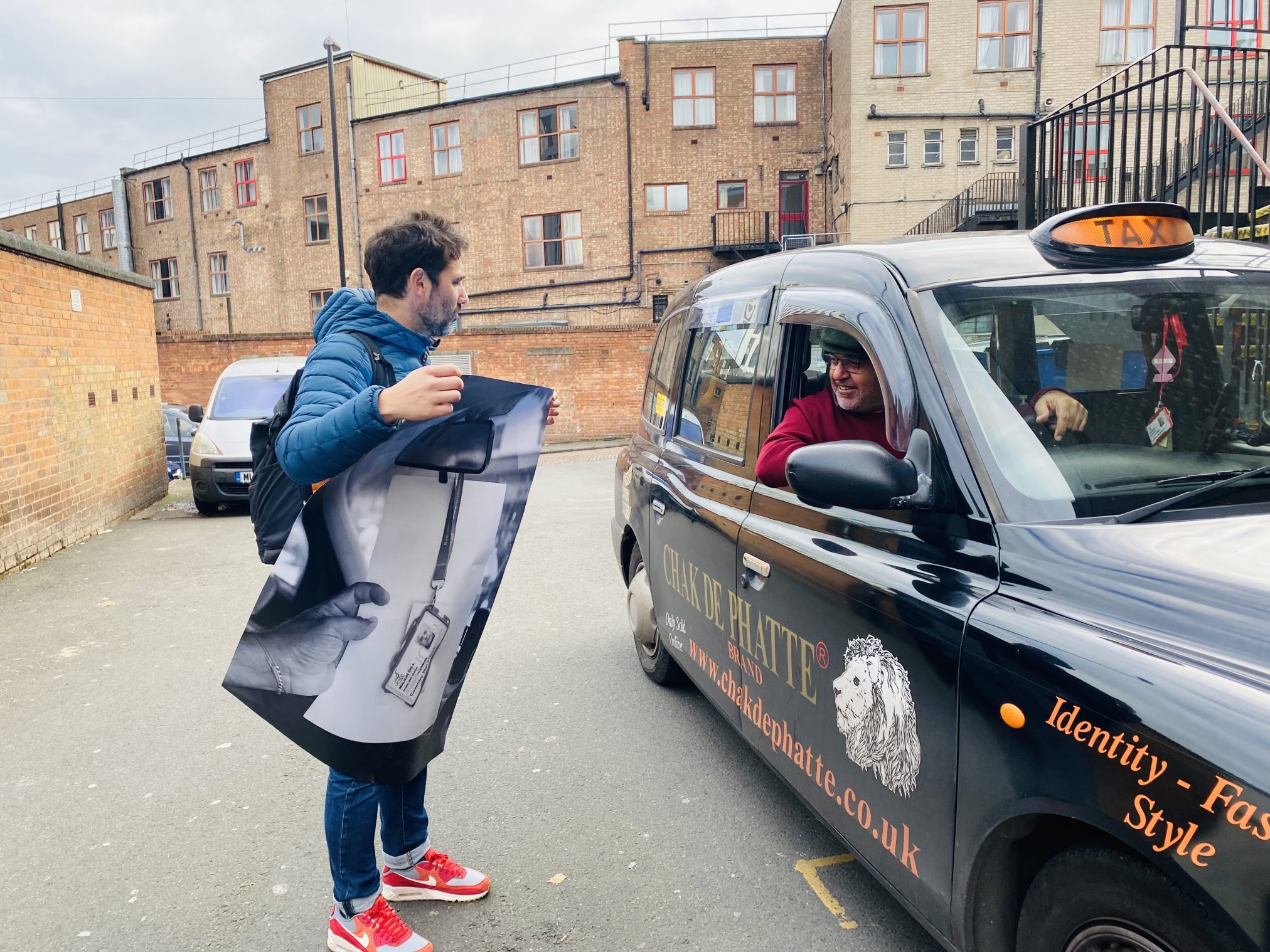
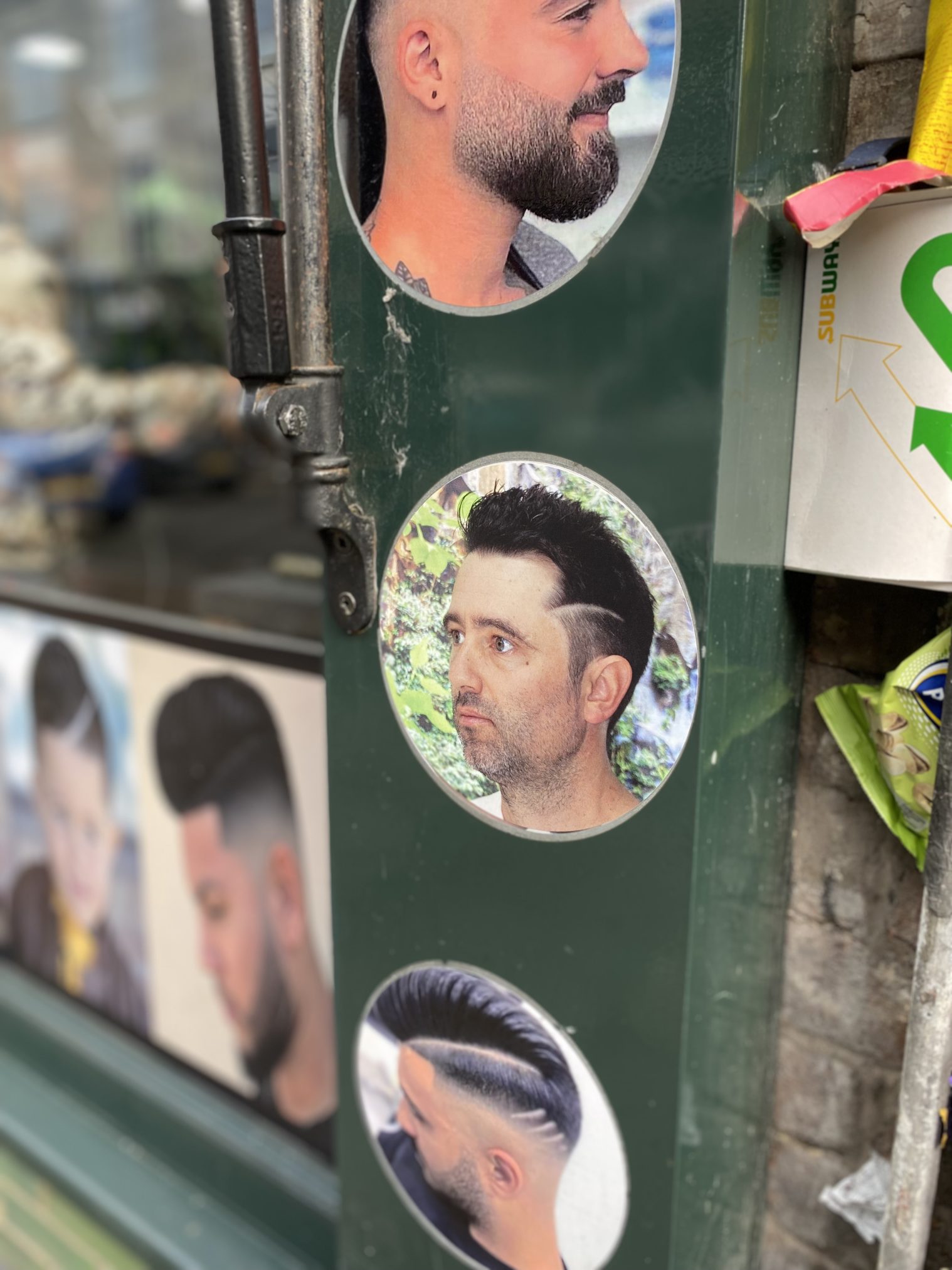
14 02 2024
Picturing High Streets
As Photographer in Residence in the historic town of Stoke, Natalie Willatt has worked alongside diverse communities, each a part of the town, and each welcoming her to their places of congregation. With a focus on belief and faith, in its broadest sense, Natalie’s main interest has been in the behaviours and gestures of people partaking in worship, music, football and heritage.
The two year residency culminated in an exhibition at Spode Museum. During this time Natalie worked collaboratively with individuals and communities, attending events, leading workshops and photo-walks and documenting people’s lives. The photographs, exhibited at the museum, show congregation, community and union. They offered an alternative view to the commonly held idea of a neglected high street where a celebration of life can still be found behind closed doors.
Photographer Natalie Willatt says; ‘Stoke is derived from the Old English stoc, a word that at first meant little more than place, but which gained more specific connotations. These variant meanings included meeting place and place of worship. In dancing with church goers at the close of a thanksgiving service; being one of many voices singing Delilah in the wake of a football win; observing a moment of quiet reflection over Diwali candles and in pausing to listen between bell rings I have found moments of reflection, expressions of faith and a celebration of community.’ ‘I would like to express my heartfelt thanks to everyone involved with the project including people at: Guru Nanak Gurdwara, Living Water Parish Church, Stoke Minster, including their bell ringers, Staffordshire Community Choirs, The Kings Hall Northern Soul all-nighters, Ye Olde Bull and Bush, Spode Museum, WonderWomen, The Social Agency, Our People Our Places photography group, the family histories group at Stoke Library and photography students and staff at Staffordshire University.’
The residency is for Picturing England’s High Streets, which is a three-year project as part of the national cultural programme for Historic England’s High Street Heritage Action Zones.
For more information about the national programme and projects happening across England please visit www.photoworks.org.uk
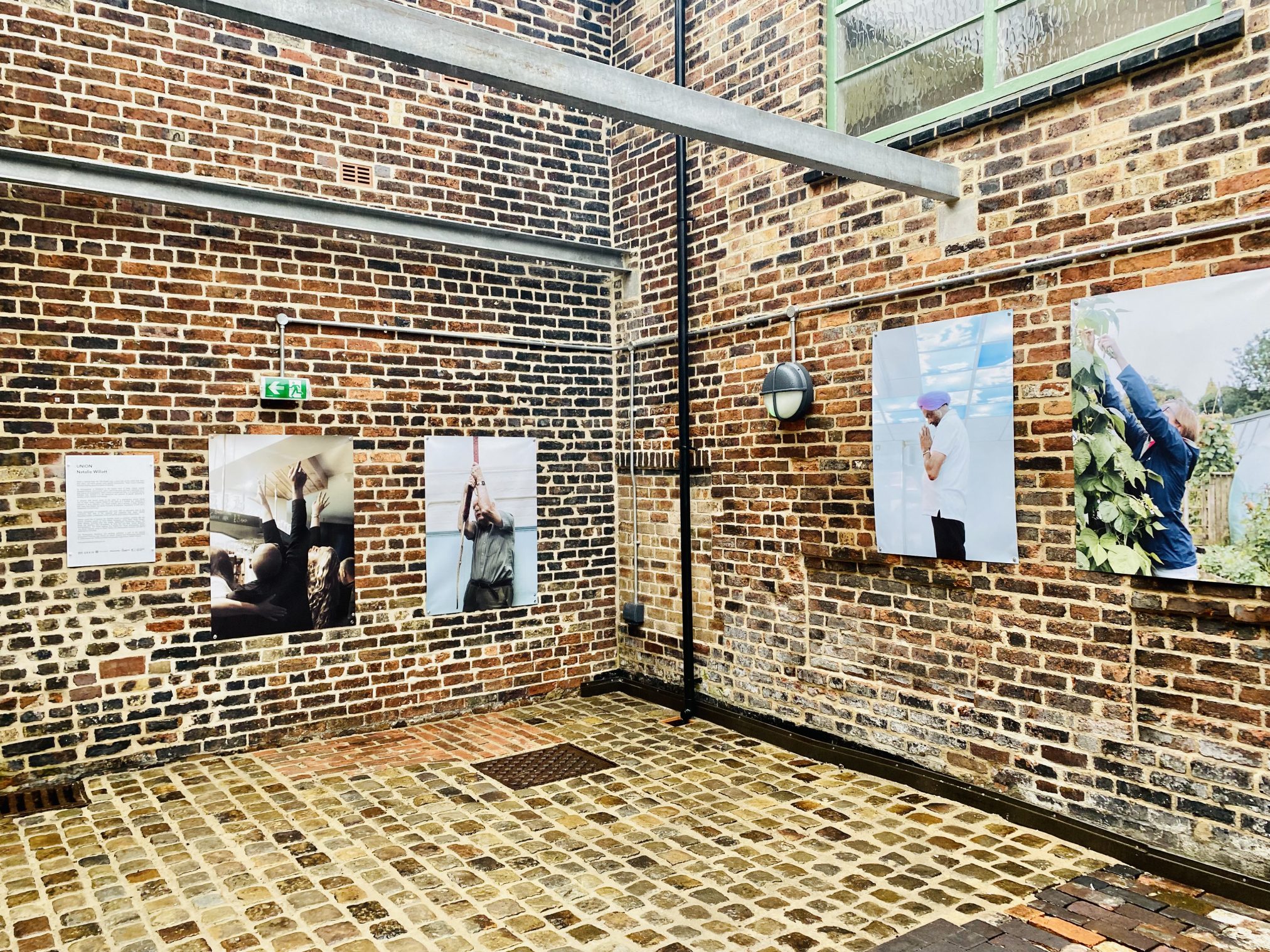
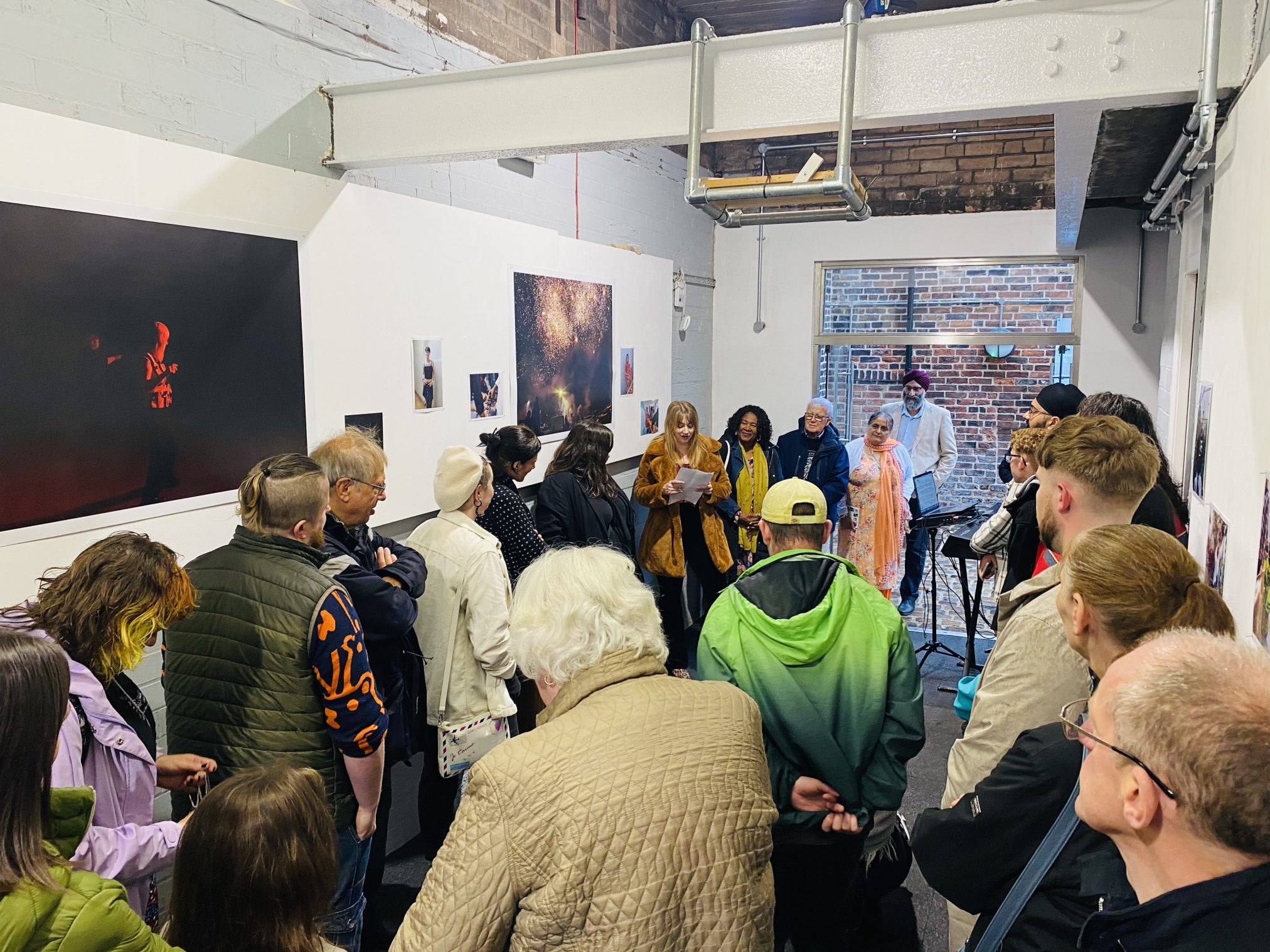
14 02 2024
Roo Dhissou
GRAIN are delighted to be working with Birmingham based artist Roo Dhissou as she develops, researches and creates new work titled A Voyage on Water – The Komagta Maru Revisited.
The new body of work will be made in collaboration with communities associated with the Sikh and Punjabi diaspora in Vancouver through which the artist will develop their socially engaged arts practice. They will embed themselves within the community to formulate a photographic project in relation to their own lived experience, being both British Panjabi and of the Sikh faith.
In April 2023, for a 2-week period Roo Dhissou will immerse themselves within the Sangat (community) at Khalsa Diwan Society (KDS) Ross Street Gurdwara, where they will engage with the diaspora community, Seva (selfless service) team and the museum archive of the Komagata Maru incident 1914. Through socially engaged arts practice they will collaborate with the community to formulate a photographic project surrounding the Sikh and Punjabi diaspora in Vancouver. They will engage with the photographic archive of the 1914 incident present at the Museum as well as contemporary histories through the lives of those working to maintain the Sikh temple currently through practices of Langar (community kitchen and practice of food sharing) and Seva.
The work will explore intergenerational and international migration histories through social gathering, archive and relationships between food and communities. The outcome of this research period and Commission will take shape in the form of a photographic essay, symposium, or video and perhaps a conference where the Artist will share their findings and documentation.
The project will be shared and disseminated in late 2023.
Roo Dhissou is an artist and doctoral researched who works with communities, diasporas and her own histories. Using socially engaged practice, cooking, craft, performance and installation her explores how communal and individual identities are formed. Her practice based PhD is entitled Cultural Dysphoria: exploring British Asian women’s experiences through arts practices. She is the recipient of several awards, most notably the Tate Liverpool Artist Award 2020.
Image credit: Passengers aboard the SS Komagata Maru in 1914.Image: James Luke Quiney fonds/City of Vancouver Archives/AM 15984-:CVA 7-122.
A qissa (quisse plural) is a tradition of Punjabi oral storytelling with communities which emerged when the local Punjabi people and migrants from the Arab peninsular and contemporary Iran fused.
This event was a culmination of research (both archival and social) and the presentation of new work carried out by Roo Dhissou. Commissioned by GRAIN Projects, Roo’s research came together through collaboration with communities associated with the Sikh and Punjabi diaspora in Vancouver. The research was based around the history of the Komagata Maru in Vancouver in 1914. Using quisse, Roo recounts her memories of the research trip, presenting us with oral histories of her time spent in Canada with the local gurdwaras, Sikh and Punjabi communities, researchers and activists.
For more information on the project to date you can visit https://grainphotographyhub.co.uk/portfolio-type/roo-dhissou/ and Roo’s Instagram takeover @grain_projects
A GRAIN Projects commission, supported by Arts Council England and Birmingham City University
14 02 2024
Modern Muse
GRAIN commissioned a new series of portraits by Arpita Shah that explore South Asian female identity. The ‘Modern Muse’ portraits visually and conceptually explore the ever shifting identities and representations of South Asian women. Shah draws from and subverts Mughal and Indian miniature paintings from ancient and pre Colonial times as she examines the intersections of culture and identity, drawing on the women’s lived experiences and her own journey and life.
The portraits give an insight into the perspectives of what it means to be a young British and Asian woman. Shah examines the intersections of culture and identity, drawing on the women’s lived experiences and her own journey and life.
Arpita Shah was born in Ahmedabad in India and spent an earlier part of her life living between India, Ireland and the Middle East before settling in the UK. This migratory experience is reflected in her practice, which often focuses on the notion of home, belonging and shifting cultural identities. In Modern Muse she does this in collaboration with women who are also artists, creatives and educators based in Birmingham and the West Midlands. The portraits were collaborative in nature and during their participation the women spoke of their own experiences.
Shah’s work often draws from Asian and Eastern mythology, using it both visually and conceptually to explore issues of cultural displacement in the South Asian diaspora. She states: “As a South Asian artist it was important to challenge representations of South Asian women in Mughal and Indian miniatures, but also comment on the visibility of women of colour as ‘Muses’ in Western art history. I made Modern Muse for South Asian girls and women, for them to feel represented.”
Modern Muse has been exhibited at the Centre for British Photography and a publication of the work can be purchased here.
13 02 2024
CANNOCK CHASE RESIDENCY
GRAIN Projects, worked in partnership with Forestry England, on a new Photographer In Residence opportunity at Cannock Chase, Staffordshire. This residency took place from July to October 2023 and was awarded to artist, writer and curator Louise Beer following a national open call.
Cannock Chase Forest (CCF) is a unique space that sprawls over 2,684 hectares, embracing a mosaic of coniferous and broadleaf woodlands along with expansive open spaces in Staffordshire, nestled within the West Midlands. Its features include ancient geology as well as post industrial interventions, forest and moorland.
Cannock Chase is mainland England’s smallest AONB. Most of the forest is freehold as part of the public forest estate and is designated as Open Access land. Much of the woodland in the west and north eastern corner of the plan area is leased to Forestry England. The area lies within the Cannock Chase Area of Outstanding Natural Beauty (AONB) and the majority of Forestry England land is made up of conifers planted for timber production. There are also areas of ancient woodland, wetland, wood pasture and open heathland within the forest.
Louise is an artist and curator, born in Aotearoa New Zealand. She now works between London, Margate and Aotearoa. Louise uses installation, moving image, photography, writing, participatory works and sound to explore humanity’s evolving understanding of Earth’s environments and the cosmos. Her experience of living under two types of night sky, the first in low level light polluted areas in Aotearoa, and the second in towns and cities in England with higher levels of light pollution, has deeply informed her practice. She explores how living under dark skies, or light polluted skies, can change our perception of grief, the climate crisis and Earth’s deep time history and future.
Recent awards, residencies and commissions include Delfina x Gaia Art Foundation Science Technology Society UK Associateship (2020), Arts Council England Developing Your Creative Practice Grant (2021), North York Moors Dark Skies Residency with solo exhibition (2021), Amant Siena Residency (2021), CreaTures Art/Tech/Nature/Culture Residency (2021), Art + Air Exhibition Commission (2022), the Jean Harrison Commission (2022), Photo Fringe 2022 OPEN Eco (2022), Vera C. Rubin Observatory Kickstarter Grant with the University of Canterbury Mount John Observatory, Aotearoa New Zealand (2022), Derby Cathedral and FORMAT23 Photography Festival (2023). Earlier this year, Louise was awarded her second Arts Council England Developing Your Creative Practice grant.
www.LouiseBeer.com
12 02 2024
SEE ME
Ming de Nasty
12th January – 14th April
Shrewsbury Museum & Art Gallery & Theatre Severn
The exhibition features archive photographs collected from participants and new portraits by Ming de Nasty. The photographs were curated from workshops that took place in Shropshire with LGBT+ older individuals during 2023.
SEE ME is curated from a new heritage and photography project that explores and celebrates older LGBT+ identity. Participants have shared photographs, from their own albums and collections, told stories and recalled memories which speak of identity and representation. Workshops have taken place in the county led by artist Ming de Nasty and GRAIN Projects.
As an important legacy, work from the project will feature in a publication and will be included in a new LGBT+ archive at Shropshire Archive Service.
Exhibitions as part of this project will also take place at Theatre Severn, Shrewsbury Library and The Hive, Shrewsbury (during the LGBT+ History Festival).
This project is a partnership with LGBTSAND and is generously supported by the National Lottery Heritage Fund and National Lottery players.

09 02 2024
NEW NARRATIVES IN PHOTOGRAPHY
An international collaboration between Tasweerghar (Lahore, Pakistan) and GRAIN Projects (Birmingham, UK), as part of the British Council Pakistan Arts Residency Grants Programme.
Exhibitions due to take place at MAC, Birmingham, UK from 8th February and at the WOW Festival at Alhamra Art Gallery and Tasweerghar, Lahore, Pakistan from 2nd March 2024.
GRAIN Projects (UK) and Tasweerghar (Pakistan) have announced the dates for two exhibitions taking place in celebration of New Narratives in Photography, part of the British Council Pakistan Arts Residency Grants Programme 2023-2024.
Artists Asad Ali Zulfiqar, Hira Noor, Ume Laila and Waleed Zafar, will be showing new work, made during the residency at MAC, (The Midlands Arts Centre, Birmingham, UK) and at WOW Festival, at the Alhamra Gallery, followed by an exhibition at Tasweerghar.
The artists have taken part in an international mentoring programme, an exchange that included a visit to galleries and festivals in the UK, including the V&A Museum, London, The Photographers Gallery, London, BOP Festival, Bristol and IKON Gallery, Birmingham, all of which has contributed to the development of their practice and the inspiration for new work.
The four artists all have a unique and personal approach to photography, are ambitious in their work and have something to say about the world we live in. They come from a place of care, compassion and collaboration; their work is based on research and conversation and their artwork is of great relevance and interest, both as emerging practitioners in Pakistan, and to the photography scene internationally. The themes they explore include gender and identity, place making and diasporic and colonial heritage.
GRAIN and Tasweerghar are arts organisations that create new opportunities for diverse and emerging artists and photographers, supporting the development of skills and opportunities. In collaboration they will deliver a residency project that supports diverse and marginalised Pakistani artists curated in the context of prevalent themes including social justice, identity, gender, diaspora and home.
It is an enormous credit to the artists and the residency programme that the work will be shown at prestigious international venues, including the Women of the World Festival Pakistan, that celebrates women and their achievements in arts and culture.
Rabannia Shirjeel, Founder and CEO of Tasweerghar, said: “This year long art residency for photographers has been an exciting project for everyone involved. The British Council’s Arts Residency Grants offered a new level of exposure to the artists and collaborators. I am certain that this will open more local and international opportunities for artists and inspire them to take their practice forward. I look forward to presenting these projects to new audiences soon.”
Laila Jamil, Head of Arts at the British Council Pakistan, said: “Through our Arts Residency Grants Programme we have supported five projects which have engaged 32 artists in residencies across cities in the UK and Pakistan. This residency for photographers is one of the many exciting projects we have helped support and we look forward to the exhibitions in the UK and Pakistan.”
Image credit: Matti ka bertan hai, piyary, Matti ma mil jana hai, Friend, This Pot Made of Clay, Will Turn to Earth with its Final Play. Hira Noor, 2023
16 01 2024
THE STATE OF PHOTOGRAPHY
The State of Photography is our national photography symposium that is programmed in Birmingham as a biennial event. The symposium provides a platform to listen to those who are making new work, pioneering new discourse and critical perspectives while examining the contemporary world, delving into prevalent themes that affect our lives including the climate emergency, post Brexit politics, war, identity and community cohesion.
For each event we are joined by acclaimed and outstanding photographers and guests to discuss what our world looks like, the rethinking that photography poses and the themes we consider during this unsettling time. Each have different approaches as we hear from those whose work is based on their own lived experience, who in a more closed and divided world have looked inside and at themselves as a starting point, putting their own experience and context front and central.
The role of photography is changing and caring, as experience, collaboration and social responsibility become the focus. Photography can impart the greatest truth of our times and sheds light on injustices, inequality and other aspects of our lives and society. It seems today –more essential than ever to explore the role that photography can play.
Those that have joined GRAIN for The State of Photography events include Anthony Luvera, Arpita Shah, Broomberg & Chanarin, Camilla Brown, Clare Hewitt, Jermaine Francis, Joanne Coates, Katy Barron, Lydia Goldblatt, Mark Neville, Maryam Wahid, Sam Laughlin, Daniel Meadows, Julian Germain, Clementine Schneidermann, John Hillman, Liz Wewiora, Anand Chhabra, Sam Ivin, Andrew Jackson, Edgar Martins, Kajal Nisha Patel, Michelle Sank, Peta Murphy (Arts Council England), Simon Constantine, David Birkitt, Tim Clark, Ángel Luis González, Louise Clements, Uncertain States Magazine, Lara Ratnaraja, Karen Newman, Faye Claridge.
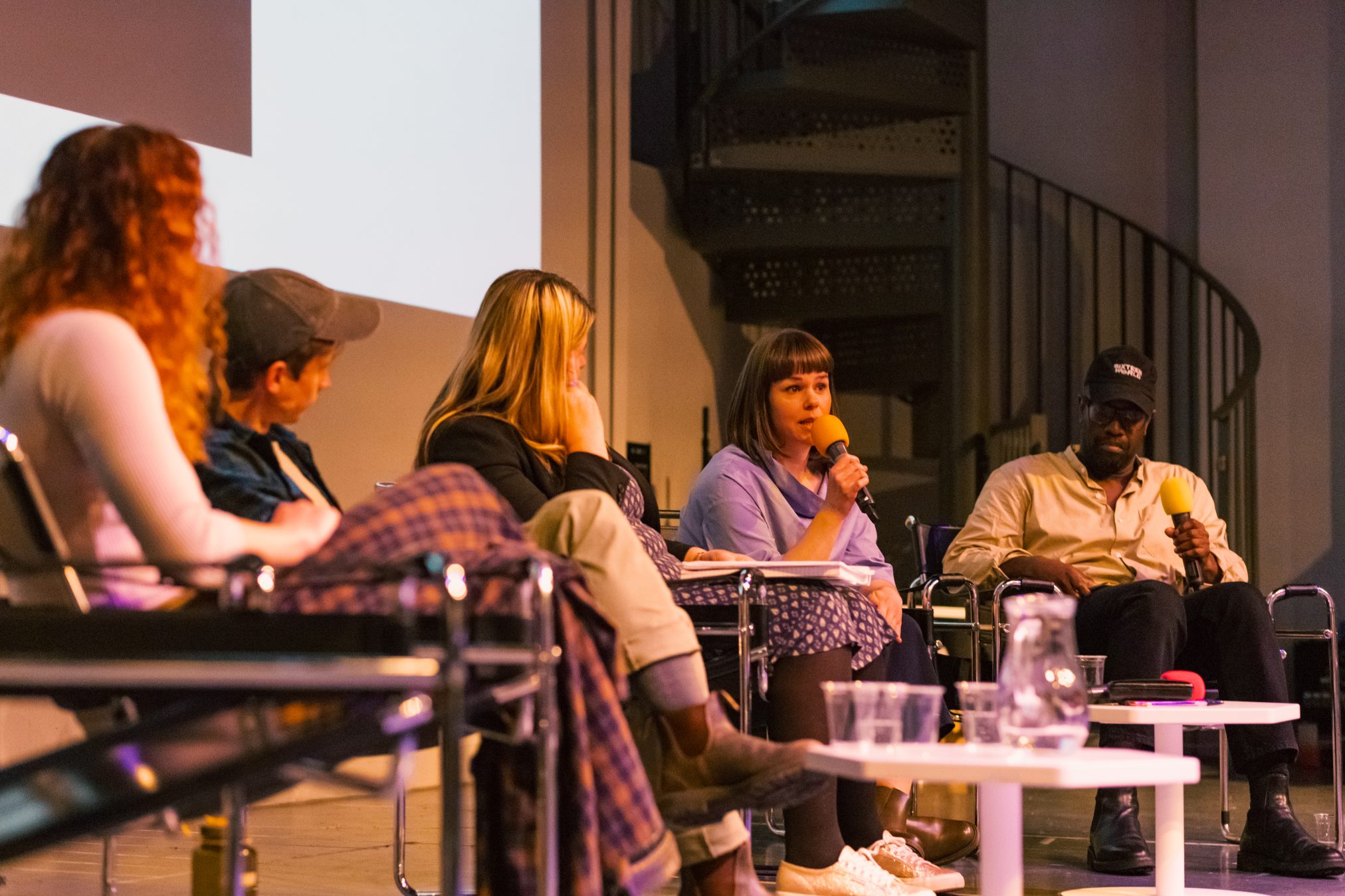
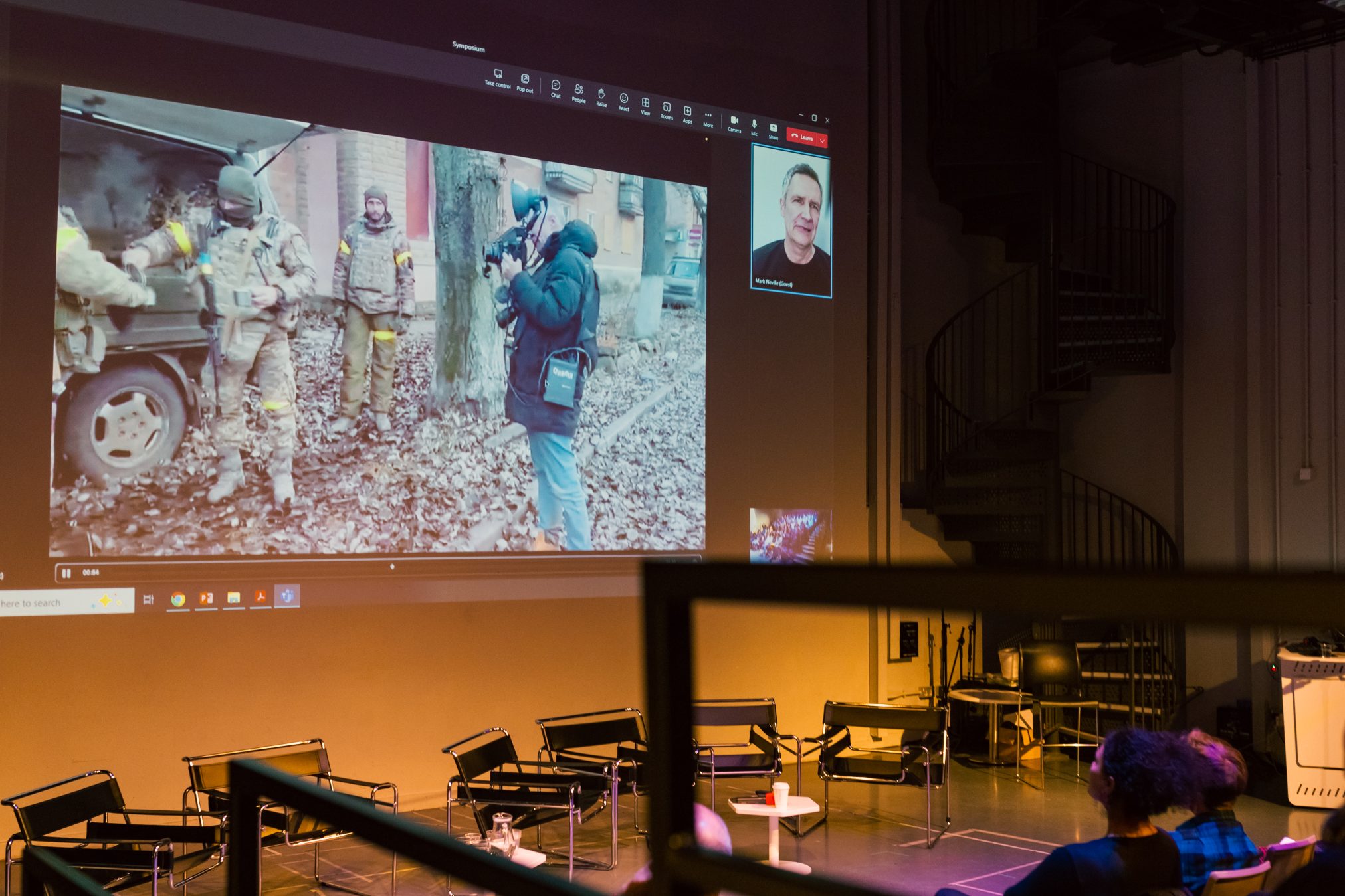
16 01 2024
PORTFOLIO REVIEW DAYS
GRAIN Projects regularly delivers days that are dedicated to portfolio reviews with industry professionals, experts and photographers. The days are designed to advise and support the development of photographers’ portfolios and take place online and in person across the West Midlands region.
Portfolio Review Days focus on providing advice and developing skills required to build and present portfolios, assisting participants in making submissions, securing commissions, and preparing for appointments and interviews. As part of the day, there are presentations by experienced individuals from the photography world and group and individual one-to-one advice and reviews.
For many photographers and artists, a portfolio serves as a primary way to secure work, commissions and exhibitions and to showcase your project. A portfolio allows you to demonstrate your talent, your career and your ambition. Our aim with every Portfolio review is to emphasise the importance of the artist’s portfolio and offer advice and support about presentation and image selection.
Places must be booked in advance and admission prices are subsidised so that they remain affordable and practical.
Previous reviewers have included Niamh Treacy, Curator and Coordinator of FORMAT International Photography Festival, Raquel Villar-Pérez, academic and curator at Impressions Gallery, Kalpesh Lathigra, photographer, Bindi Vora, artist and curator, Jonny Briggs, artist, Tom Lovelace, artist, Malcolm Dickson, Director Street Level, Lucy Mounfield, Curator IKON Gallery, Liz Hingley, artist, Anthony Luvera, artist,Sebah Chaudhry, Producer and Curator, Nilupa Yasmin, artist and educator, Mario Popham, photographer and educator, David Severn, photographer, Edmund Clark, artist.
For information on future events please check the GRAIN website and social media platforms.
03 01 2024
PHOTOGRAPHERS TALKS
GRAIN Projects host a broad range of Photographers Talks in person and online that inspire us and create opportunities to showcase new and award-winning projects.
The Photographers Talks are subsidised and are affordable and accessible to audiences. Places must be booked in advance.
Photographers Talks that GRAIN have hosted include; Andrew Jackson, Arpita Shah, Anand Chhabra, Chloe Dewe-Mathews, Clare Hewitt, Daniel Meadows, David Hurn, Edgar Martins, Faye Claridge, Geoff Broadway, Helen Marshall, Jonny Briggs, Kate Peters, Kavi Pujara, Laia Abril, Liz Hingley, Lisa Barnard, Louise Beer, Lua Ribeira, Lottie Davies, Mahtab Hussain, Mark Neville, Mark Power, Maryam Wahid, Nilupa Yasmin,Mat Collishaw, Matthew Murray, Polly Braden, Simon Roberts, Tom Hunter, Trish Morrissey, Vanessa Whinship, Yan Wang Preston.
GRAIN will promote all future Photographers Talks via social media and this website.
02 01 2024
EAST MEETS WEST
EAST MEETS WEST is a national professional development programme for photographers devised and delivered by GRAIN Projects and FORMAT International Photography Festival. It is supported by Quad, Derby, Birmingham City University and Derby University.
2022/23 was the last iteration. Further news about the 2024/25 EAST MEETS WEST programme will follow soon. .
The masterclass programme is designed for UK-based emerging photographers, providing professional development, inspiration, guidance, and support in a collaborative learning environment to enable participants to develop their practice, networks, and new unique opportunities. The programme offers a platform for photographers to receive guidance and participate in focused discussions that contribute to their creative practice and career development.
EAST MEETS WEST operates an Open Call submission, is delivered online and in person and requires a small financial contribution from each participant. Past participants have included; Anna Sellen, Amber Banks Brumby, Andy Fell, Chiara Zandona, Emily Ryalls, Ismail Khokon, James Cunliffe, Kat Young, Liliana Zaharia, Louise Taylor, Paul Railton, Ruby Nixon, Rebecca Davis, Ryan Gear, Shona Morgan, Zula Rabikowska, Clare Hewitt, Simona Ciocarlan, Maryam Wahid, Emma Case, Leah Band, Adam Bennett, Caitriona Dunnett, Cheryl Newman, Camille Relet, Ed Sykes, Susanne Hakuba, Pippa Healy, Phil Hill, Christian Jago, Phillipa Klaiber, Elena Kollatou and Leonidas Toumpanos, Nieves Mingueza, Zara Pears, Nat Wilkins, Mandy Williams, Sofia Yala, Wing Ka Ho Jimmi, Mitchell Moreno, Sammie Masters-Hopkins, Tamsin Green, Nicola Morley, Marley Starskey Butler, Mark Hobbs, Lucy Turner, Laura Dicken, Joseph Allen Keys, Jacqui Booth, Emily Jones, Andy Pilsbury, Fraser McGee, Susana de Dios, Anand Chhabra, Oliver Tooke, Tristan Poyser, Jonny Bark, Ilona Denton, Hazel Simcox, Thomas Wynne, Simon Burrows, Philip Singleton, Luke Williams, Luca Crawford-Bailey.
The masterclasses are led by industry and artform experts who share their knowledge and practical advice on developing a successful career. They have included; Amak Mahmoodian, Clare Hewitt, Alejandro Acin, Mariama Attah, Monica Allende, Revolv Collective, Simona Ciocarlan, Tom Lovelace, Anthony Luvera, Andrew Jackson, Vincent Hasselbach, Peta Murphy, Mahtab Hussain, Abbas Zahedi, Natasha Caruana, Colin Pantall, Louise Fedotov-Clements, Mathew Murray, Michael Sargeant, Kate Peters, Bindi Vora, Maryam Wahid, Emma Case.
01 01 2024
Internships
GRAIN is dedicated to nurturing, supporting and enhancing emerging talent in photography. As part of its professional development programme GRAIN offers paid internships for up to six months. These are normally annual opportunities and are advertised across our platforms.
Interns acquire practical experience by closely collaborating with accomplished photographers in various roles, refining their skills and deepening their comprehension of the artform. They have previously assumed a significant role in organising and executing the prestigious FORMAT International Photography Festival and The State of Photography Symposium, as well as going on to win awards and prizes for their work, take up further post graduate studies and work more widely within the visual arts sector.
Previous interns include; Anu Gamanagari, Louis Painter, Emily Jones and Adam Neal.
31 12 2023
Mentoring Scheme
As part of GRAIN’s commitment to professional development opportunities and investing in new talent mentoring sessions are provided to support emerging photographers, artists and curators. These sessions are often provided online and in collaboration with other arts organisations and partners including Birmingham City University. Advice and feedback is provided on portfolios, creative direction, curation, new opportunities, publishing and other aspects of the sector and industry.
30 12 2023
Re-Framing Culture
Re-Framing Culture was a six-week training programme designed for museum, gallery, library, and independent photography and arts professionals to explore the potential value and impact of delivering socially engaged photography commissions.
Working with lead partner Open Eye, GRAIN devised and delivered the programme in the Midlands. Presenters and advisors on the programme included Anand Chhabra, Anthony Luvera, Clare Hewitt, and Liz Wewiora. The call was open to photographers, artists, curators, and producers from diverse backgrounds and experiences, encompassing recent graduates, self-trained individuals, and seasoned culture professionals. Participation was free and the programme was supported by the Art Fund.
Sessions covered both the theory and artistic practice of socially engaged lens-based media, along with presentations of case studies and discussions about logistical and ethical considerations. Partners in this national programme were Open Eye Gallery, Heart of Glass, GRAIN Projects, NEPN (North East Photography Network), and Fotonow CIC, all of which are members of the Socially Engaged Photography Network (SEPN).
29 12 2023
Generations
GENERATIONS is a ground breaking project by Julian Germain. New work was commissioned for the Birmingham 2022 Commonwealth Games that saw 30 families taking part to mark a moment in time and celebrate the diversity and heritage of Birmingham and Black Country.
Julian Germain’s GENERATIONS use the family portrait format to create a fascinating commentary on time, past and future in people’s lives. .
The photographs that were made with the 30 families appeared in the public realm over the summer months. They were featured on billboards, banners, poster sites, hoardings and across the concourse of Birmingham New Street Station. Besides exploring universal human themes, GENERATIONS offered an authentic portrayal of a diverse region, serving as both an invaluable historical record and a thought-provoking work of art.
Germain’s images reflect upon time itself – the past, present, and future – through their detailed representation of direct lines of genetic descent across four and five living generations. An ongoing exploration of the life cycle, the ageing process, human biology, and characteristics, the project ponders on what individuals inherit through their genes versus as well as what comes from culture and surroundings. .
For the commission, the artist spent time with the families, delving into old family photographs, their history, and their lives, uncovering deeply personal and family histories. GENERATIONS received generous support from Arts Council England and the National Lottery Heritage Fund and was displayed across the city and region via media partner, Jack Arts.
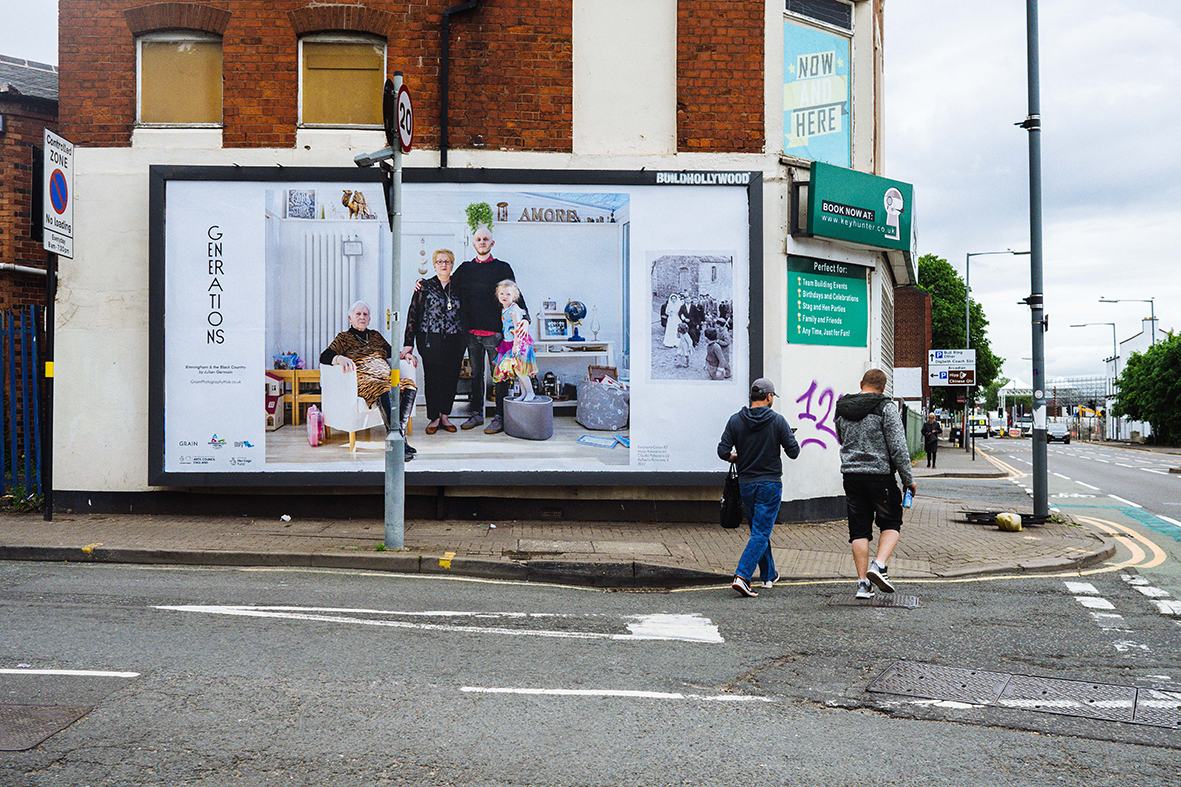
(c) Thom Bartley for Jack Arts
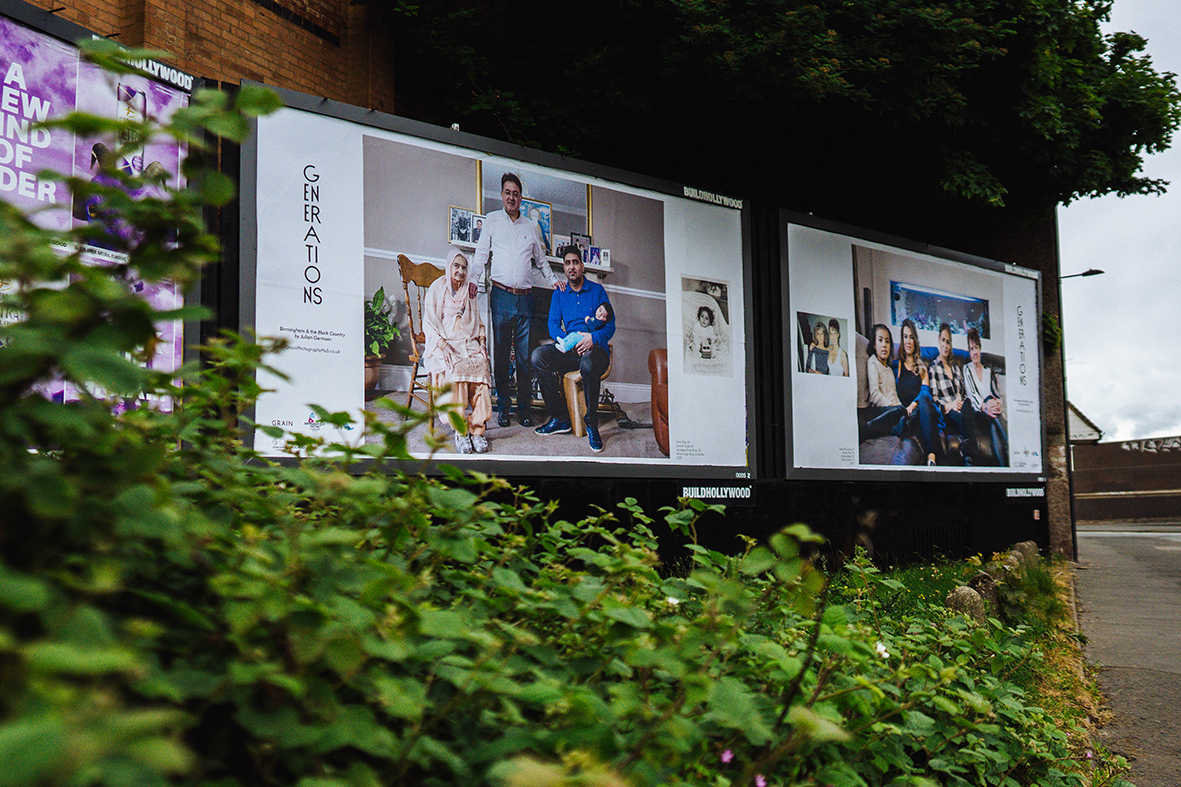
(c) Thom Bartley for Jack Arts
GENERATIONS is generously supported by Arts Council England and National Heritage Lottery Fund.
Thanks to our Media Partner Jack Arts who have brought this to life for us across the city

29 12 2023
GENERATIONS
New writing by Anneka French
Julian Germain’s book The Face of the Century (1999) was published to mark the turn of the millennium through portraits of 100 people arranged by the year of their birth, oldest to youngest. It begins with Lizzie Hutchinson born in 1899 and finishes with newborn baby Rhiannon Germain born in 1999. The captions that accompany each portrait consist of the sitter’s name and year of birth: no more, no less, and because of this, every detail of every portrait assume great importance. The texture of skin, choice of hairstyle or clothes and the expression assumed by each individual are magnified; as fascinating as they are ordinary. Some of the most significant details are those that resist the idea of ‘perfection’: the rain in the hair of Jodie Macdonald b. 1991; the tucked-in collar of Elizabeth Doble b. 1906; Oliver Cook’s runny nose b. 1996; Rhiannon’s calloused top lip, a detail I am especially drawn to since my eldest son had the same feature at the same age. The 100 lives of these people are bound together through the book’s pages; Germain connected them when he invited a random selection of individuals to sit for him. The Face of the Century was published twenty-three years ago, before the pervasiveness of the digital, and nevertheless retains enormous power, largely due to the quality of the portraits but also due to the unique timing and context of the project. There is a good chance that many of these individuals, certainly those who were in their eighties or nineties at the time, are no longer living; the youngest of those photographed will now be adults, part of the so called ‘millennial generation’. What became of each person? What lives they have they since lived and who else’s lives have they touched?
GENERATIONS is an extension and expansion of the research and ideas Germain began with The Face of the Century. Developed by GRAIN Projects in partnership with Multistory as part of Birmingham 2022 Festival, a large-scale cultural programme designed to coincide with the Birmingham 2022 Commonwealth Games, Germain’s focus is this time upon families based in Birmingham and the Black Country that have four or five direct lineage generations. While this is an idea he has been exploring for some fifteen years, this is the first time GENERATIONS has come to this area of the country. Beginning with an open call for families, extensive shoots taking place in people’s homes since November 2021 that centre upon these people as individuals and as integral parts of a complex family structure. Each photograph is shot within the home, with each of those four or five generations arranged in age order, skilfully framed and balanced against the clean lines of a mantelpiece or the softer curves of a sofa or dramatic pair of curtains. The composition of a family is a constellation and inevitably holds multiple tensions and joys within it. Germain is cautious of his work being used to propose an entirely romantic notion of family. He notes that families “have a tremendous hold over our feelings and the connections we make, but as well as being supportive and loving they can sometimes be stifling or dysfunctional too.” Families, are for many of us, relatable and this makes the long exposure photographs that Germain produces rich and compelling. Further, these are documents of this moment in history, cultural and social records of family samples from Birmingham and the Black Country, and the portraits are a recognition of the family unit as something that is greater and more layered than the sum of its parts. GENERATIONS is also an invitation to connect.
In Germain’s GENERATIONS portraits we can trace similarities in facial features, expressions, hairstyles, clothing choices and body language within photographs and across them, finding patterns that bind this group of images together for reasons other than simply circumstance. Jean Ann Perkins and her daughter, granddaughter and great-granddaughter all wear an item of yellow clothing or yellow accessory, for instance, while three of the four generations in Pauline Curtis’ shot wear leopard print clothing and three of the four generations of Herma Hansle’s wear white. Though these may be deliberate choices or serendipity, they reveal something of the connections and synchronicities of thought between these family members as well as something of the fashions and tastes of people within the period of the project. Taken altogether as a body of work, the portraits are indicative of wider global issues, the ubiquitousness of energy smart meters at a time of UK fuel crisis, for example, rooting the photographs in the time of their making. Events from the Beijing Winter Olympics appear on the television in the background of several photographs, with a calendar turned over to March 2022 in Wilbert Francis’ shot. Clocks feature in almost all of them. We understand that tiny details tell larger narratives.
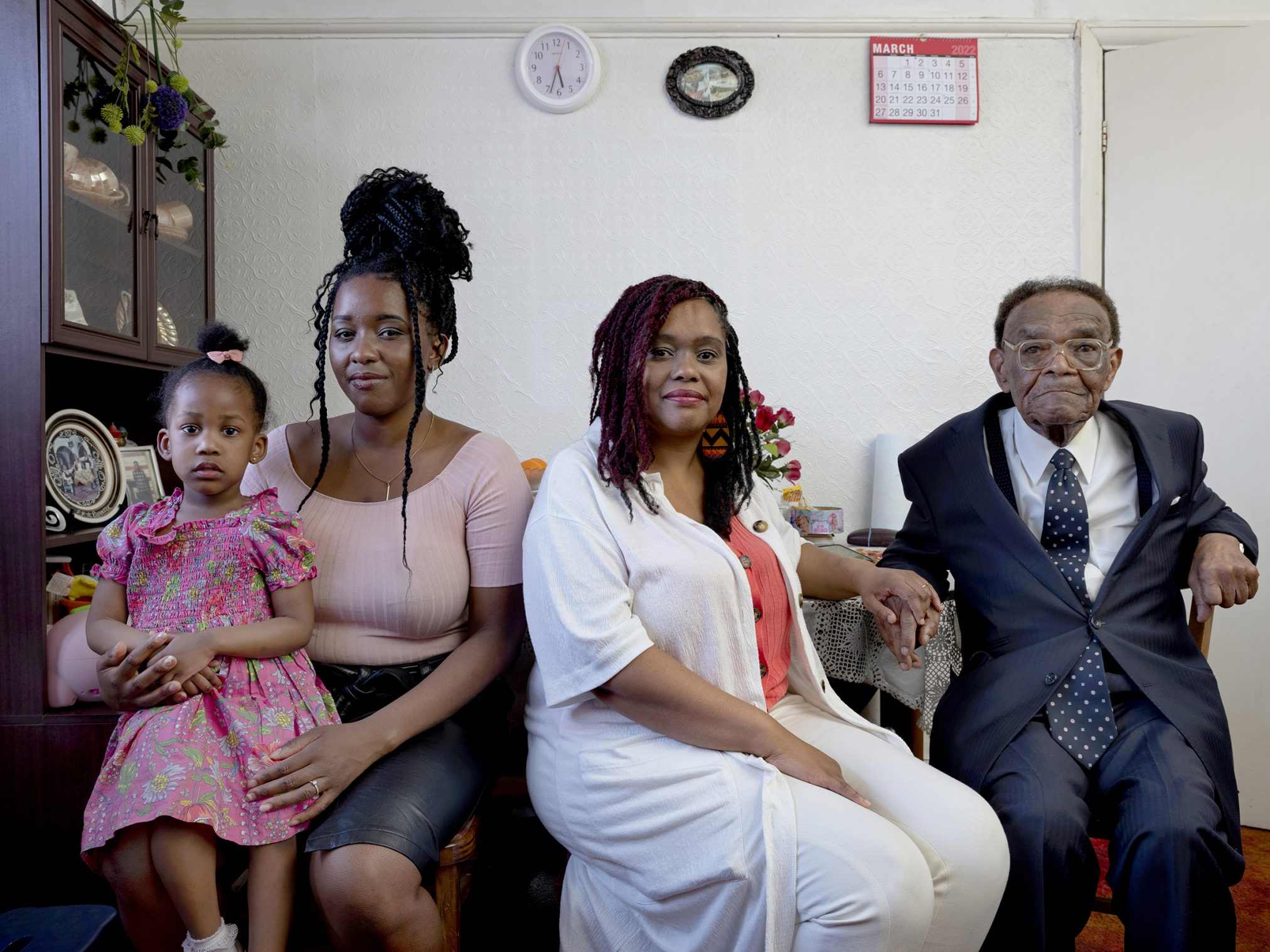
Family dynamics are key throughout and pose and body language feed into this. Formally speaking, the portrait subjects are arranged sitting or standing, often creating a straight horizontal line across the image or in an arc or triangle formation, with central standing figures flanked by seated figures. The physical points of connection between hands, arms, knees, shoulders and laps give the portraits emotional and psychological depth. Many of the younger children of GENERATIONS are balanced on footstools or sofas, elevating them within the frame where adults are standing tall. Reece Sandhu (4) and Rafaella Pulisciano (3) are among those number, boosters a reminder of their physical smallness and hugely important role within their families. Raising children. Another infant who is elevated is one-week old Elliot Price who appears with his identical twin brother Harrison. Elliot’s blue-eyed gaze is at once soft and penetrating as he peers out of his car seat, balanced on a kitchen chair. There are evident links here to Rhiannon in The Face of the Century. A text by Martin Herron written for The Face of the Century notes itis “A book saturated with time … [the photographs] defy interpretation. They are fixed, yet illusive. Right in front of us, yet somewhere in the distance. We cannot see them because their faces are secondary to the gaze, and the gaze obscures our view … This book is a book of secrets … The last image is of a baby. Newborn, unformed – we don’t even know what colour her eyes will be.” GENERATIONS, however, offers us a pretty good guess. Elliot and Harrison’s future selves are foreshadowed; they seem already entirely formed, already the spitting image of not only each other but their father and grandfather, even if their great grandfather’s face is slightly different. Germain tells me that it was the twins’ mother’s birthday when the photograph was taken: it is her birthday cake on the right of the image. Their mother is outside the photograph’s frame, outside of Germain’s criteria of direct lineage, remaining nonetheless present in the portrait through the inclusion of the cake and through her obvious absence. I hope she is having a little lie down. One-week-old twins and a family photo shoot sound a challenge.
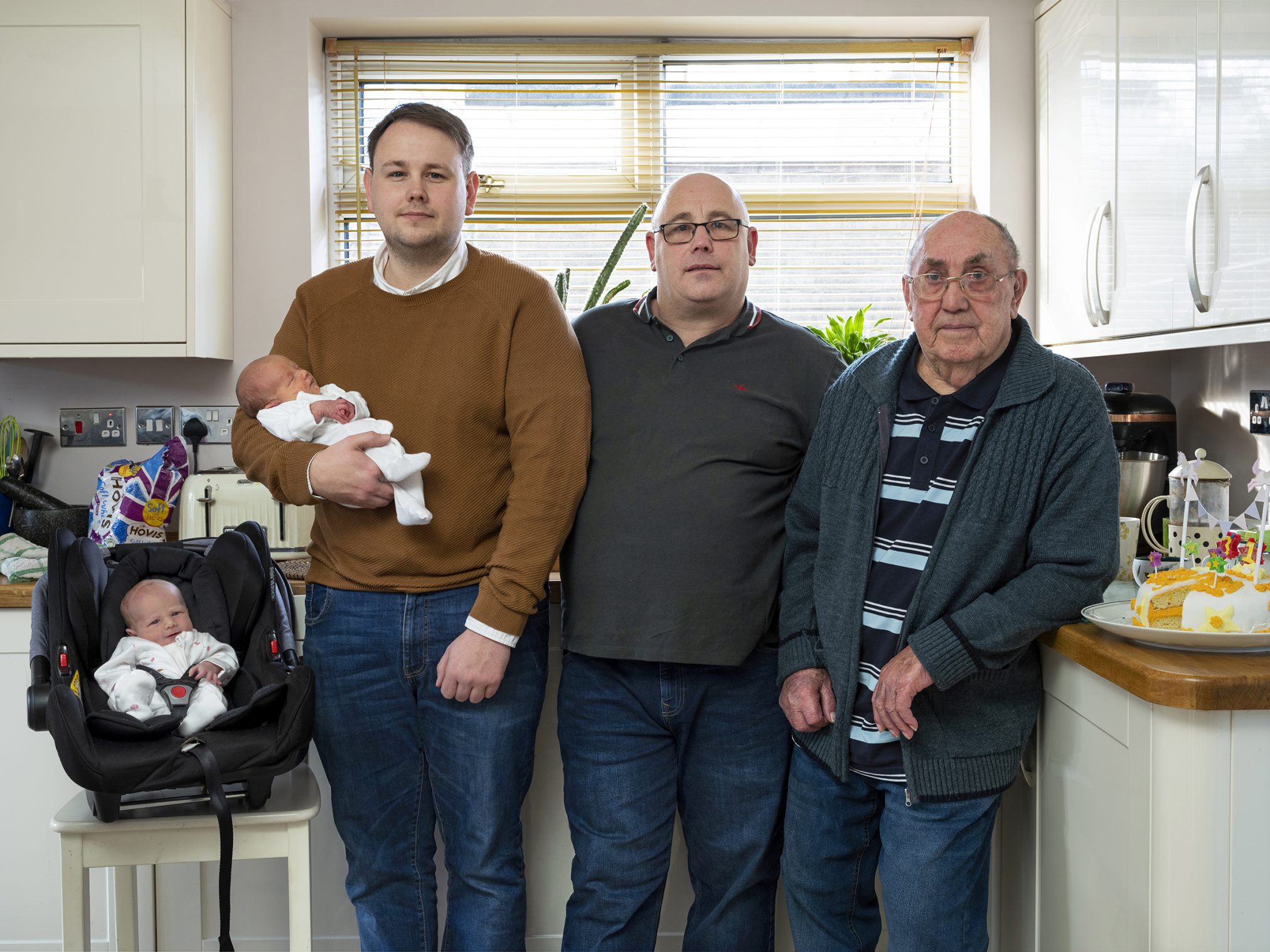
Other of the GENERATIONS photographs find ways to incorporate additional family members too. In the two versions of Adella Peterkin’s images, there are three female adults in shot although what might be an adult male coat and cap appear on wall hooks behind. There are many instances of family photographs (and a drawing or print) visible on walls, mantelpieces, shelves and in pride of place on pieces of furniture. Family photos are arguably the most precious items that many of us hold. Those included here may show those in the portrait itself at different or similar stages in their lives although as viewers we may equally be gaining insight into other members of the family who did not participate in the shoot. Arguably, speaking almost as loudly from each portrait are the voices of those that are not in the photograph’s frame – other siblings, family formed through marriage, civil partnership, friendships, stepfamilies, adopted families, foster families, those who were working or travelling at the time of Germain’s visit, those who have not yet been born those who did not meet Germain’s criteria, those unwell or those who have died. Objects –sometimes kept in their original position or moved to a new position in a room for the shoot – contain huge narrative and symbolic potential. A statue of an angel by the feet of the women in Jean Ann Perkins’ portrait, for instance, appears to refer to missing loved ones; a pair of discarded pink glittery shoes might belong to her great granddaughter Imogen or to another child entirely that we cannot see. A clock and the word ‘time’ appears over Prudence Whittingham’s family on the wall behind them; Germain has cropped the decal butterflies so that they drift out of the photograph’s frame. Both lend this image a sad poignance. The open door on the right is indicative of hope, loss, possibility. Striking different notes entirely, we see the strange anthropomorphism of cuddly toys in action, particularly the giraffe wearing a size 5+ nappy belonging to two-year old Lewis Burton. Elsewhere, Oprah Winfrey is the cover star of Platinum magazine, her face humorously prominent in a woven basket close to Maya Rai’s side.

Making comparisons between ourselves and others is both a curse and a blessing, the blessing being that it helps us to make sense, to shape identity and to find the comfort of familiarity. We are social animals deeply rooted to and always searching for community. Indeed, collective memory and a sense of belonging is increasingly urgent in times of crisis, such as the political, climate and health emergencies we are currently experiencing, to name but a few. In Germain’s GENERATIONS portraits we find multiple everyday domestic objects that we can identify with. So too, these objects provide us as viewers with clues as to the interests of the sitters, even down to the specific television programme on in the background or the preference of newspaper tucked down the side of the sofa, as well as additional leisure pursuits suggested by a chess set, piano, collections of books, jigsaws and a hi-fi. There are clues to other members of the family through children’s toys and games, pet accessories, shoes, trophies, anniversary cards and fridge magnets: all objects that point to elsewhere and to other people.
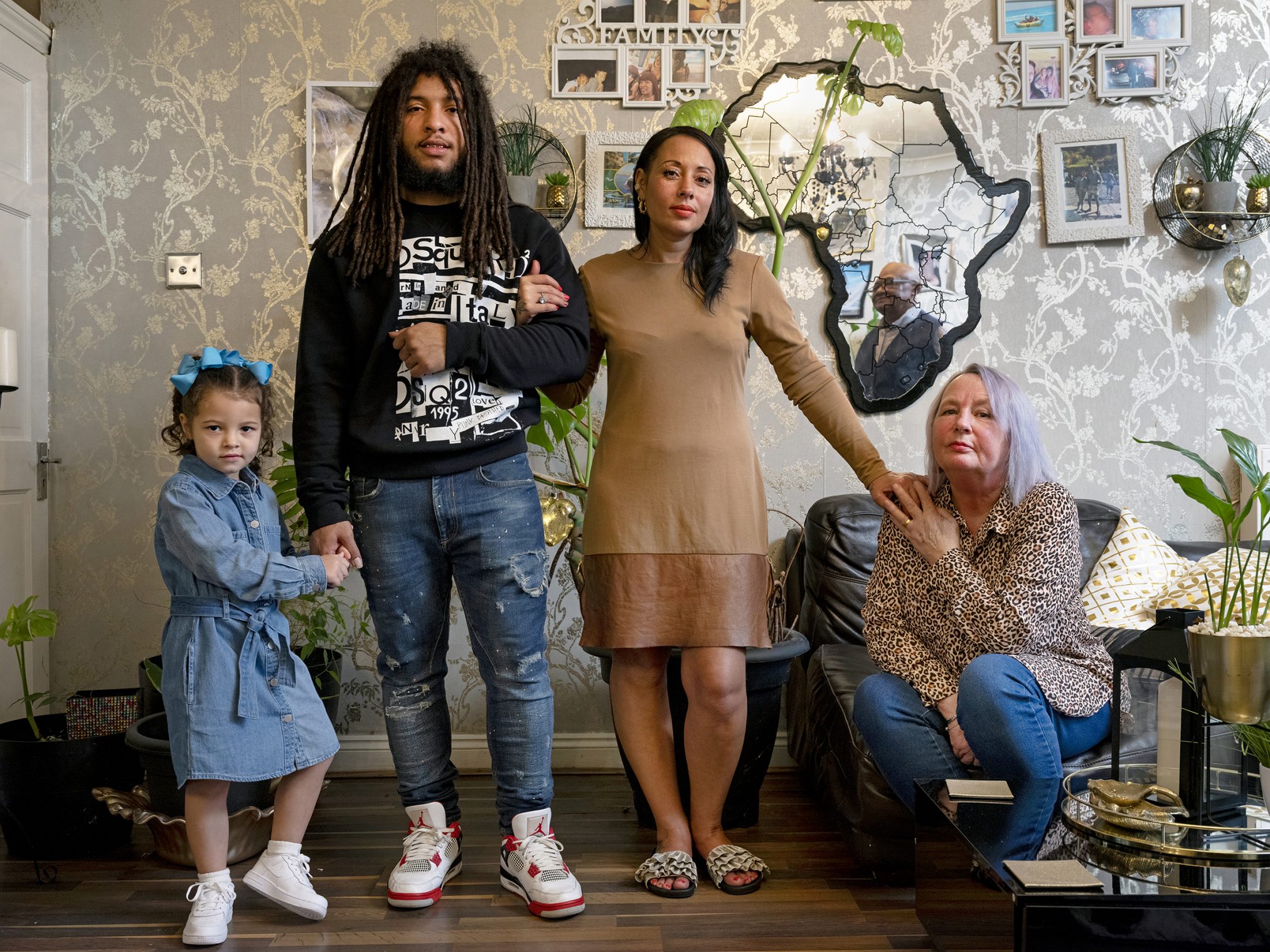
Linda Haughton’s portrait is notable for several reasons. In addition to the four generations standing and the framed family photographs proudly hung on the wall, we find a very large mirror cut in the shape of Africa. Formally, it is dominant and eye-catching, culturally perhaps it infers clues to the family’s heritage, significant in the context of the Commonwealth Games and in the migration stories of Birmingham and the Black Country area. The mirror additionally offers a slightly distorted reflection of another man who is not part of the main portrait group. This almost-hidden reflection puts me in mind of historical paintings made by artists who excelled in making oils that would showcase the wealth or status of their patron’s family, often with explicit or sometimes more subtle symbolism, sometimes incorporating optical illusion. Another remarkable portrait that calls back to art history is that of Enrichietta Caizo and her daughter, grandson and great-granddaughter. I cannot shake the fact that there are so many threads of connection to The Ambassadors, a painting made in 1533 by Hans Holbein the Younger of two French ambassadors, produced in London at a politically turbulent time with Henry VIII on the throne. Both Caizo’s photographic portrait and Holbein’s painted portrait contain globes indicative of the importance of travel (noteworthy, again, in light of the Commonwealth context) and other instruments for measuring intangible phenomena such as time or celestial bodies – an hourglass and a hanging ornament of moon phases, in Caizo’s case. Surrounding Caizo are multiple other objects that feel loaded with symbolism – a doll’s house, toy till, camel statue, cocktail shaker, sports team photograph and a miniature neo-classical male sculpture high up on a shelf – things that might (or might not) be connected to socio-economic and cultural achievement and/or aspiration. Caizo’s imposing, confident pose, tiger-print dress and knee-high leather boots give an impression of power and confidence. She is depicted here as the head of the family. A glimpse of the blue sky and bare tree branches through the roof window of her portrait is again reminiscent of the Western Renaissance trope in which a fragment of landscape behind a portrait sitter(s) would lead the eye elsewhere and contextualise the figure(s), perhaps in an imagined, idealised or specific location.
During each of the thirty family shoots, Germain took time to learn about each family and their stories. He is full of anecdotes that evidence the bonds he has been quickly and adeptly able to make with those he photographs. Part of these conversations took place in front of family photo albums, a way of telling the history of each family tree and its multiple, entangled branches, with Germain uncovering joyful experiences while reflecting on difficulties and challenges in dialogue with those he photographed. Germain describes family album photographs as a way to stretch time. Curator and producer Liz Weiwora’s introduction to the first issue of A Spotlight On, an annual publication from the Socially Engaged Photography Network (SEPN) is titled ‘When to look means to listen’. This sentiment is true in the making of the GENERATIONS photographs, in all their prior logistical organisation and in their reception – in our looking. We must be mindful to try to steer clear of assumptions and to use our eyes to listen as well as look.
GENERATIONS is a present-day archive of family, place and time: a fitting commission by and for the Commonwealth Games. The stories, personalities and memories held within each frame are partial. They can be glimpsed or guessed at via expression, body language, the visibility and frequency of family snaps and other objects positioned in each room. The portraits remain private even as they are extremely public, shown at locations such as advertising billboards and poster sites at train stations around Birmingham and neighbouring Sandwell. The characteristics of the living room, kitchen or conservatory, the collections of objects, choices of décor and display are unique, even as we are invited to and indeed do seek points of connection and familiarity to them. Germain’s photographs are set within the intimacy of the family home, where one, two or more of these generations reside and this special space is one that has assumed far greater significance for many of us since the turmoil of the Covid-19 pandemic and social restrictions. Germain tells me that these portrait shoots were in some cases, the first time these families had gathered since before the pandemic, with older family members visiting from care homes or assisted living spaces. This makes, then, the physical points of connection – a hand clasp, an arm around a waist or shoulder or pairs of knees pressed together all the more valuable and all the more worth capturing for posterity.
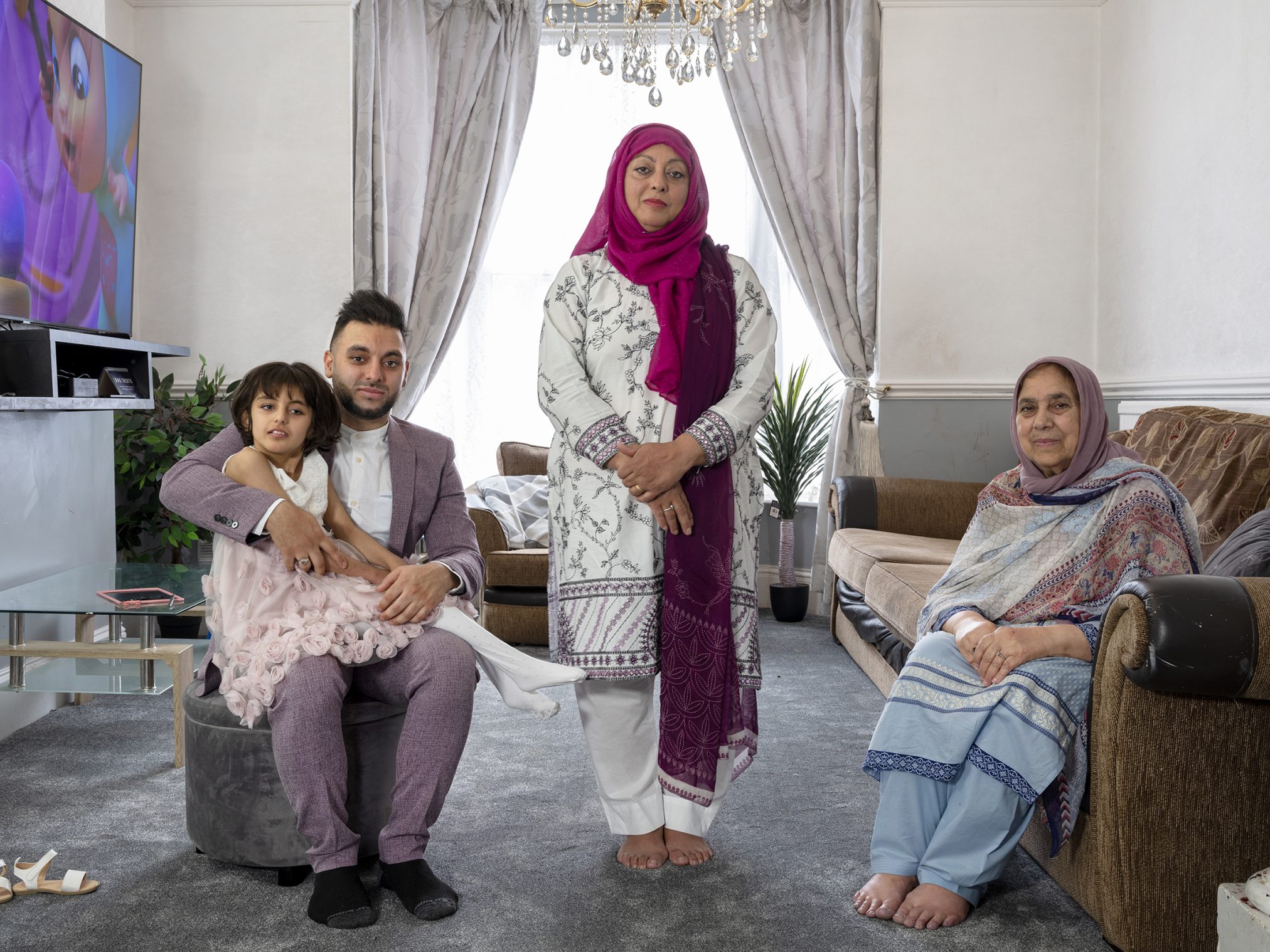
Writing by Anneka French
GENERATIONS is generously supported by Arts Council England and National Heritage Lottery Fund.

29 12 2023
GENERATIONS
Developed by GRAIN Projects in partnership with Multistory as part of Birmingham 2022 Festival, a large-scale cultural programme designed to coincide with the Birmingham 2022 Commonwealth Games, Julian Germain’s GENERATIONS (2022) project is focused upon families based in Birmingham and the Black Country that have four or five direct lineage generations. Anneka French speaks to one of the four generation families who took part: Marian Wallace, Melanie Flynn, Jason Wallace and Leo Walker-Wallace, all born and living in Birmingham.
Anneka: What prompted you to apply to take part in GENERATIONS?
Jason: It was Lucy, Leo’s Mom, who found out about it. She works for a company called Arts Connect and obviously knew that we have four generations; it’s something special in our family and in other people’s families. GENERATIONS sounded like a cool thing to be a part of.
Anneka: Absolutely. It’s special to your family but you’re also part of a wider network of other families in similar positions. And how about you, Marian? What did you think when Jason floated the idea?
Marian: I thought straightaway, yep. I like family history and social history so I was quite happy to go along with it.
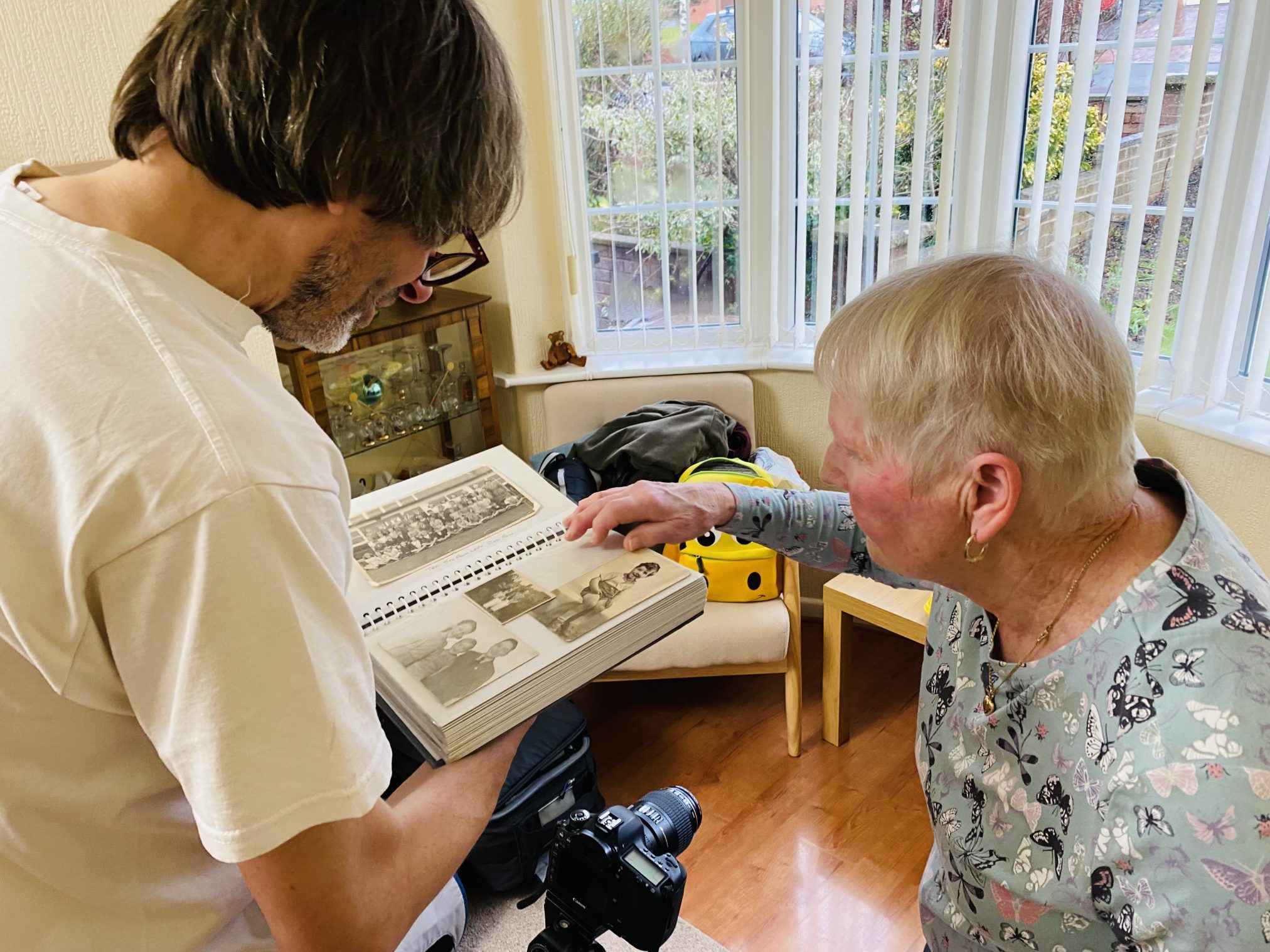
Anneka: How important is photography to you as a family?
Marian: Yes, we’ve got lots of pictures. And now that pictures are taken on phones, we’ve got even more. Jason sends us loads of pictures of Leo all the time. I’ve always liked looking at photographs and talking about the family history, trying to make sure that the children know about our history and how they came about.
Melanie: And the photos make lovely memories to look back on later through the albums.
Anneka: Did Julian look through some of your own photographs when he came for the shoot?
Marian: Yes. I was really, really impressed with Julian and Stephen (Burke, Project Producer at GRAIN Projects), they were excellent. They didn’t just look at the photos. They were actually interested in the photos and asking, who’s this and who’s that and how did you come up to Birmingham? I thought that was great.
Anneka: It’s quite an unusual thing to have to have a photographer come to your home, especially people that you don’t know very well. What was it like inviting strangers into your home for the shoot?
Marian: When they came, they put a big light up and moved furniture around. It really was an experience but a good one. Julian and Stephen looked at the albums, they took photos out and marked all the correct places and put them all back again. It was like having a real photoshoot! I’ve never known anything like it.
Melanie: It was really professional but it was very relaxed as well. We couldn’t have asked for anyone nicer.
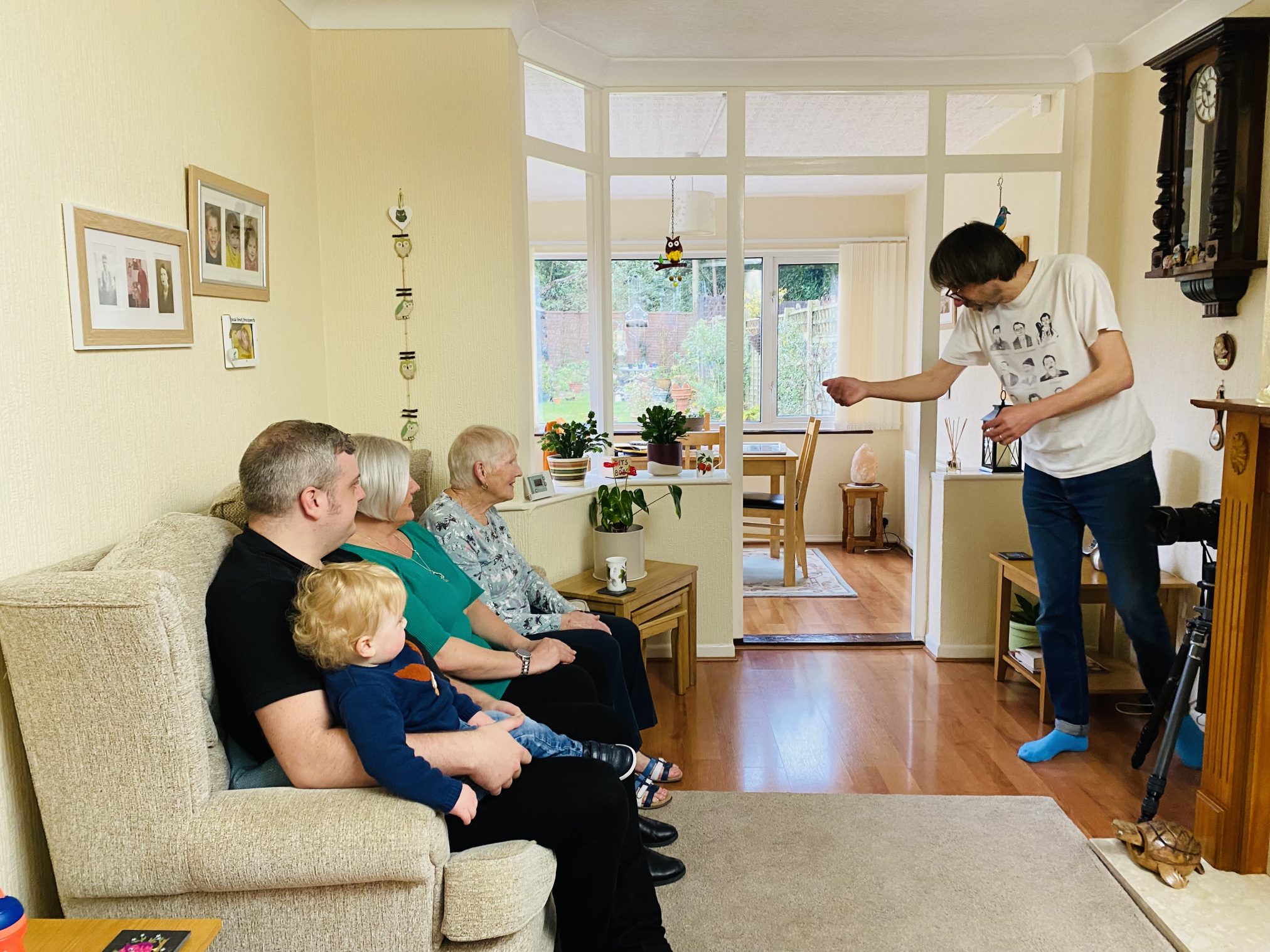
Marian: Mel said they’d be coming about 10.30am/11.00am and I thought they’d be here about an hour or so. But it was 1.40pm, I think, when they went. Our friend who comes to dinner every Sunday was waiting for his dinner and it wasn’t even in the oven!
Anneka: Your friend was a bit perturbed then I guess?!
Marian: No, no, he’s seen all the photos. He’s looked at the ones in New Street Station and he’s interested in it all anyway.
Anneka: How was Leo during the shoot? Keeping a little one occupied is not always the easiest thing.
Melanie: He was really good. He was fascinated by all!
Marian: Leo’s Mom was here and she was sort of looking after him and Ted, my husband, was here as well. Leo was really good, just looking at the camera. We got told off for smiling, Mel and myself, by Leo was quite serious and really, really well behaved.
Anneka: Have you been to see any of the photographs exhibited yet?
Melanie: Yes, we went to see the big billboards on the Coventry Road all together and then we’ve all been individually to New Street Station.
Marian: It was my birthday when we went to the Coventry Road and we went at eight o’clock in the morning, so that there wouldn’t be many people around to recognise us!
Anneka: Oh, why do you want people to recognise you?
Marian: Well, just feel a bit embarrassed, don’t you …
Anneka: All those all those autographs …
Melanie: Jason wasn’t embarrassed. He was telling everybody at New Steet Station, ‘that’s me on the photo!’
Anneka: What was it like when you saw the photograph on that huge billboard scale?
Melanie: It was amazing. You know, I didn’t really know what to expect and it was great to see the other photographs as well.
Marian: Yes, there were about five or six other families on the billboards. It was lovely to see them and read their ages and their relationships.
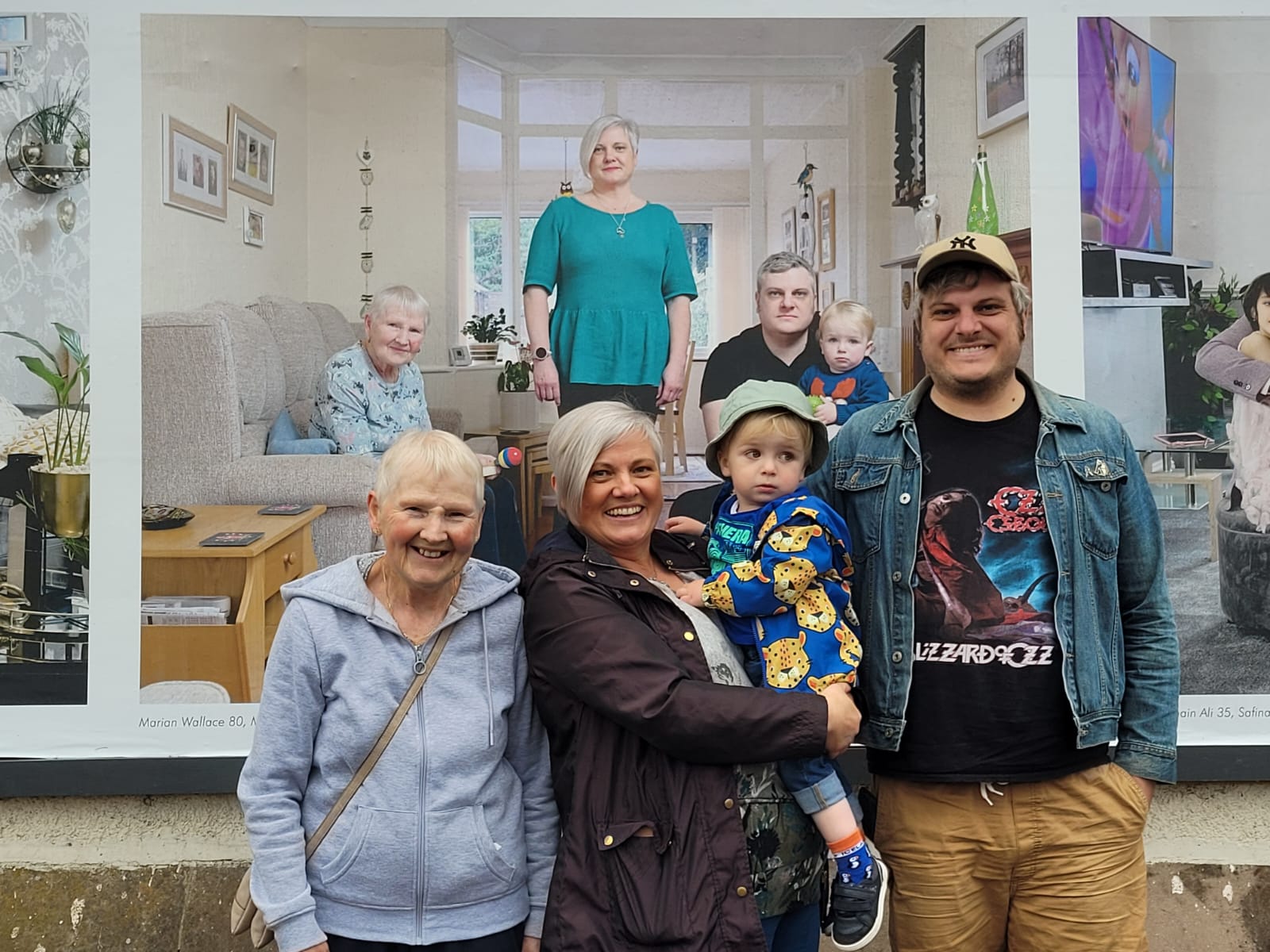
Anneka: Have you had a chance to meet with any of the other families so far?
Marian: No, not at the moment but there’s a get together in August, which Julian and Stephen said will be a chance for all the families to meet. So we hope to go to that.
Anneka: That will be really nice. Perhaps it might be an opportunity to talk about your experiences and families. Was GENERATIONS being part of the Commonwealth Games cultural programme and, as you say, the social history of the city and of the West Midlands, additional motivations for you?
Marian: Yes. It’s good to be part of that wider story. You feel proud to be part of the history of Birmingham really.
Jason: I think that’s sort of what Birmingham is. It’s one big community. Whether we’ve met other families or not, you feel a connection already.
Anneka: The programme is a big celebration of the city. Big sporting events don’t come around too often and that sense of pride and celebration of the city, again, is not something that happens enough. Birmingham is generally derided by people that are not from here or don’t live here.
Marian: Exactly. Yeah, people always seem to be glad to grumble about Birmingham but it’s a good place to live.
Anneka: I think one of the lovely things about looking at all of the portraits is thinking that without you and your husband, you wouldn’t subsequently have all the rest of your family here. There must be a huge sense of pride for what you’ve achieved?
Marian: I’m proud of them all.
Anneka: Did you find anything about the project challenging or surprising?
Melanie: None of us had any issues. The whole thing was all good from start to finish. The only unexpected thing was a good one as Julian and Stephen invited my Dad and Lucy, Leo’s Mom, to be in a lovely family photo after they had completed their pictures for the shoot. That was a really nice, unexpected gesture. They then sent us a copy of the photo and it’s become a firm family favourite since. We are glad the project has taken off so well and is getting so much interest
Anneka: What do you feel that you’ve all gained from the experience?
Jason: There’s definitely a sense of pride in there. I think you can see that from a lot of the other photos. Obviously, I’ve never met any of them but within the way people are standing and the way Julian’s captured them, there’s pride. I think a lot of people probably would say the same and you get that impression seeing the work. I had to ask a lady to move out of the way when I went to see the photographs in New Street so I could get a photo and I said, ‘yeah, that’s me up there’. She wasn’t bothered! But you do feel proud and happy.
Marian: I’m pleased to be able to tell my friends all about it and I think you do gain a lot from the experience.
Melanie: It’ll be something good to look back on when Leo’s older and hopefully, he can show his kids and say, ‘well, this was me when I was little and famous!’
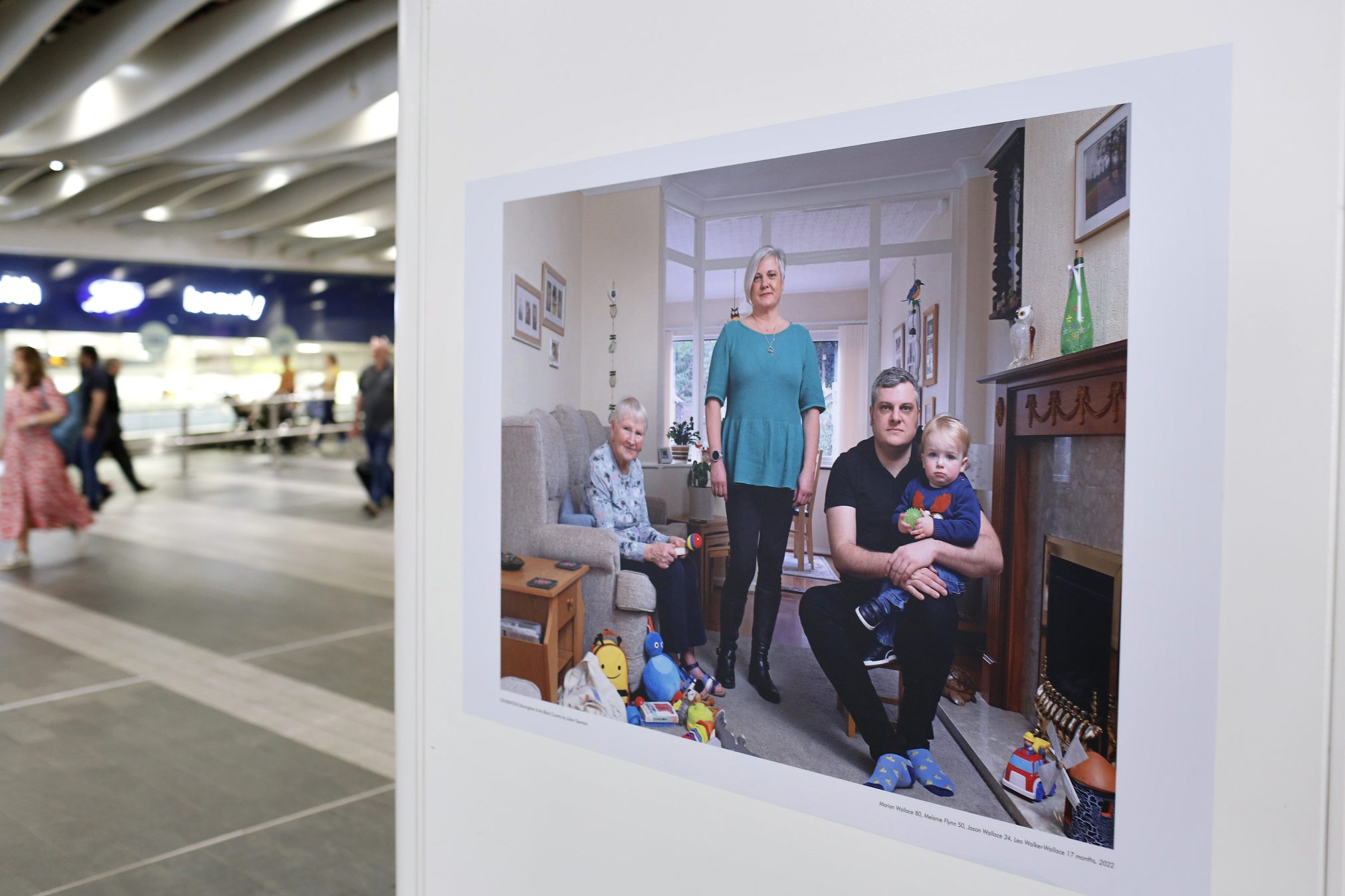
28 12 2023
Faces Of 2022
FACES OF 2022 was a celebratory project that highlighted pride, place, identity, and heritage in Perry Barr, the district in Birmingham that hosted the Birmingham 2022 Commonwealth Games.
The exhibition that included 31 portraits, created by acclaimed Birmingham-based artist and photographer, Maryam Wahid, was installed on a large scale outdoor photography system at the new Perry Barr Train Station and featured on banners throughout the district. The artist worked closely with the people of Perry Barr and North Birmingham to capture their portraits as part of this project, photographing those who made extraordinary contributions to culture, community, and education.
The exhibition offered a unique opportunity to view these new portraits in the public realm, situated in the heart of the community where they were created. Perry Barr holds a special place in the city, and the portraits captured the energy, identity, and spirit of the local people while acknowledging their achievements.
As well as the remarkable portraits by Maryam Wahid, GRAIN also commissioned a series of workshops with different communities in the area. These were led by Jaskirt Boora, Ayesha Jones, Nilupa Yasmin, and Stephen Burke.
FACES OF 2022 was a partnership between GRAIN Projects and the Black Arts Forum for Birmingham 2022 and received generous support from Arts Council England and the National Lottery Heritage Fund. A Creative City Project supported by Birmingham City Council. The exhibition at Perry Barr was supported by the West Midlands Combined Authority.
Image Credit: Vidya Patel, by Maryam Wahid

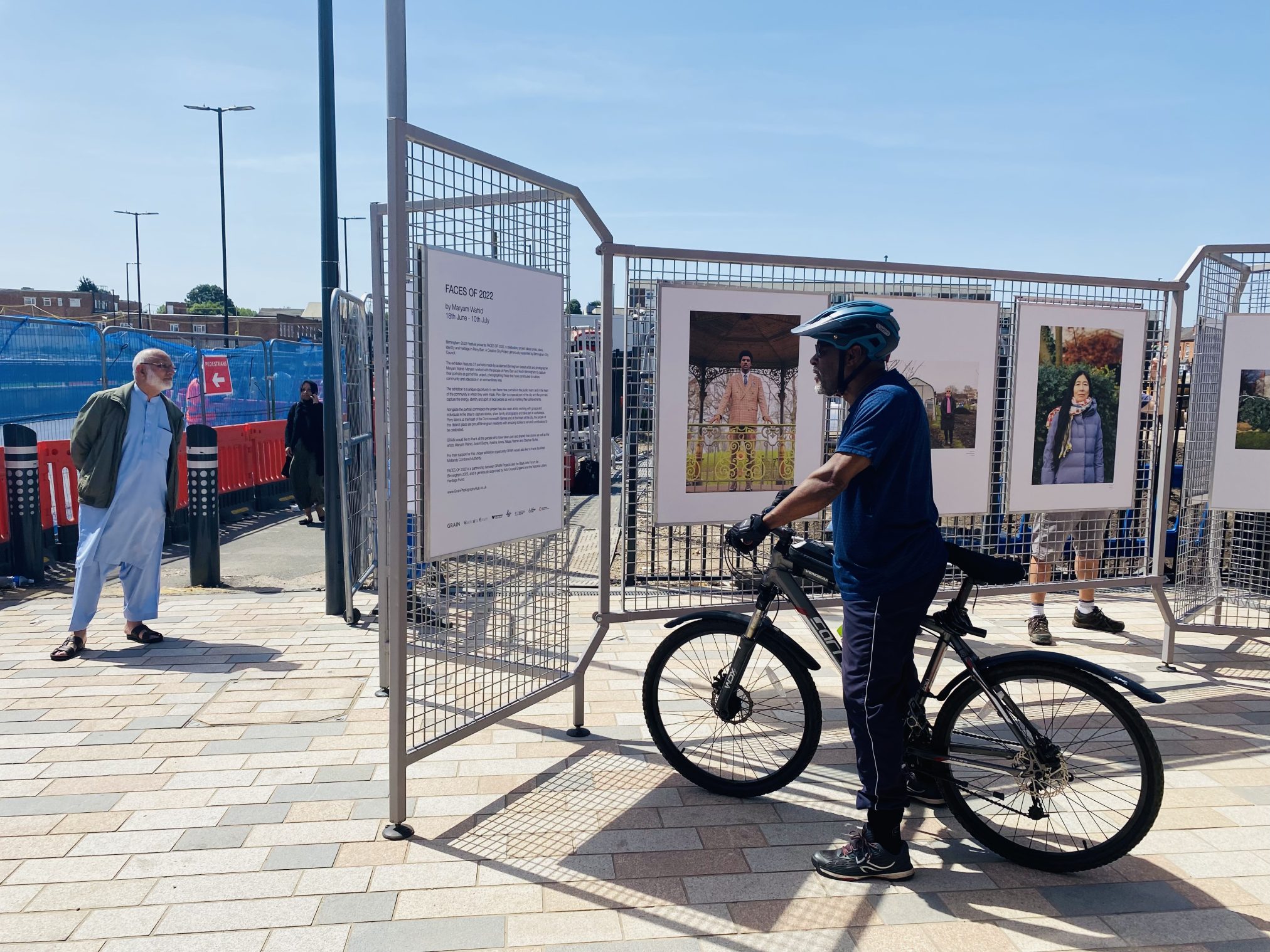

27 12 2023
Photo Café
PhotoCafé, Birmingham was an initiative that took place over four years to provide a monthly meet-up and live space for conversations about photography. Established by Andrew Jackson and Attilio Fiumarella, in collaboration with GRAIN, meetings took place at 1000 Trades in the Jewellery Quarter and were programmed monthly before moving online. Speakers were booked to lead presentations and many conversations were had about exhibitions, publishing and photography careers. PhotoCafe was timely and has inspired other meet-ups across the city that are photographer and artist-led.
Photo Café speakers include; Holly Revell, Laura Chen, Natalie Willatt, Tim Mills, Clare Hewitt, Laura Dicken, Elisa Moris Vai, Lesia Maruschak, Vera Hadzhiyska, Richard Mark Rawlins, Chris Hoare, Kirsty Mackay, Ania Ready, Gianluca Urdioz, Holly Houlton, Paul Romans, Tommy Sussex, Exposure Photography Festival, Emma Palm, Louie Villanueva, Angela Boehm, Dona Schwartz, The Other, Kelly O’Brien, Joanne Coates, Maryam Wahid, Camilla Brown, East Meets West, Multistory, Emma Chetcuti, Jaskirt Boora, Jagdish Patel, Liz Wewiora, Anthony Luvera, Rachel Barker, Sam Ivin, Mark Murphy, Andy Pilsbury, Nilupa Yasmin, Emma Case, Rob Hewitt, Living Memory Project, Geoff Broadway, Adam Neal, Emily Jones, Andrew Jackson, Atillio Fiumarella, Max Kandhola, Faye Claridge, Tom Hicks, Charisse Kenion, Gunhild Thomson, Marcus Thurman, James Abelson, Leanne O’Connor, Lucy Turner, Leah Hickey, Amanda Holdom, Tia Lloyd, Anand Chhabra, Beth Kane, Chris Neophytou, Jonny Bark, Fraser McGee, Peta Murphy, Red Eye, Duck Rabbit, Lilly Wales, Matthew Finn, Walter Rothwell, Richard Lambert, Anneka French, Caroline Molloy, Tarla Patel and Mark Wright.
26 12 2023
GRAIN BURSARY AWARD
In 2021 artist Exodus Crooks was awarded the GRAIN Bursary to explore, research and make new work about the public parts in Birmingham. Exodus looked at the municipal parks from their own experience, making work in north Birmingham in parks that spoke of civic pride, Victorian grandeur, gang culture and recent poverty and neglect. Their work captured the many layered histories and experiences of these public spaces that are used by the city population.
The artist made a small publication that was made available to those she had spoken to about their park experiences and others locally.
GRAIN offers a number of bursary opportunities to support emerging practitioners. Details can be found on social media and on the website.
About Exodus Crooks:
Built on a foundation of traditional painting and drawing, much of Exodus’ practice considers the collaborative and collective experiences of others, making these recent times in isolation significantly more remarkable. Now engaging with various disciplines, Exodus’ practice involves themes of intimacy, identity, and culture, much of which is heavily discovered through play. Exodus uses Blackness as a lens in which to investigate all things through, an approach also seen in their recent academic research entitled ‘I hope you write back xxx’. Alongside Exodus’s current role as a Black Hole Club artist, Exodus has used their recent commissions for the Film and Video Umbrella, Vivid Projects, and The Barber Institute of Fine Arts as opportunities to refine and exhibit their film making, performance and digital skills.
Having lectured at various spaces across the UK, and recently concluding a collaboration with Iniva on the Contemporary Art Space Project, Exodus is insistent on confronting western ways of teaching and learning. Sitting at the intersection of both student and teacher, Exodus is enthused to offer alternative spaces and methods that challenge current schooling and ways of seeing. Facilitating discussions around politicized identities within schools, colleges, and universities, Exodus uses art to engage their community in conversations of critical race theory and amplify marginalised voices.
25 12 2023
Veterans Workshops
GRAIN, in partnership with Appetite, Creative People and Places in North Staffordshire, conducted online photography workshops for Veteran service men and women, as part of the Appetite at Home programme. The workshops took place during lockdown and were an important way of continuing to engage with communities at risk of isolation during challenging times.
During the workshops, the participants shared photographs, stories, and experiences from their time in the armed services. They also engaged in creating new photographic work that explored themes around journeys, life development, and their joy of the outdoors. Developing new skills and friendships some of the veterans went on to participate in other photography projects developed in the area that saw them have images exhibited and published.
Photograph by Teri Elder
24 12 2023
YOUNG PEOPLE
GRAIN worked with young people from across Shropshire, including Telford Young Carers, Shropshire Young Carers, Whitchurch Youth Club, XYZ, and Steps Forward youth groups, to create a series of photographs documenting young people’s lives. The project has been a long term collaboration with The Hive youth arts organisation in Shrewsbury..
The young participants engaged in both online and in-person workshops, developing their own photography projects to illustrate their daily lives, the experiences of growing up in a rural area, and their encounters with Covid-19 and life during lockdown.
The resulting photographs provide a record of young people growing up in the county before, during and after the Covid pandemic, and the type of issues and experiences that affect young people’s lives. .
Stephen Burke led the project in partnership with The Hive, Shrewsbury, with support from Frosts Photo Centre and Arts Council England.
23 12 2023
Celebrating Age
GRAIN originated Celebrating Age as a project to work with older residents of Birmingham, to think about ageing and its representation. Working alongside residents of three Lench’s Trust housing schemes in Birmingham, engaging with older individuals and utilising photography to commemorate and narrate stories of families, childhood, professions, war years, special occasions, and memorable events, the project took place over 18 months. In meetings and workshops, residents shared photographs from their personal collections and family albums, recollecting the time and place depicted in the images. The project effectively, through participation, explored and told the history of the city.
Following the workshops, which were led by Stephen Burke, a pop-up studio was created in each of the housing schemes. Here, Kate Peters made new portraits of the residents, using their stories and old photographs as inspiration.
The project succeeded in evoking memories, fostering conversations, and strengthening connections, demonstrating that the older generation holds significant tales about enduring and enjoying life despite adversity and challenging times of crisis.
A selection of the residents’ photographs, snapshots of their memories, and the portraits made by Kate Peters have been curated and published in a small photobook. ‘We Went Mackerel Fishing One Day.’, was designed by Mark Murphy as a keepsake and documentation of the project. The images within the book are personal, compelling, and enigmatic, offering insights into communities, individuals, and their lives.
GRAIN gifted portraits to each of the participants and a collection of the portraits to the three housing schemes.
‘Celebrating Age’ is a partnership with the Lench’s Trust, generously supported by The National
Lottery Heritage Fund.
Image Credit: Olive Hall, (c) Kate Peters

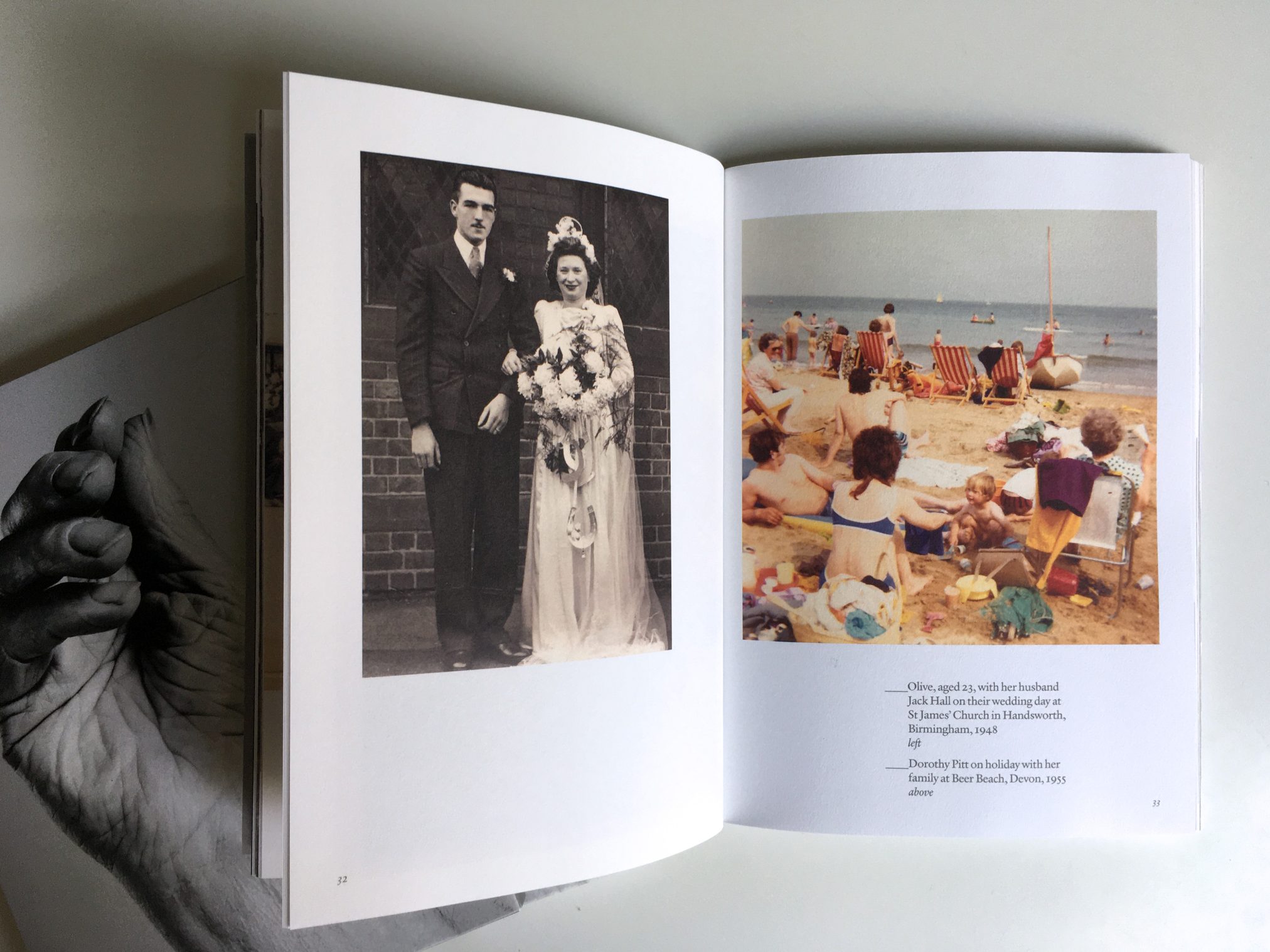
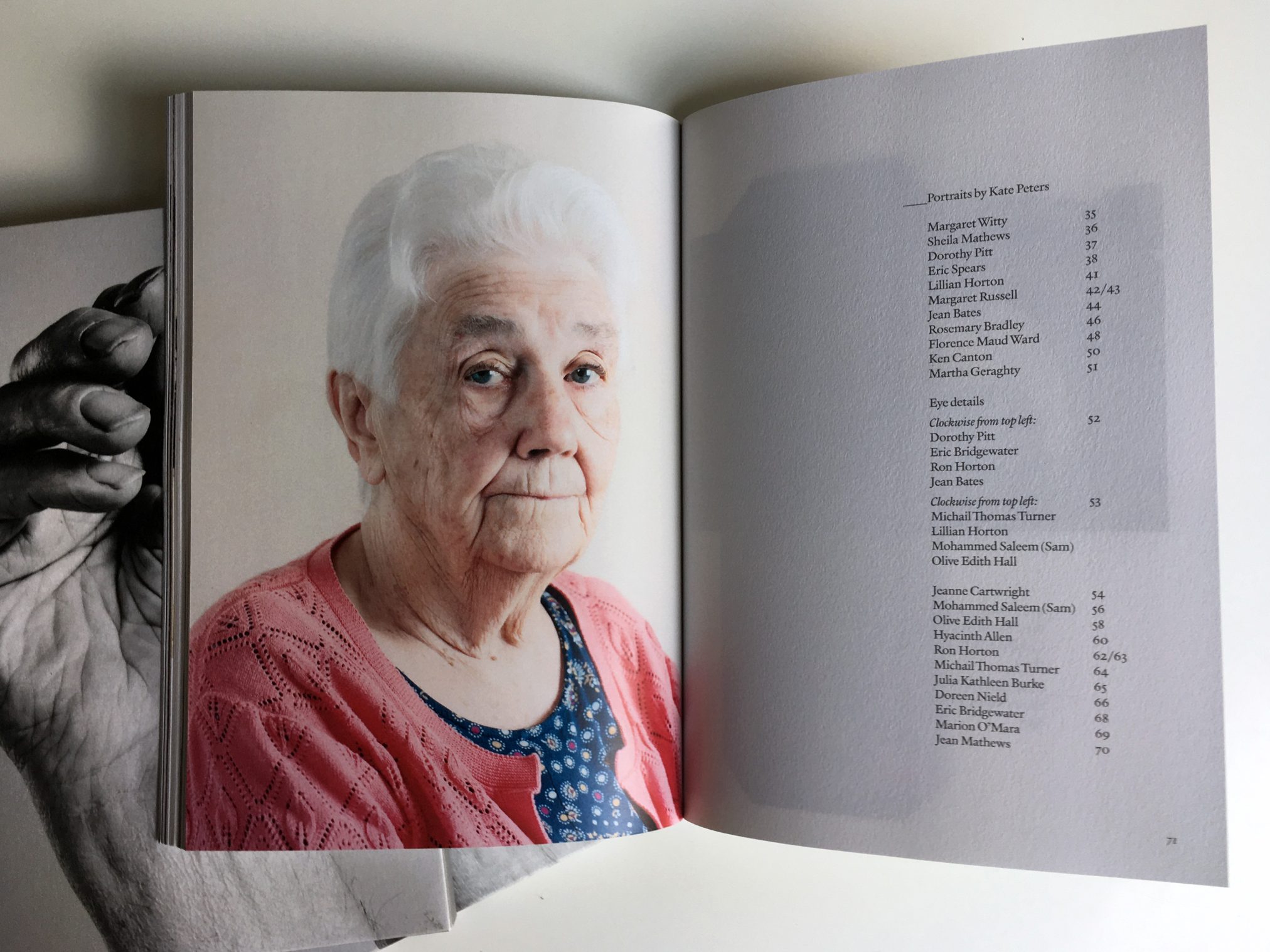
22 12 2023
Decolonising The Gaze
This online event was a continuation of GRAIN and The New Art Gallery Walsall’s co-curated exhibition, ‘Too Rich A Soil,’ which was exhibited at the NAGW gallery during November 2019.
The exhibition showcased new works dealing with themes of identity and representation from three British artists of South Asian descent: Arpita Shah, Maryam Wahid, and Nilupa Yasmin. Originally planned as an in-person symposium, this session was rescheduled as an online event due to the Covid pandemic. Each artist presented their work and participated in significant discussions concerning the politics of representation. The symposium was moderated and chaired by artist, writer and academic Dr. Caroline Molloy.
20 12 2023
EVERYTHING IN THE FOREST IS THE FOREST
Clare Hewitt was awarded a GRAIN Bursary in 2019 to support the development of Everything In The Forest Is The Forest, with particular focus upon the making of work in the woodland and developing the work as a collaborative project. Clare began to look at the affects of isolation through working with a community of individuals and a woodland of oak trees.
As well as developing 24 pinhole cameras, supported by STEAMHouse, which were located high in the oak trees in the form of bird boxes, Clare also developed methodologies to make work utilising the forest floor and the roots of trees.
The pinhole cameras and the other various approaches were ongoing for more than 12 months.
Although trees appear to be individual organisms above ground, scientific research shows that their complex communication methods facilitate survival, nurture and pass on wisdom, and send warnings when they are under attack. In a time when loneliness is increasing, segregation is being encouraged politically, and isolation driven through technology, there is much that can be learnt from the unity of the forest.
Clare is now working towards a major show of the work that will tour nationally.
Clare Hewitt is a photographer based in Birmingham. In 2011 she was selected for Fresh Faced and Wild Eyed at The Photographers’ Gallery, and has since been exhibited at the National Portrait Gallery as part of the Taylor Wessing Portrait Prize, 2013. In 2016 and 2017 she was included in the Magenta Foundation’s Flash Forward emerging photographer selection for Eugenie and Kamera, and the British Journal of Photography’s nationwide Portrait of Britain exhibition. Clare has been shortlisted for the Royal Photographic Society’s IPE #161, and selected for 209 Women, a photographic portrait project that marks the centenary of women achieving the vote in the UK in 1918.
www.clarehewitt.co.uk
26 10 2023
Aaron Schuman
GRAIN Projects is delighted to be part of We Feed The UK. Coming in 2024, the project will weave together the arts and environment to celebrate regenerative farmers as custodians of Britain’s biocultural diversity.
As one of the national arts partners to be collaborating with The Gaia Foundation, we have commissioned Aaron Schuman for our project as part of We Feed The UK who is working at community owned Fordhall Farm, Shropshire. Fordhall is a regenerative organic farm that is pioneering in its work as a care farm and youth project.
In October 2023, during the harvest season, you can see a selection of images from We Feed The UK on billboards going live in the north, south, east and west.
In February 2024, We Feed The UK launches at Open Eye Gallery, Liverpool.
We Feed The UK Arts Partners:
GRAIN Projects, Martin Parr Foundation, Multistory, North East Photography Network, Open Eye Gallery, Penpont, Brighton Photo Fringe, Belfast Exposed and Street Level Photoworks.
06 09 2023
REFLECTOR
REFLECTOR, a new and unique professional development programme, for emerging Photographers, Artists and Curators of Colour working with photography, who are based in England.
Produced by GRAIN Projects in partnership with The New Art Gallery Walsall, supported by Art Fund’s Reimagine programme.
REFLECTOR will empower participants and create new opportunities for collaboration and career development. The programme will take place over 10 months, starting in October 2023.
The programme includes mentoring, masterclasses, portfolio reviews, and networking opportunities. These activities are thoughtfully designed to boost professional development and empower artists to advance their creative pursuits to the next level. Additionally, bursaries have been provided to support artists in creating new work and further enhancing their skills. Participants will learn directly from inspiring artists, mentors, projects and events. REFLECTOR will amplify and platform work as well as being a unique opportunity to learn and develop new skills. Participants will also receive support in developing CVs, statements, portfolios and creating new work for exhibition.
The programme will culminate in an exhibition at The New Art Gallery Walsall, from the 26th October 2024 — 9th March 2025.
The 20 participants in the programme are:
Anselm Ebulue
Georgia Williams
Jodi Kwok
Luke Jones
Natalia Gonzalez Acosta
Terna Jogo
Timon Benson
Yamuna Shukla
Jamal Lloyd Davis
Lakshita Munjal
Marley Starskey-Butler
Nicholas Olawunmi
Yuxi Hou
Jade Carr-Daley
Jose Luis Fajardo Escoffié
Khatun
Myah Jeffers
Shashank Verma
Tasha Hylton
Vic Moyo
Masterclass session leaders & Mentors include:
Amak Mahmoodian, Andrew Jackson, Arpita Shah, Ayesha Jones, Aziz Sohail, Bindi Vora, Jaskirt Dhaliwal Boora, Jermaine Francis, Kalpesh Lathigra, Kavi Pujara, Marcia Michael, Mohamed Somji, Nilupa Yasmin, Pelumi Odubanjo, Roo Dhissou, Sebah Chaudhry Sunil Gupta & Charan Singh, Taous Dahmani, Vanley Burke, Yan Wang Preston.
About Art Fund
Art Fund is the national fundraising charity for art. It provides millions of pounds every year to help museums to acquire and share works of art across the UK, further the professional development of their curators, and inspire more people to visit and enjoy their public programmes. Art Fund is independently funded, supported by Art Partners, donors, trusts and foundations and the 135,000 members who buy the National Art Pass, who enjoy free or discounted entry to over 850 museums, galleries and historic places, 50% off major exhibitions, and receive Art Quarterly magazine. Art Fund also supports museums through its annual prize, Art Fund Museum of the Year. The winner of Art Fund Museum of the Year 2023 is The Burrell Collection. www.artfund.org
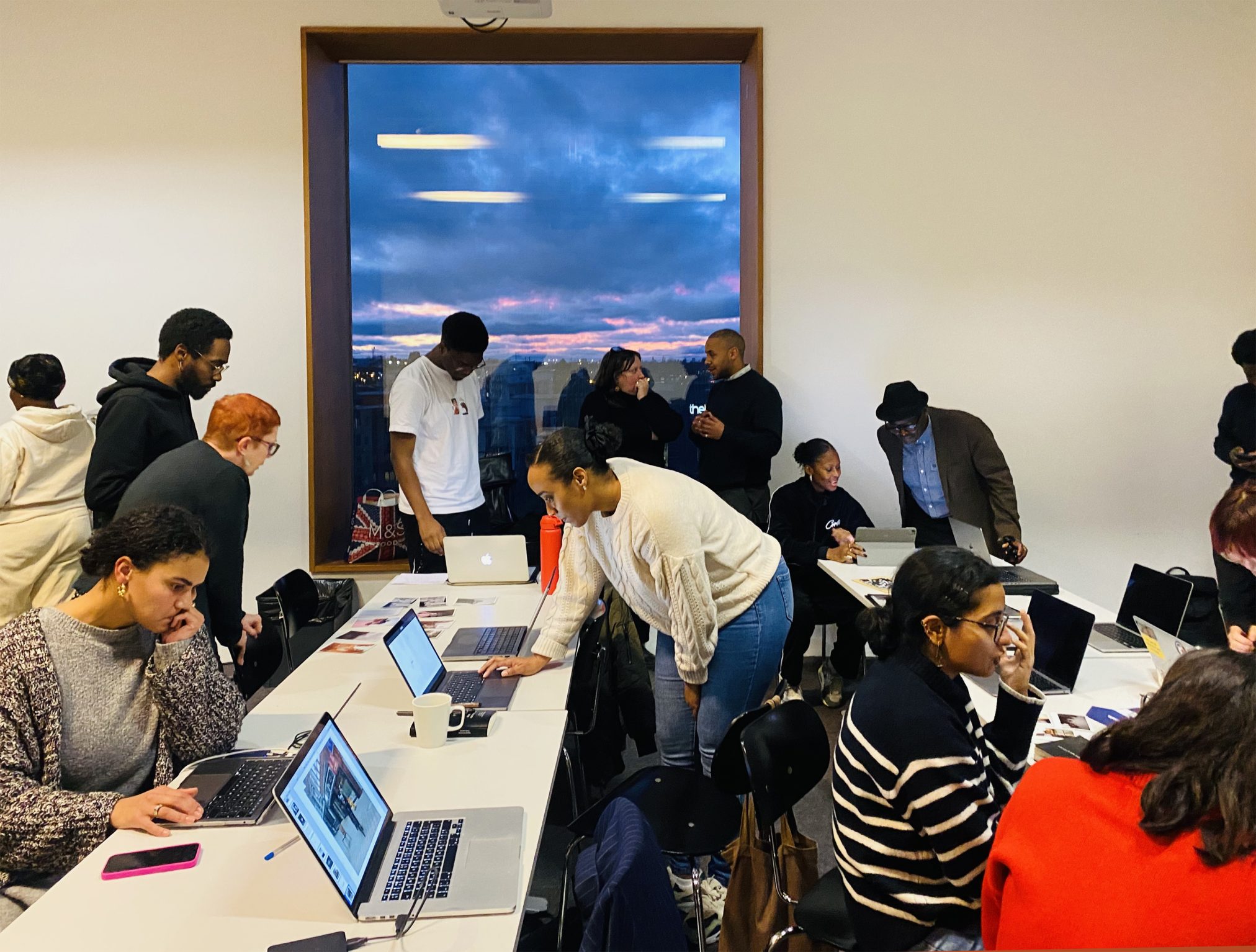
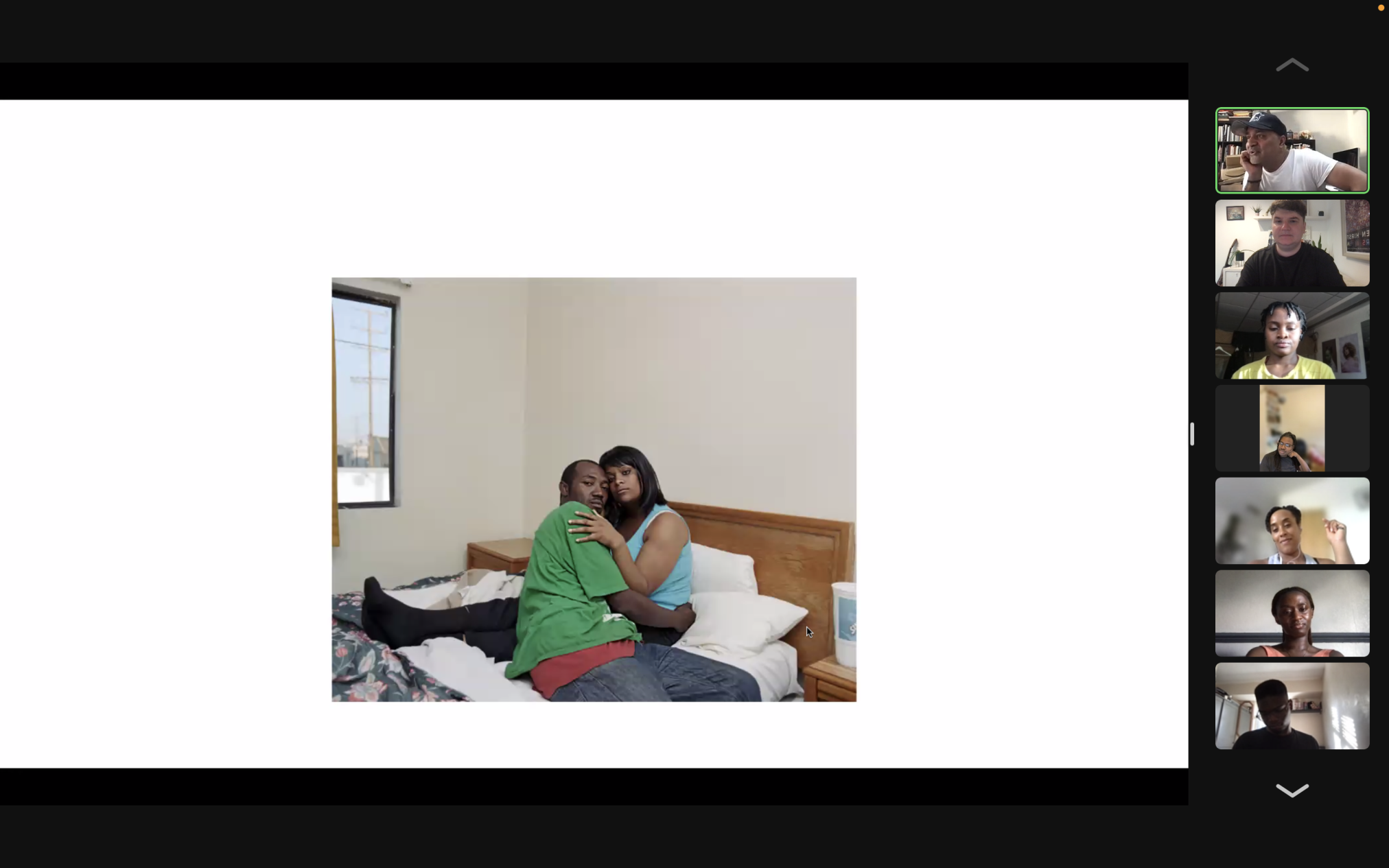
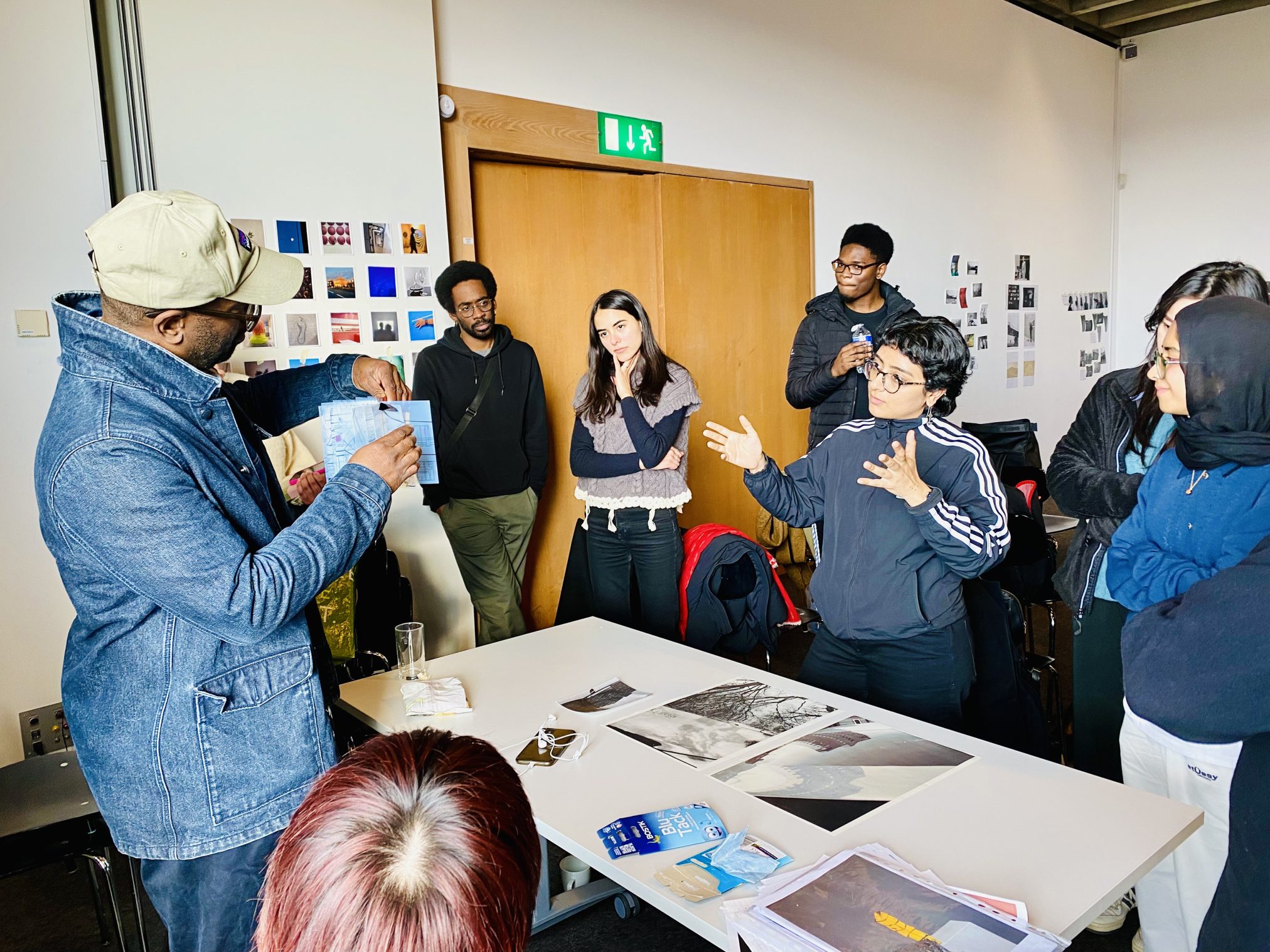
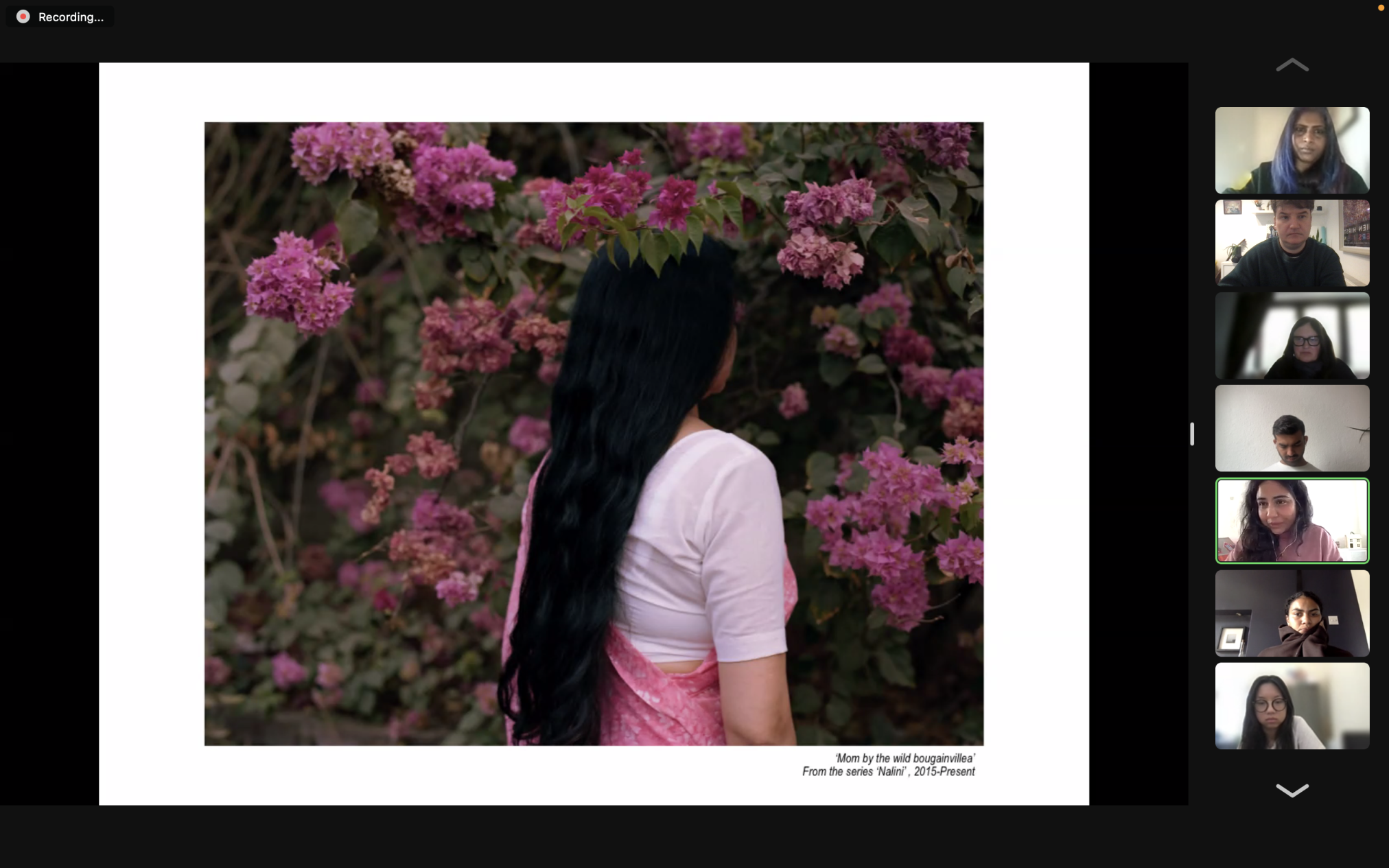
01 09 2023
PICTURING WALSALL
Picturing High Streets was a national programme, led by Historic England. Projects unravel the narratives of the nation’s high streets and engage with local communities. GRAIN led a distinct programme in Walsall, West Midlands to accompany the national touring exhibition. The activities took place with the town’s storefronts as the backdrop, celebrating the unsung champions of the high street, encapsulating the familiar scenery, and inviting viewers to consider the worth and significance of their local high street.
In Walsall the outdoor exhibition ran until October 2023 and showcased 65 photographs celebrating high street life. These photographs were contributed by members of the public through a national call-out and via photowalks in the town centre led by GRAIN with Anand Chhabra, Black Country Type and Stephen Burke.
Three winning photographs of contemporary Walsall high street life were selected from over 400 entries in Historic England’s recent Picturing Walsall competition and were displayed in the exhibition. The winning entries and seven runner-up photographs all became part of the Historic England Archive.
The winning photographs were chosen by a panel of judges including Annabel Clarke,
Senior Communications & Marketing Executive at The New Art Gallery Walsall, Stephen Burke, Project Producer at GRAIN Projects, and Tamsin Silvey, Cultural Programme Curator at Historic England.
Winners:
Alishah Iqbal
Anu Gamangari
Jay Mason Burns
Runners up:
Sherrie Edgar
Joanne Kendrick
Julia Holding
Jack Babington
Sylwia Ciszewska-Peciak
Marlene Little
Harriet McDevitt-Smith
Picturing Walsall is part of the national Picturing High Streets project commissioned by Historic England and delivered by Photoworks, as as part of the High Streets Heritage Action Zones Cultural Programme produced in partnership with Heritage Fund UK and Arts Council England.
08 08 2023
CONSTRUCT by Anthony Luvera
CONSTRUCT is a new publication by Anthony Luvera, created between 2018 and 2022 in collaboration with people who have experienced homelessness.
Help support the printing of the publication by pre-ordering the book as well as backing the campaign through a number of exciting rewards such as postcards and prints. Once the target is reached all proceeds of the publication and money raised will go to SIFA Fireside, a leading charity that supports people experiencing homelessness in Birmingham.
This important book commemorates 20 years of Anthony Luvera working with people experiencing homelessness nationally and provides an opportunity to contribute to SIFA Fireside’s fundraising for their important work in the homelessness sector.
The CONSTRUCT publication is about collaboration and representation as Luvera attempts to shift the narratives surrounding homelessness, and bring to light how these problems are amplified through the way that society is structured. The process of making the work is as much a part of the practice as the outcomes, with traditional uses of photography being disrupted to create a more nuanced representation of the participants and the experience of homelessness. This book contains Assisted Self-Portraits, photographs created by participants, documentation of Luvera and participants working together and newly commissioned writing which expounds his pioneering approach to socially engaged practice and reflects on the right to housing in the UK today.
Designed by Chris Neophytou of Out of Place Books, the publication comes in a translucent dust jacket, is 124 pages, 280 x 210mm in portrait format and will be printed by Taylor Brothers in Bristol.
02 08 2023
Our Heritage and Identity
GRAIN are delighted to be working with older residents of Shropshire, Telford and Wrekin and SAND, on a heritage and photography project that explores and celebrates older LGBT+ identity.
Participants will share photographs, from their own albums and collections, and tell stories that illustrate lived experiences and which speak of identity and representation. Workshops are taking place in Shropshire led by artist Ming de Nasty and GRAIN Projects.
The project will add a new and important dimension to Shropshire’s archive and enable people to talk about their lives in a meaningful and open way.
The outcomes of the project will include new digital archive materials, an exhibition and a publication. SAND is based in Shrewsbury and take a targeted approach to increasing LGBT+ inclusion, challenging discrimination, promoting accessibility and equality of opportunity for LGBT+ people ageing in Shropshire, Telford and Wrekin. They work with the LGBT+ community and service providers to develop inclusive practice in general, while focussing on the particular experiences and needs of LGBT+ people. SAND is a community organisation whose goal is to improve the experiences and increase the expectations of LGBT+ people as they age. They believe that if they can identify and address the barriers that impact on LGBT+ wellbeing in later life, bring about change in organisations’ working practice, tap into influential policy making channels – then they can fundamentally influence the way in which LGBT+ people and those who care for them experience – and expect to experience – ageing.
This project is a partnership with LGBTSAND and is generously supported by the National Lottery Heritage Fund and National Lottery players.

09 06 2023
New Narratives in Photography
GRAIN Projects (UK) and Tasweerghar (Pakistan) announce the four artists who will be taking part in the New Narratives in Photography project as part of the British Council Pakistan Arts Residency Grants Programme 2023-2024.
Artists Asad Ali, Hira Noor, Ume Laila and Waleed Zafar, all of whom use photography in new and innovative ways to comment on our lives today, have been awarded the four residency places.
GRAIN and Tasweerghar are arts organisations that create new opportunities for diverse and emerging artists and photographers, supporting the development of skills and opportunities. In collaboration they will deliver a residency project that supports diverse and marginalised Pakistani artists curated in the context of prevalent themes including social justice, identity, gender, diaspora and home.
The four successful artists will have the opportunity to collaborate and network in Pakistan and the UK, take part in a bespoke mentoring programme, make and exhibit new work in Pakistan and the UK and have their artwork and practice amplified within the visual arts sector and more broadly. The opportunity will include a research and networking visit to the UK. At the end of the project the artists will exhibit their work at the Tasweerghar gallery space and in Birmingham, UK.
The artists that are taking part all have a unique and personal approach to photography, are ambitious in their work and have something to say about the world we live in. They come from a place of care, compassion and collaboration; their work is based on research and conversation and their artwork is of great relevance and interest, both as emerging practitioners in Pakistan, and to the photography scene internationally.
Image credit: Waleed Zafar
08 06 2023
WAR was never my CHOICE
GRAIN Projects have worked in collaboration with Centrala and with young people from Ukraine, who had settled in Birmingham, shortly after the outbreak of the war. Over a span of six months the young people worked with internationally acclaimed and Ukraine based artist Mark Neville, and alongside Stephen Burke, attending workshops, making images and reflecting on their experiences of leaving their homes in search of safety.
The resulting photographs, projections, and text were curated into an installation that was open to audiences in July 2023 at Centrala’s gallery in Birmingham. The young participants were present to discuss their artwork.
The young people taking part developed their photography and creative skills and were able to participate together in a safe space to discuss and make work on sensitive and personal topics. The themes explored encompassed home, place, identity, hope, pride, and separation.
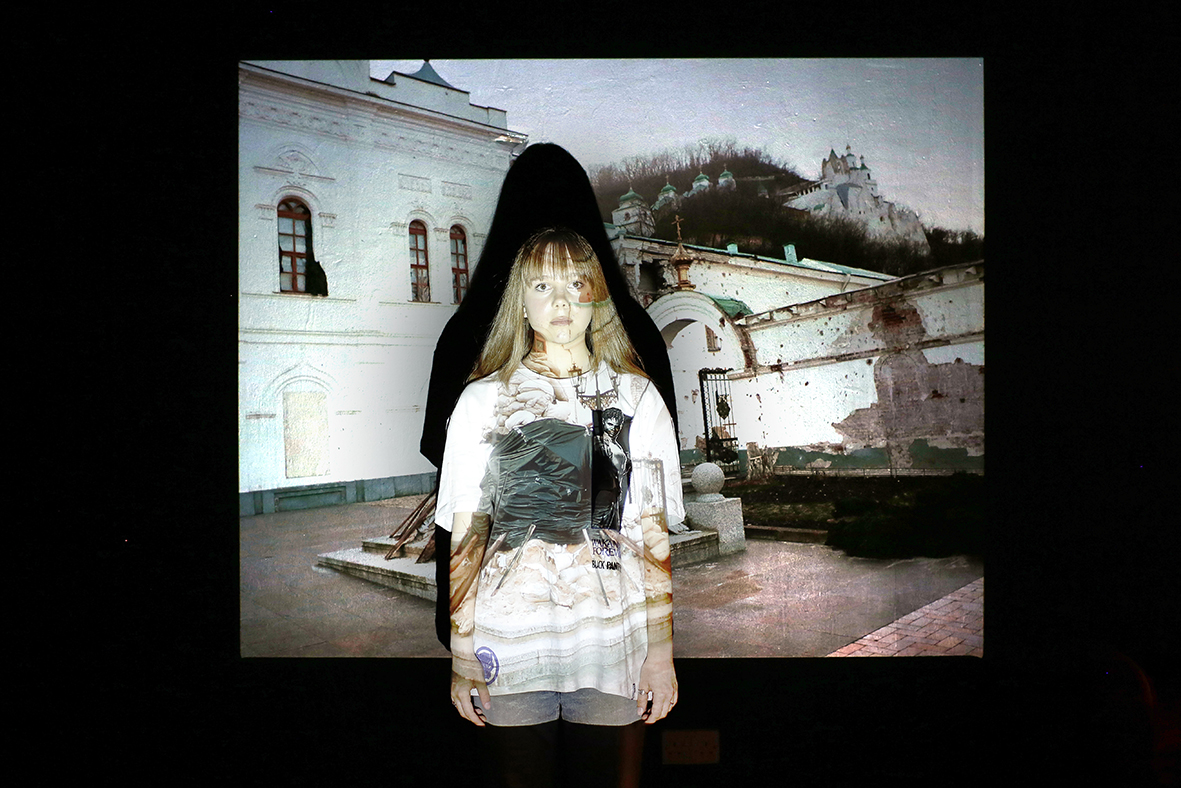
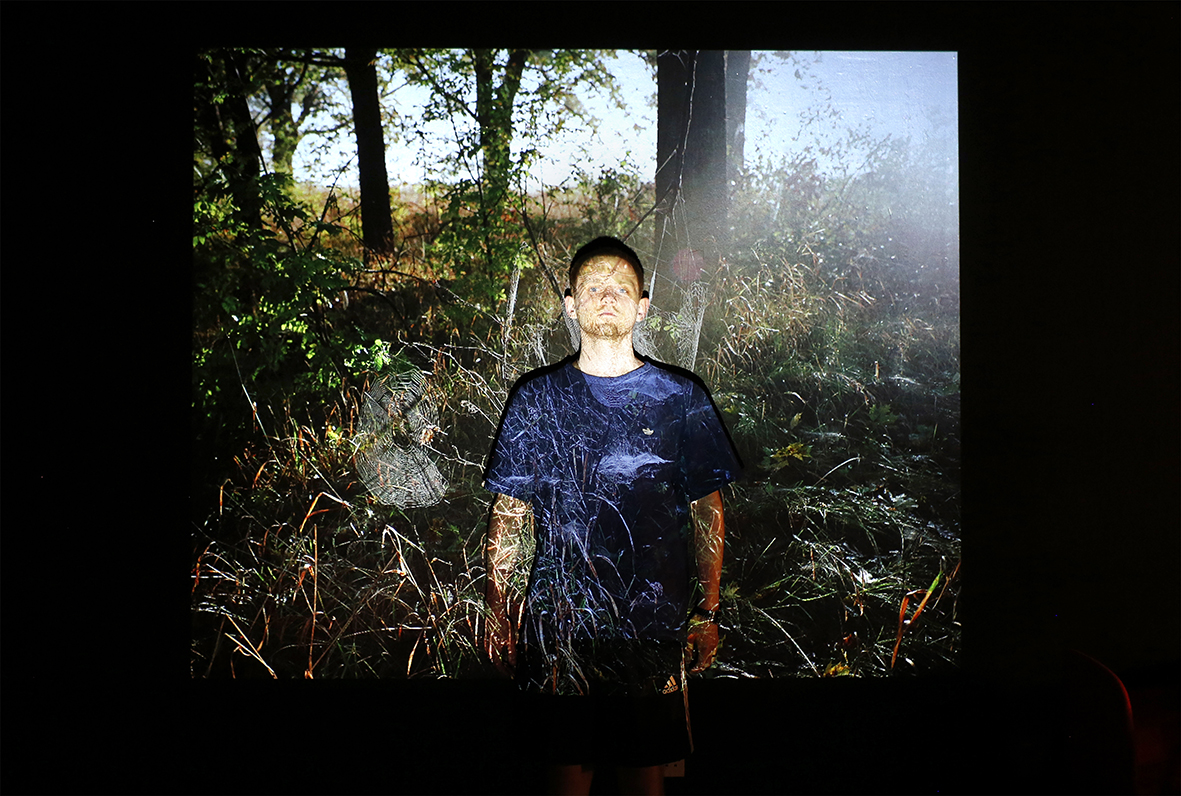


02 06 2023
Photographer in Residence, Cannock Chase
GRAIN Projects, working in partnership with Forestry England, are delighted to be hosting a new Photographer In Residence opportunity at Cannock Chase, Staffordshire.
The opportunity will be awarded to a photographer or lens based artist. The applicant must be based in England and must submit their application by 2nd July 2023 (midnight). The Residency will take place from July – September 2023 and offers an Artist Fee of £2,500.
For this opportunity we are seeking proposals from those who are interested in responding to the environment of Cannock Chase and/or working with the communities of Cannock Chase. The new work must be made before the end of September 2023. This opportunity is part of a broader series of continued professional development opportunities conceived and developed by GRAIN, supported by Arts Council England and Birmingham City University.
Cannock Chase and the West Midlands Region The West Midlands region is one of nine regions in England. Geographically diverse, the region has the urban central areas of the conurbation surrounding Birmingham to the rural western counties of Shropshire and Herefordshire which border Wales. The region encompasses five Areas of Outstanding Natural Beauty including Cannock Chase. Cannock Chase Forest (CCF) covers 2684 hectares of coniferous and broadleaf woodlands and open land in Staffordshire in the West Midlands, between the towns of Stafford to the northwest, Cannock to the south and Rugeley to the east – Birmingham city centre is 20 miles to the south. Cannock Chase is mainland England’s, smallest AONB. Most of the forest is freehold as part of the public forest estate and is designated as Open Access land. Much of the woodland in the west and north eastern corner of the plan area is leased to Forestry England however, and access in these areas is restricted to Public Rights of Way. The area lies within the Cannock Chase Area of Outstanding Natural Beauty (AONB) and the majority of Forestry England land is made up of conifers planted for timber production. There are also areas of ancient woodland, wetland, wood pasture and open heathland within the forest.
We would like to see applications from photographers and artists who are interested in issues affecting the forest and themes that can be explored through the forest and its communities. Ideas that applicants may like to focus on could include; forest eco systems, ancient woodland and wetland, forest industry, forest community, place-making, AONB contexts, health and wellbeing, the relationship with the urban. We are open to innovative approaches that push the boundaries of photography practice including socially engaged practice.
The Residency has been designed to support excellence in photography and is intended to provide artists with time to think, research, reflect and/or experiment with new ideas, to enable the research and development of new work in the context of Cannock Chase. Applicants must demonstrate that they have a professional practice and a track record of working at a professional level. They must also evidence a high level of quality, imagination and ambition in their work. The Residency can support practitioners at different stages in their career.
For more information and how to apply please click here.
Image Credit: Cannock Chase, courtesy of Forestry England
26 05 2023
Jonny Briggs
We are delighted to announce the exhibition of new work by artist Jonny Briggs at the V&A Wedgwood Collection, the museum of Wedgwood’s design history and creative future located in the Potteries.
In 2021 GRAIN commissioned Jonny to create new work in response to the Wedgwood collection. The two new diptychs go on display at Wedgwood, Barlaston, from Wednesday 7th June 2023.
The works are made up of multiple photographs masquerading as single, fractured artworks. The artist is interacting with images of stripes, within the mouth and along the fault lines of the fractures. The shape of the cracks are symmetrical and yet the fragments are not. Mirroring, splitting and the blurred boundary between self and other frequently reoccur in the artist’s practice.
In his research and collaboration Jonny connected with the black and white stripes of Wedgwood, thinking of the dazzle as a form of hiding and referencing his queer experience of sometimes feeling safe to show his identity and other times needing to hide. The fractures in the artwork introduce ambiguity and disorder, they celebrate imperfection, and are staged accidents to disrupt the precision and perfection of Wedgwood. They were inspired by the large bags of misshapes disgarded in production and seen in the factory.
Josiah Wedgwood utilised ceramics to amplify his voice and to achieve social change. Terms used for the physical form of a vase include neck, ‘the neck of a vase’ and mouth, ‘the mouth of a vase’. The artist explores the oral significance of the objects in the collection and the mouth as a site for both eating and the voice. He highlights the importance of having a voice within Wedgwood’s work.
The frames are made of photographic prints, mounted on to aluminium, within wooden frame, masquerading as fractured ceramic. These materials are ambiguous.
The artist worked with the students of Portland School & Specialist College, Stoke on Trent, during the latter stages of the project to share his ideas and inspire creativity.
Commissioned by GRAIN Projects and supported by Arts Council England.
Jonny Briggs is a multidisciplinary artist best known for his idiosyncratic brand of highly autobiographical, self-psychoanalytical and yet universally relatable photography, whose arresting, hybridised, multi-media creations operate in the interstices between fact and fiction. Jonny has been awarded numerous significant prizes and opportunities, has exhibited nationally and internationally and his work is in numerous international private and public collections.
Please visit www.worldofwedgwood.com for opening times and details.
www.jonnybriggs.com
Image Credit: Gag 1 (artist’s mouth gripping stripes), 2023, Jonny Briggs
23 04 2023
Heritage & Identity Portrait Project
GRAIN Projects are working in collaboration with SAND and artist Ming de Nasty to make a collection of empowering portraits of older LGBT+ residents in Shropshire.
The project will focus on expression and celebration and will highlight lived experiences of those taking part. There will be 12 participants from across Shropshire who will make the portraits with Ming and speak of the story behind the picture.
The project will provide an opportunity for individuals to tell their story and control their image. Ming de Nasty’s photography offers a different perspective, with individuals expressing a confidence and sense of identity in their gaze and position. Her portraits are acclaimed and award-winning and speak of diversity and challenging stereotypes.
Ming de Nasty has been a professional photographer for 35 years and has worked on projects locally and nationally, exhibiting widely throughout the UK. Her most recent projects include ‘Queer Country’ a photographic project looking at queer-identifying individuals in Wales and what it means to be living in a rural environment; ‘Tagmasc’, for Birmingham’s SHOUT! Festival 2020, where she worked with queer identifying men in Birmingham to make a series of photographic portraits and audio monologues; and in 2018 a Residency with IKON Gallery, Birmingham to undertake a commission on The Slow Boat, working with asylum seeking women to create a photographic installation along the Birmingham Canal of their portraits which were printed and displayed 3 metres high on buildings along the waterway.
The project is a partnership between SAND and GRAIN Projects, supported by Arts Council England.
Image credit; Mike Southern by Ming de Nasty
17 02 2023
The State of Photography
National Symposium
*Fully Booked* Email stephen.burke@GRAINPhotographyHub.co.uk to be added to the waiting list
21st April | 9:30 am – 17:30 pm
Birmingham City University
£25 – £30 | Book here
The State of Photography will consider, explore, debate and review how photographers and photography practice responds and develops in this time of uncertainty and injustice. For the first time in four years we meet in person at this national symposium to hear from those who are creating new discourse and criticality as they look at the world today exploring life, love, home, land, and identity. We consider how the current volatile and more accelerated circumstances impact on photographer’s projects, on how we care and change, and how we are presented with an opportunity to grow and be inspired.
We invite acclaimed and outstanding photographers and guests to join us to discuss what this rethinking looks like during this unsettling time. What does the world look like to photographers? Each have different approaches as we hear from those whose work is based on their own lived experience, who in a more closed and divided world have looked inside and at themselves as a starting point, putting their own experience and context front and central.
The role of photography is changing and caring, as experience, collaboration and social responsibility become the focus. Photography can impart the greatest truth of our times and sheds light on injustices, inequality and other aspects of our lives and society. It seems today –more essential than ever to explore the role that photography can play.
During the national symposium we will hear from the perspective of those who share our concerns about the present and offer a diverse range of practices, experiences and stories that shed light on our unsettling world.
Speakers Include:
- Arpita Shah
- Camilla Brown
- Clare Hewitt
- Jermaine Francis
- Joanne Coates
- Katy Barron
- Lydia Goldblatt
- Mark Neville
- Maryam Wahid
- Sam Laughlin
Prices:
- Concession: £25
- Standard: £30
*Please note prices include tea/coffee at registration but do not include lunch.
Book your tickets here.
*Fully Booked* Email stephen.burke@GRAINPhotographyHub.co.uk to be added to the waiting list
14 02 2023
Mark Neville
GRAIN are delighted to be working with artist Mark Neville to make a unique photography project with young people from the Ukraine who are new residents in Birmingham. The project is delivered in partnership with Centrala.
In this new project commissioned by GRAIN, Neville will be engaging with the young people to think about their experiences over the last 12 months, to explore their lives before the conflict juxtaposed with their recent arrival in Birmingham and attempts to settle and feel part of the city and its communities. Mark’s home is in Kyiv, Ukraine.
“Mark Neville has re-imagined what documentary photography could be, should be. Instead of the bland ‘deconstructions’ that pass so lazily as ‘critical’ in contemporary art, he makes extraordinary pictures and finds extraordinary ways to get them back to those he has photographed.” – David Campany
Mark Neville works at the intersection of art and documentary, investigating the social function of photography. He makes lens-based works which have been realised and disseminated in a large array of contexts, as both still and moving image pieces, slideshows, films, and giveaway books. His work has consistently looked to subvert the traditional role of social documentary practice. Often working with closely knit communities, in a collaborative process intended to be of direct, practical benefit to the subject, his photographic projects to date have frequently made the towns he portrays the primary audience for the work.
In 2016 Neville began work on a book project called ‘Stop Tanks With Books’. The concept was to weaponise the medium to effect change. He aimed to garner international support for Ukraine in its’ continuing fight for independence, help end Russian aggression in Donbas, and call for the withdrawal of Russia from Crimea. The second aim was to counteract the wealth of fake news and racist disinformation the Kremlin was generating – material that Western media was often perpetuating and reproducing unchallenged and unchecked – by presenting real portraits of Ukrainians. The book has been sent out for free to a target audience of diplomats, politicians, peace negotiators, celebrities, NATO and EU members – everyone, in short, who had it in their power to help Ukraine. By 2019, and after several intense editing sessions with David Campany, the book was ready in embryonic form. The book was published by Nazraeli Press in California, who immediately recognized the urgency of the book and the threat from Russia.
In 2012 The New York Times Magazine commissioned Neville to make the acclaimed photo essay ‘Here is London’, which examined wealth inequality in the capital, and which they subsequently nominated for The Pulitzer Prize. This was quickly followed by a commission from the Andy Warhol Museum in Pittsburgh, America, which also looked at social inequalities. These two bodies of work were brought together in the touring solo exhibition ‘London/Pittsburgh’.
In 2011 Neville spent three months working on the front line in Helmand, Afghanistan, with the British Army as an official war artist. The films and photographs he made there featured in a major solo show at The Imperial War Museum London in 2014. More recently this war experience has resulted in The Battle Against Stigma Book Project, the overall aim of which is to challenge the stigma of mental health problems in the military. Neville’s book combines written testimonies about PTSD and adjustment disorder from serving and ex serving soldiers with the photographs he took of troops in Helmand, as a means to give some insight into the issue of adjustment disorder which he found he had fallen victim to on his return from the war zone. Throughout 2016 Neville personally disseminated 1,000 copies free to prison libraries, probation services, homeless shelters, and veteran mental health charities, in order to encourage more troops to come forward and seek treatment for adjustment disorder.
Neville’s work exists in different forms in many public and private collections, including those of the Arts Council of England, Kunstmuseum Bern, National Galleries of Scotland, Imperial War Museum, and Scottish Parliament. He has had major solo shows at venues which include The Photographers’ Gallery, London, Multimedia Art Museum of Moscow, Foundling Museum, London, QUAD in Derby, and the Imperial War Museum, and participated in group shows at Tate Britain, Jeu de Paume, Paris, and Haus Der Kunst, Munich. ‘Fancy Pictures’, the monograph published by Steidl, is the first commercially available book about Neville’s work and was one of Time Magazine’s best photo books of 2017, and also nominated for Aperture Photo Book of the Year 2017. Neville’s last book, ‘Parade’, was nominated for the Deutsche Börse Photography Foundation Prize 2020.
Image Credit: ‘Masha, 17 years old, with her mother Nina, just after de-occupation of Termakhivka in Kyiv Region’ by Mark Neville 2022.
www.markneville.com
07 12 2022
Lydia Goldblatt
GRAIN are excited to be working with photographer Lydia Goldblatt, for the commission ‘Fugue. The work focuses on the family, private and close public spaces and intimacy as she looks at questions of mothering, community, love, loss and time. The work is made in the family home, the community of nearby streets and is shot on film. In this body of work texts by the artist play an equally important role as the photographs.
The collaboration began in 2020, as part of a series of bursaries and commissions that were awarded in response to Covid 19, for more information please click here.
Lydia Goldblatt considers themes of origins, transience and emotional experience through a lyrical harnessing of photography’s primary characteristics of light, time and surface. Her quietly powerful and beautifully crafted prints creatively fuse the approaches of both documentary and constructed photography. Tenderly observed portraits and details of the human form are combined with enigmatic still lifes and abstract constructions suggestive of elemental forces. Together, the images examine the impulse for existence paralleled with the act of artistic creation. While complete in themselves, each photograph can be understood as part of a larger whole: an absorbing puzzle reflecting upon the capacity of photography as poetic expression and simultaneously exploring emblems of the cycle of life.
Goldblatt’s series Still Here was published as an artist monograph by Hatje Cantz, and is held in the collection of the Victoria and Albert Museum National Art Library. Her work has been exhibited internationally, including at the Felix Nussbaum Museum, Germany, Somerset House, London, the GoEun Museum of Photography, South Korea and the National Museum, Gdansk. She was awarded the Grand Prix at 2014’s Tokyo International Photography Festival, and in 2016 undertook a year’s artist residency at the Florence Trust in London, where she developed her series Instar.
21 11 2022
Modern Muse
£20.00 + Postage, order via Birmingham Museum & Art Gallery Shop
GRAIN commissioned a new series of portraits by Arpita Shah that explore South Asian female identity and have launched a new publication to accompany the work. The ‘Modern Muse’ portraits visually and conceptually explore the ever shifting identities and representations of South Asian women. Shah draws from and subverts Mughal and Indian miniature paintings from ancient and pre Colonial times as she examines the intersections of culture and identity, drawing on the women’s lived experiences and her own journey and life.
In her practice Shah focuses on the notion of home, diaspora, belonging and shifting cultural identities. Here she does this in collaboration with women who are also artists, creatives and educators based in Birmingham and the West Midlands. The portraits were collaborative in nature and during their participation the women spoke of their own experiences. Sections of their texts can be found in the new publication alongside the portraits.
As part of the publication GRAIN commissioned new writing by Alina Khakoo. ‘Modern Muse & South Asian Feminism’ explores these portraits as a collective and community within a social genre. A further legacy for the series is the acquisition of the portraits by Birmingham Museums Trust.
Ruth Millington was commissioned to interview Arpita Shah about ‘Modern Muse’. The writing can be found here.
Modern Muse, £20 + Postage
Order via Birmingham Museum & Art Gallery online shop here.

About Arpita Shah:
Arpita Shah is a photographic artist and educator based in Eastbourne, UK. She works between photography and film, exploring the intersections of culture and identity. As an India-born artist, Shah spent the earlier part of her life living between India, Ireland and the Middle East before settling in the UK. This migratory experience is reflected in her practice, which often focuses on the notion of home, belonging and shifting cultural identities. Shah’s work tends to draw from Asian and Eastern mythology, using it both visually and conceptually to explore issues of cultural displacement in the South Asian diaspora.
Arpita’s work has been exhibited across the UK and internationally, including at the Detroit Center of Contemporary Photography (2013); Tramway in Glasgow (2014); Dr. Bhau Daji Lad Museum, India (2015); Chobi Mela IX in Dhaka, Bangladesh (2017); Autograph APB in London (2018) Street Level Photoworks in Glasgow (2019) Harbour Front Centre in Toronto (2019) and Impressions Gallery in Bradford (2020). She is the recipient of the 2019 Light Work + Autograph ABP Artist-in-Residence programme in Syracuse New York and her work is held in the collections at the National Galleries of Scotland.
www.arpitashah.com
Image Credit – ‘Haseebah’ Modern Muse © Arpita Shah
11 08 2022
CONSTRUCT by Anthony Luvera
Exhibition, Snow Hill Square, Birmingham, 14th September – 13th October 2022.
CONSTRUCT is a body of work by the socially engaged artist Anthony Luvera, created between 2018 and 2022 in collaboration with people who have experienced homelessness in Birmingham. Commissioned by GRAIN Projects and delivered in collaboration with SIFA Fireside.
Over four years, Luvera has been embedded within the support services of SIFA Fireside, Birmingham’s main day centre for homeless and vulnerably housed adults. The artist began by working in the kitchen, preparing and serving meals, before inviting participants to explore photography through regular meetings and workshops. Over 50 people took part, using disposable cameras to document their experiences and camera phones to share images. Throughout the lockdowns of the COVID-19 pandemic, Luvera continued working with participants by online platforms, post, telephone, and email.
Participants were also invited to make a self-portrait for the artist’s ongoing series, Assisted Self-Portraits. To create an Assisted Self-Portraits, Luvera meets each participant in locations that are important to them, to teach the individual how to use digital medium format camera equipment with a tripod, handheld flash, cable shutter release, and laptop. The final portrait is selected by the participant.
From the 14th September – 12th October 2022 the 21 Assisted Self-Portraits were exhibited in Snow Hill Square and a selection of photographs by participants were shown in Snow Hill Station. Presented in partnership with Colmore BID.
CONSTRUCT extends the artist’s ongoing work made with people experiencing homelessness in towns and cities across the United Kingdom over the past twenty years.
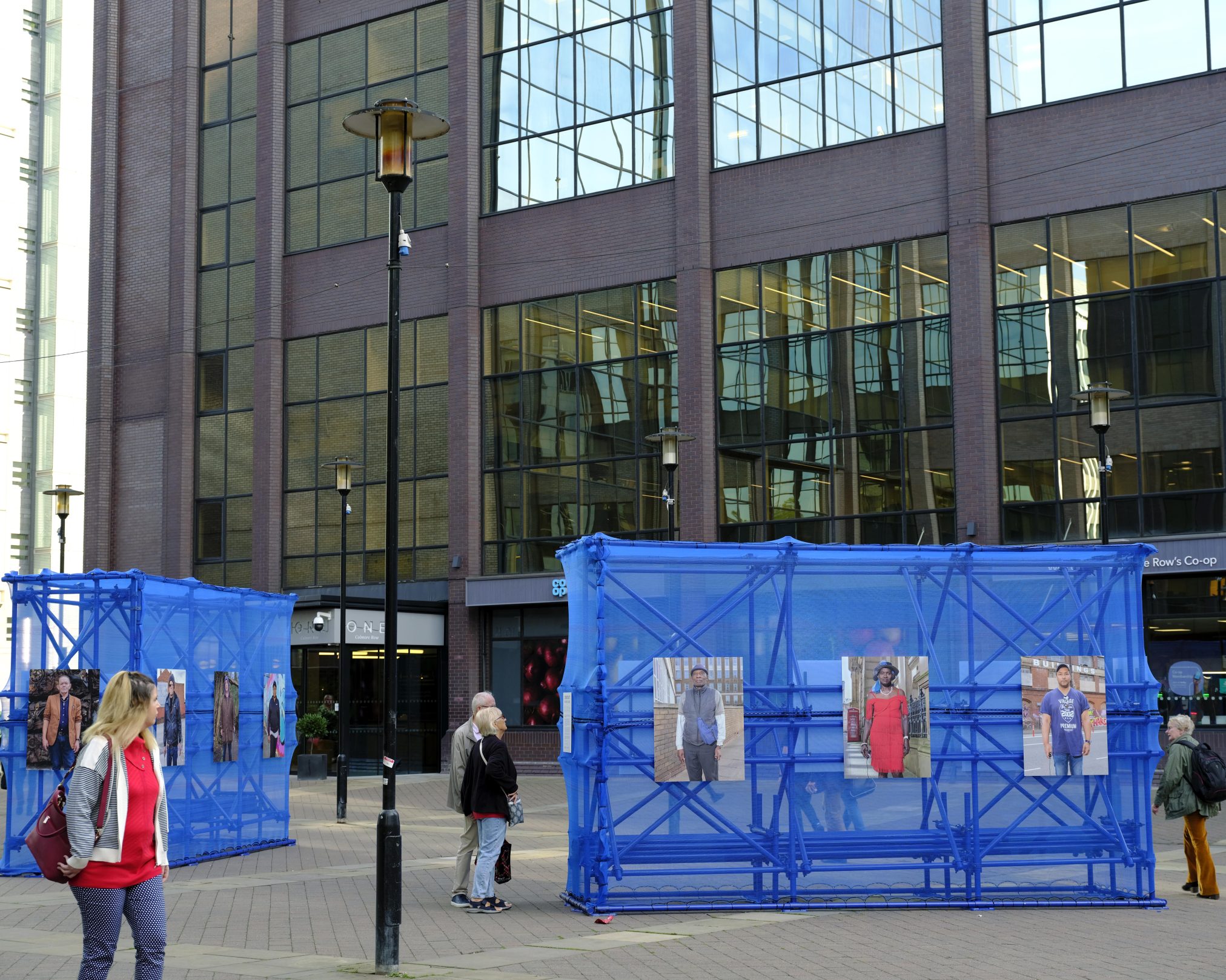
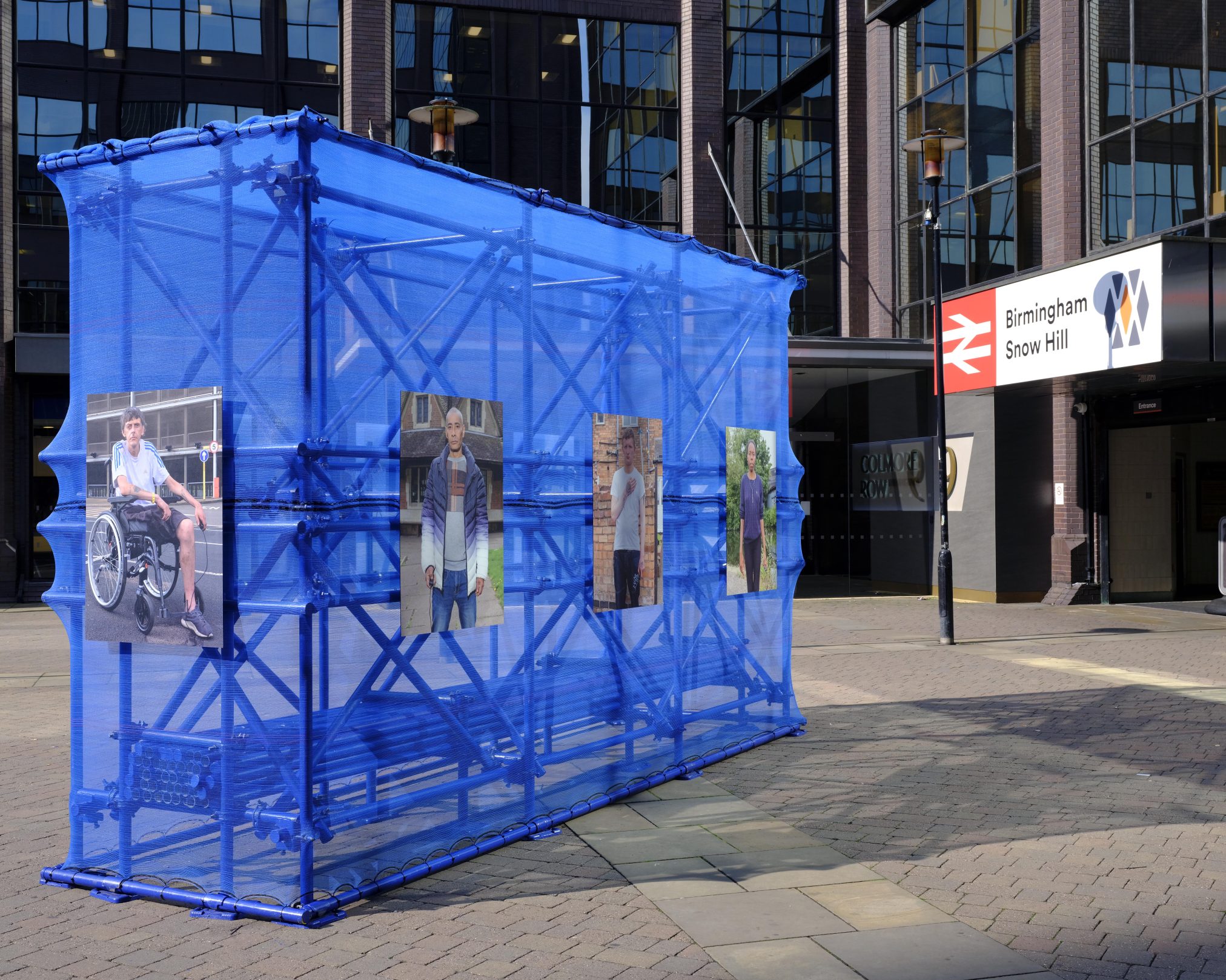
We would like to thank all the project partners for their support:

01 03 2022
Faces of 2022
Birmingham 2022 Festival presents FACES OF 2022, a celebratory project about pride, place, identity and heritage. A Creative City Project generously supported by Birmingham City Council.
The photography project, in collaboration with the people of Perry Barr, will see artists working with groups and individuals in the area to capture stories, share family photographs and take part in workshops. Perry Barr is at the heart of the Commonwealth Games and at the heart of the city, the people of this distinct place are proud Birmingham residents with amazing stories to tell and contributions to be celebrated.
Artists will be working in the area to lead workshops and to create artwork that will be exhibited in public spaces during Birmingham 2022. A series of new portraits, by renowned and acclaimed photographer Maryam Wahid, will be made of individuals who have contributed to culture and community in Perry Barr. In addition, workshops with local people will take place where participants will be invited to illustrate and to share their unique histories, experiences and stories of their lives.
Further information on the public exhibitions can be found here and on social media over the next few months.
FACES OF 2022 is a partnership between GRAIN Projects and the Black Arts Forum for Birmingham 2022, and is generously supported by Arts Council England and National Heritage Lottery Fund.


